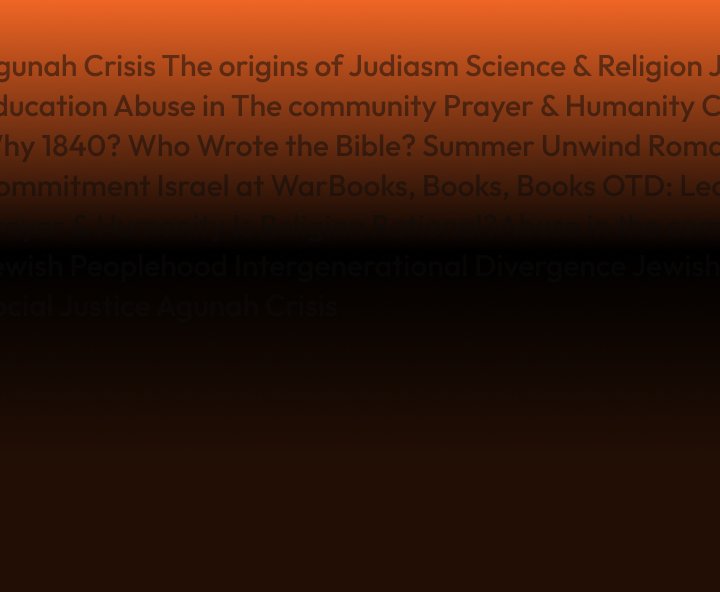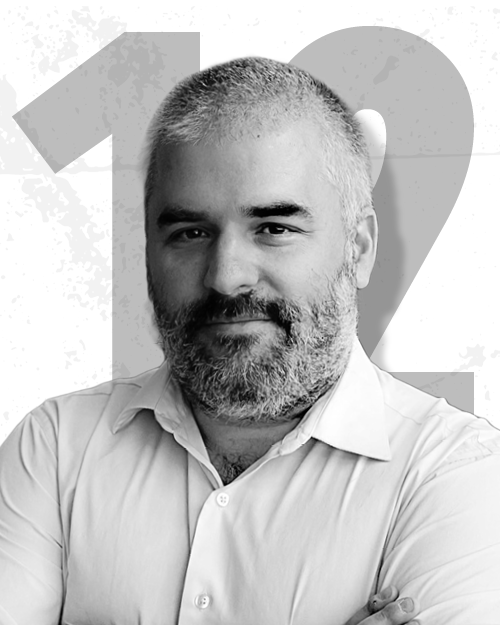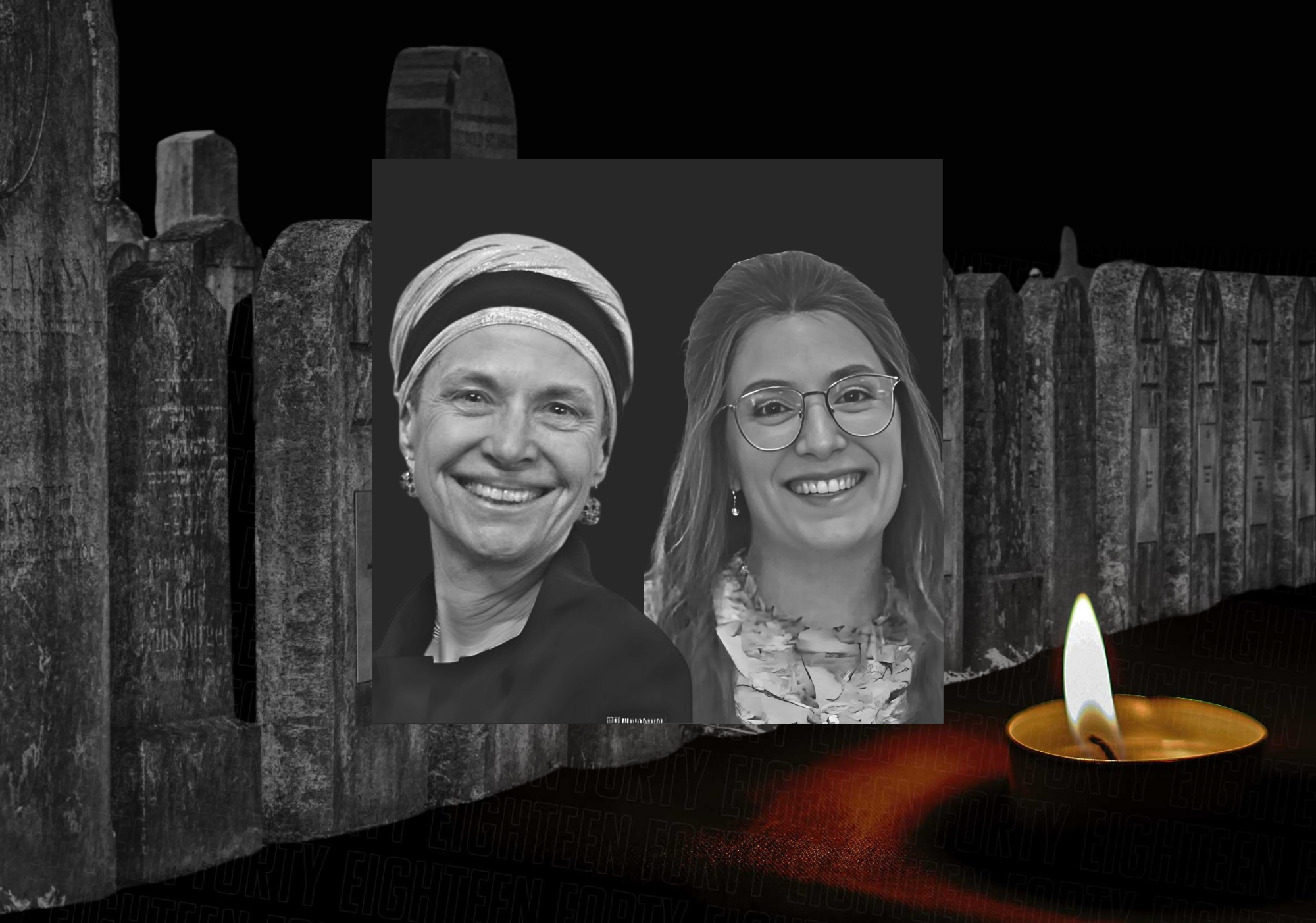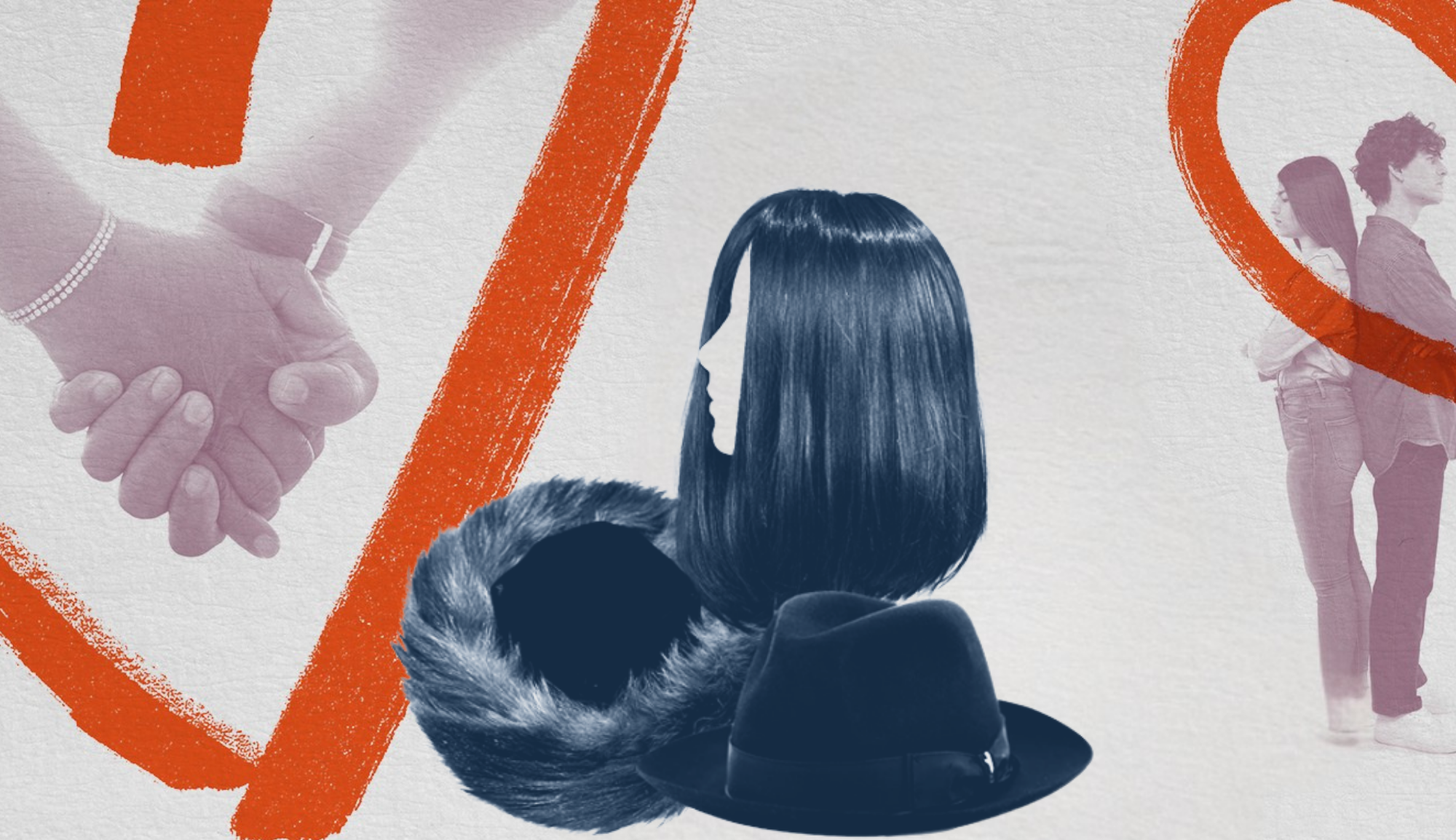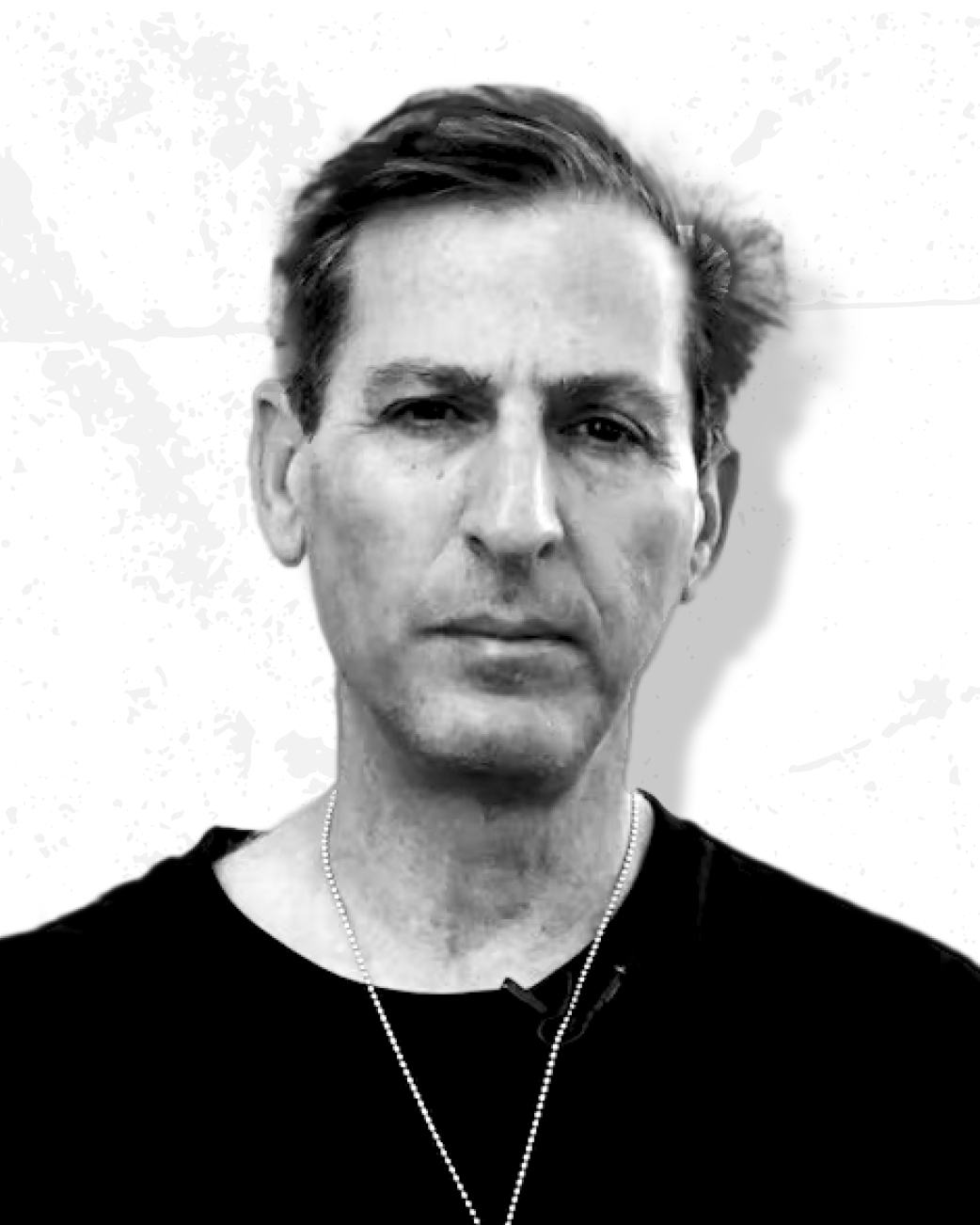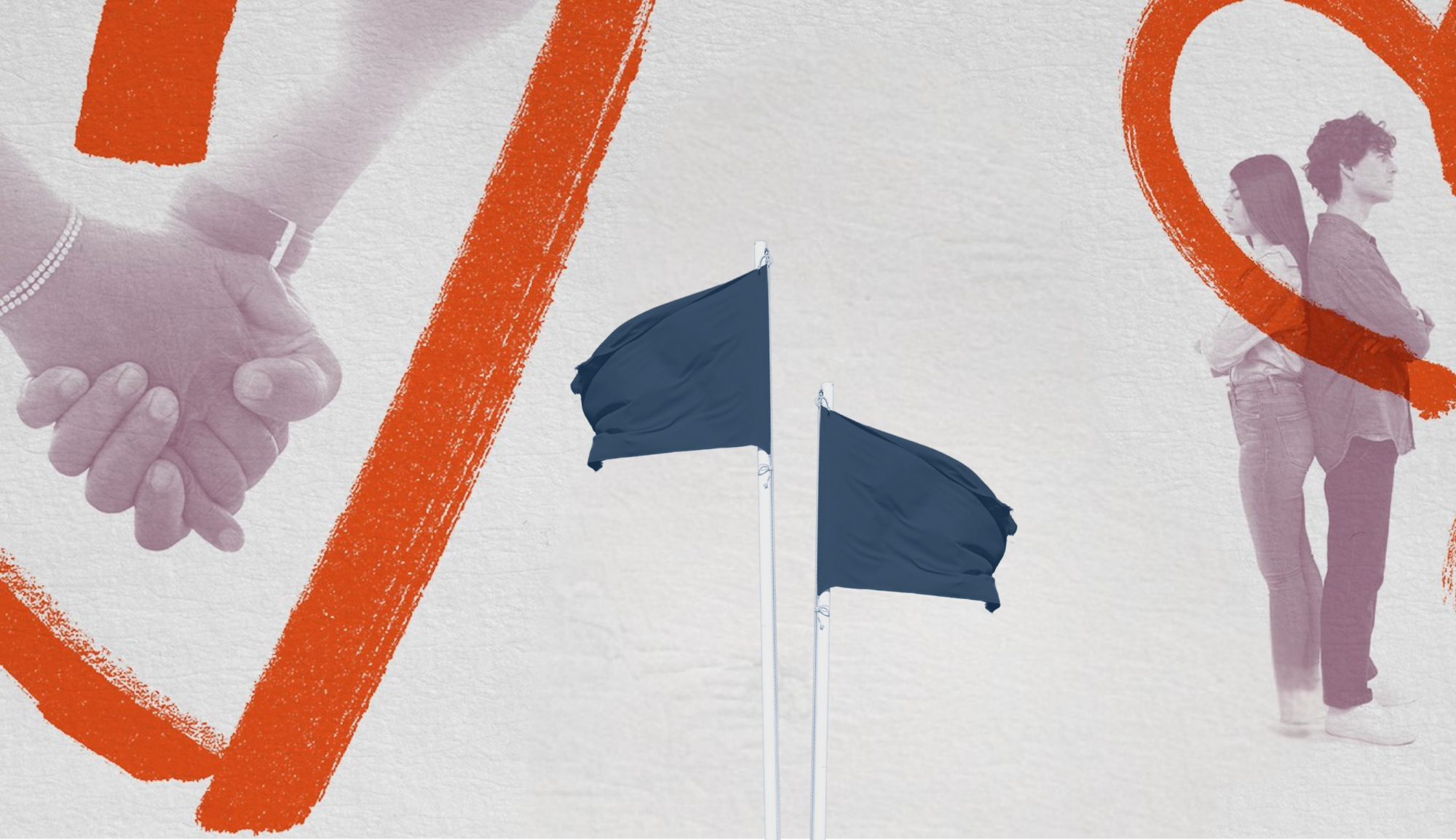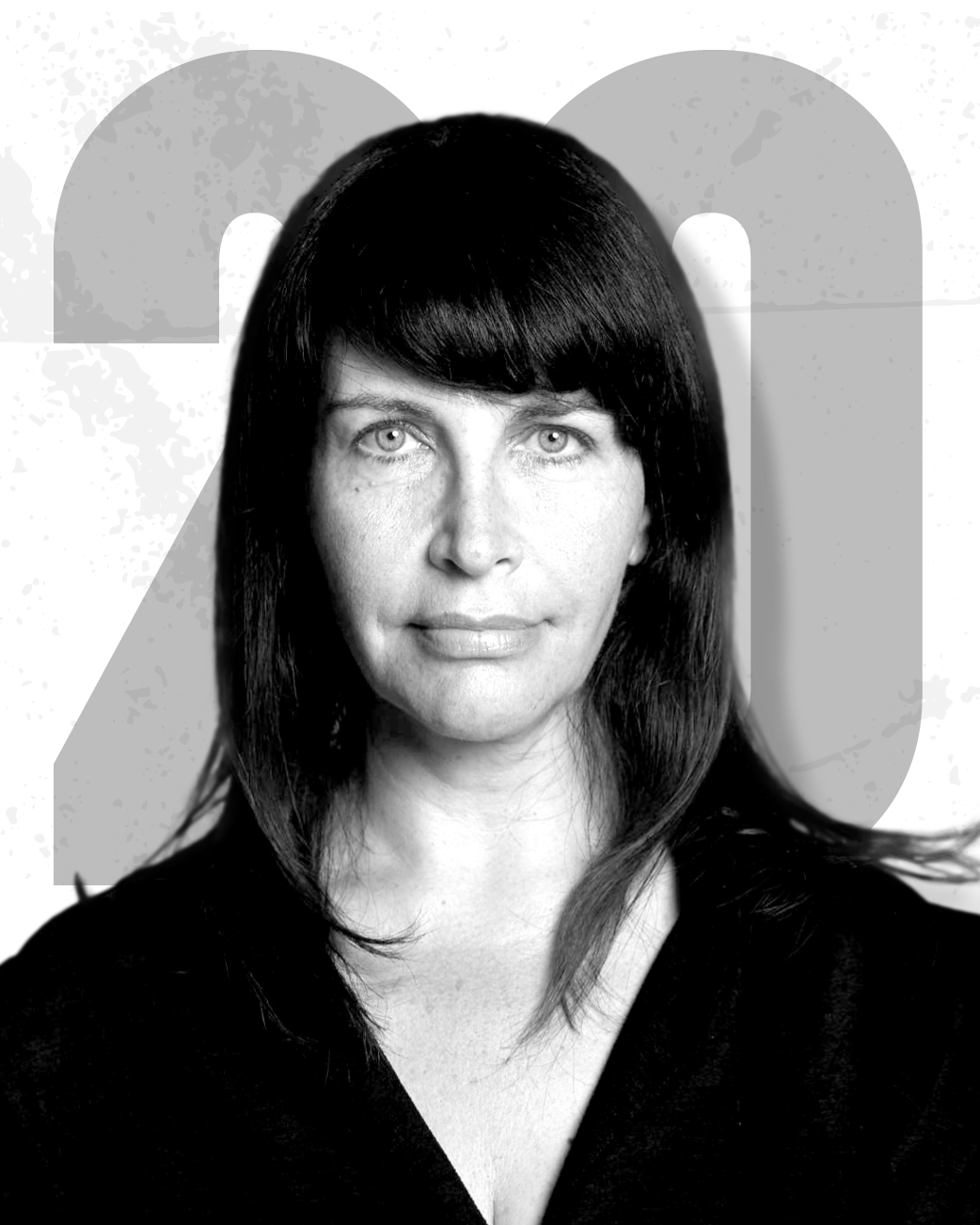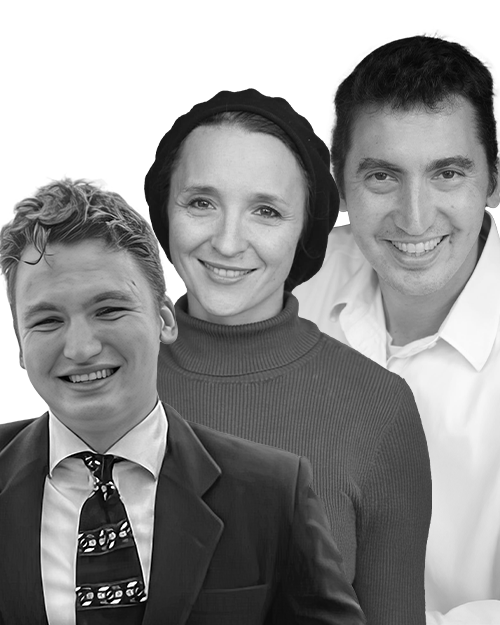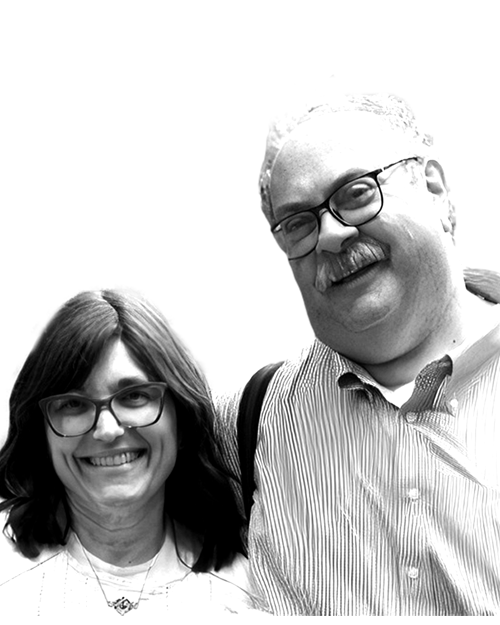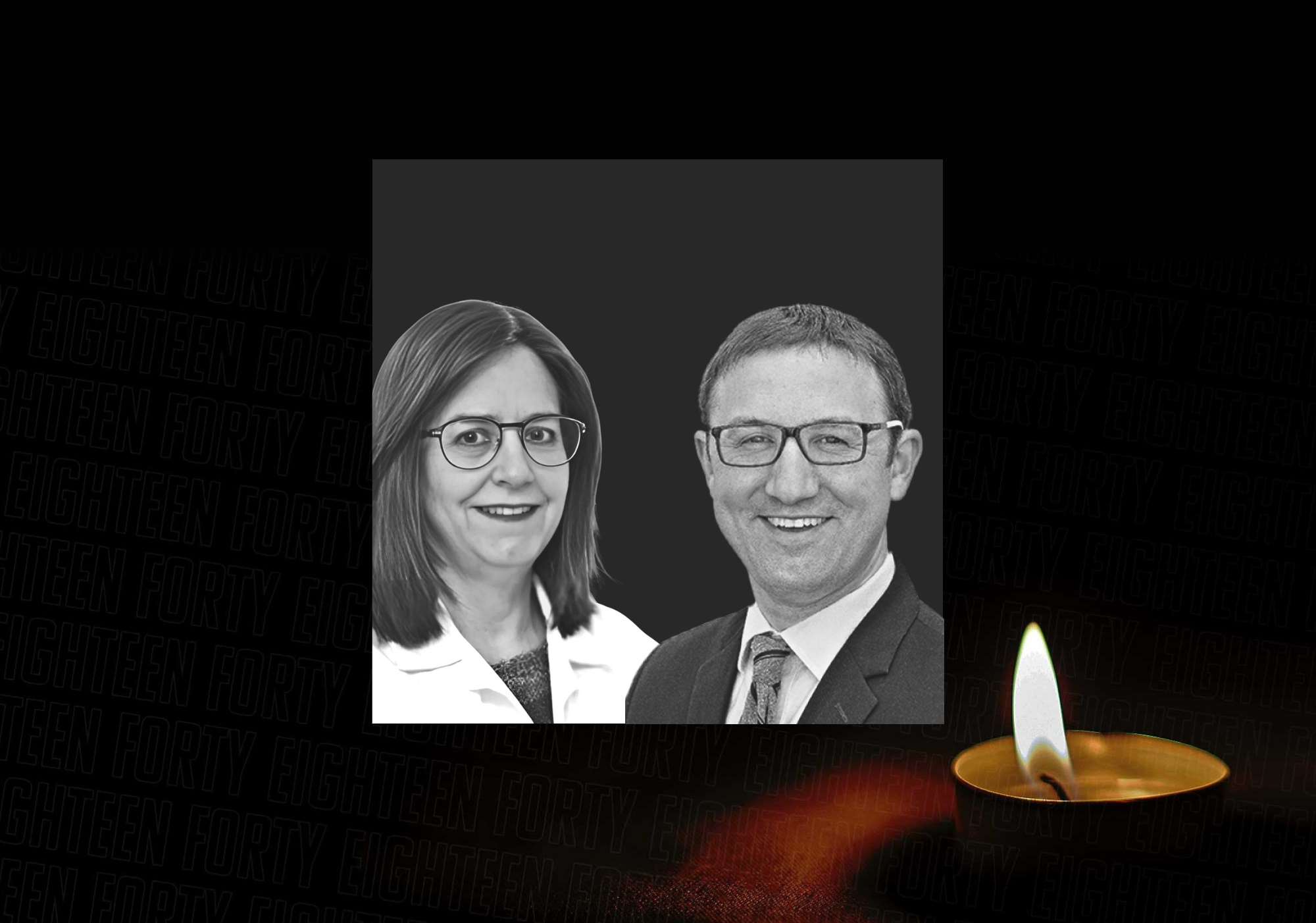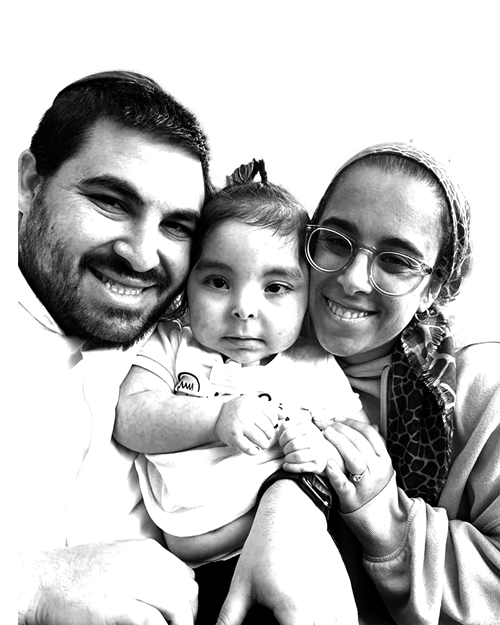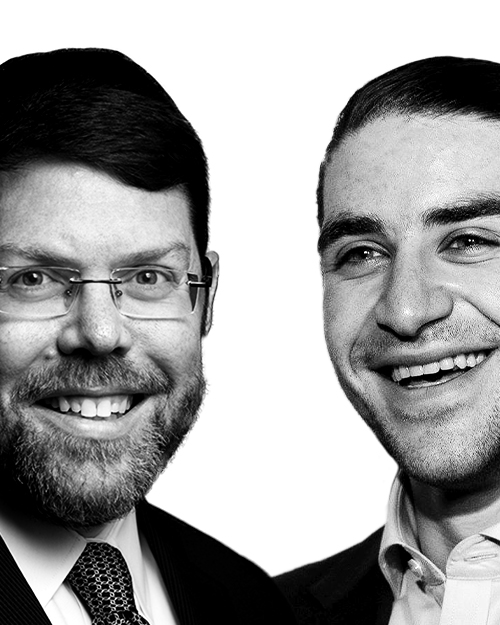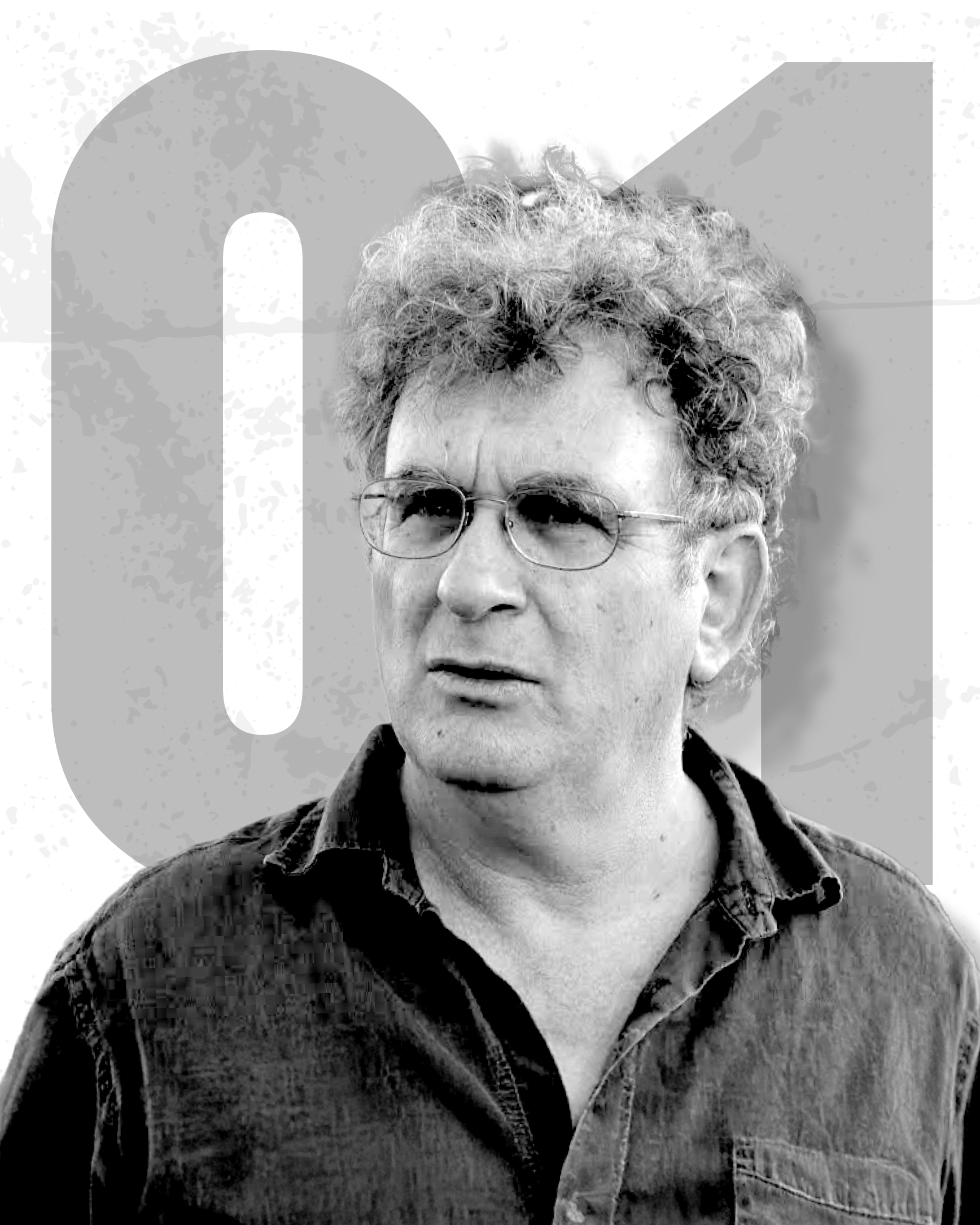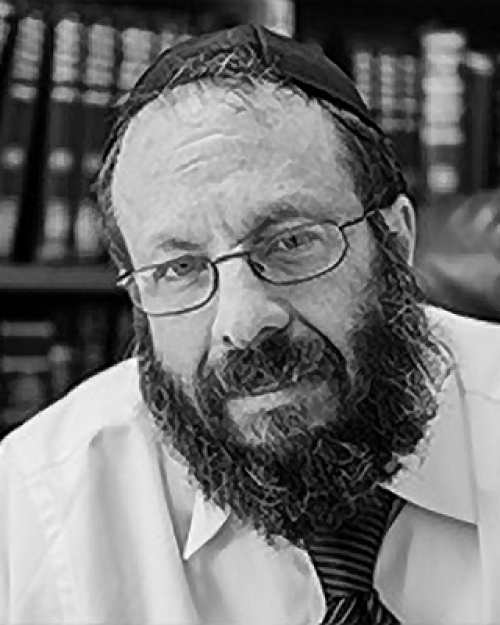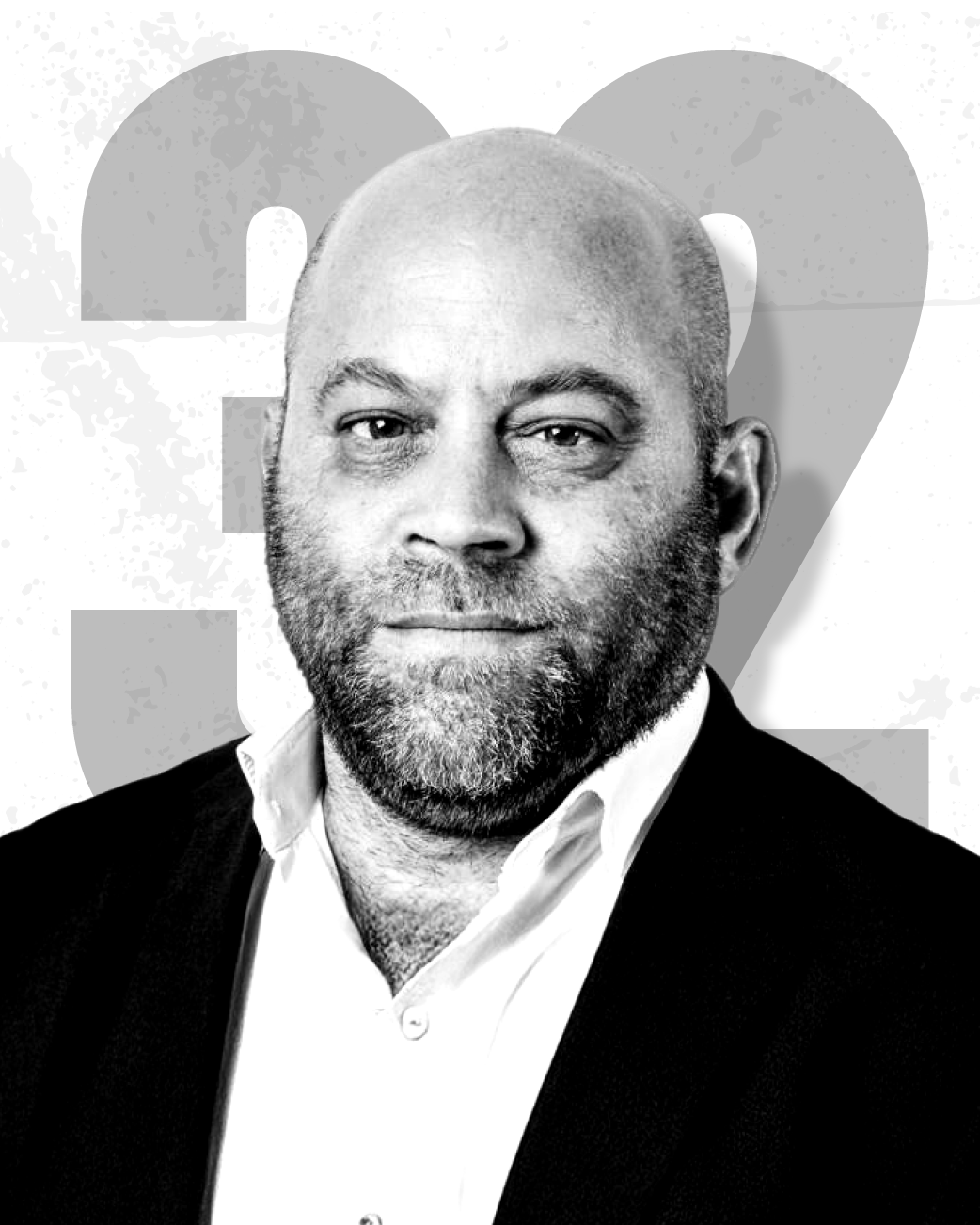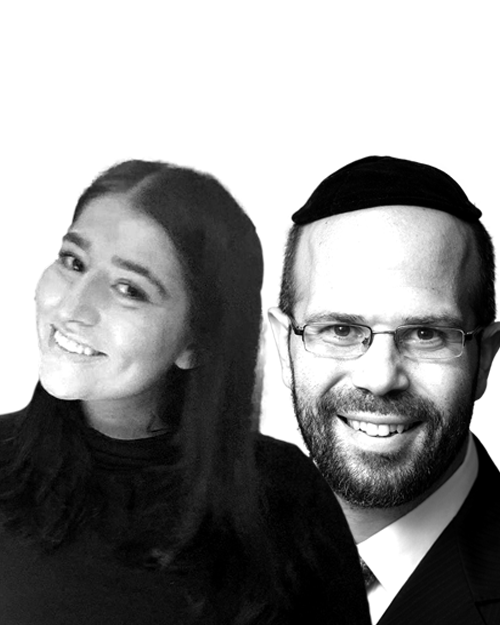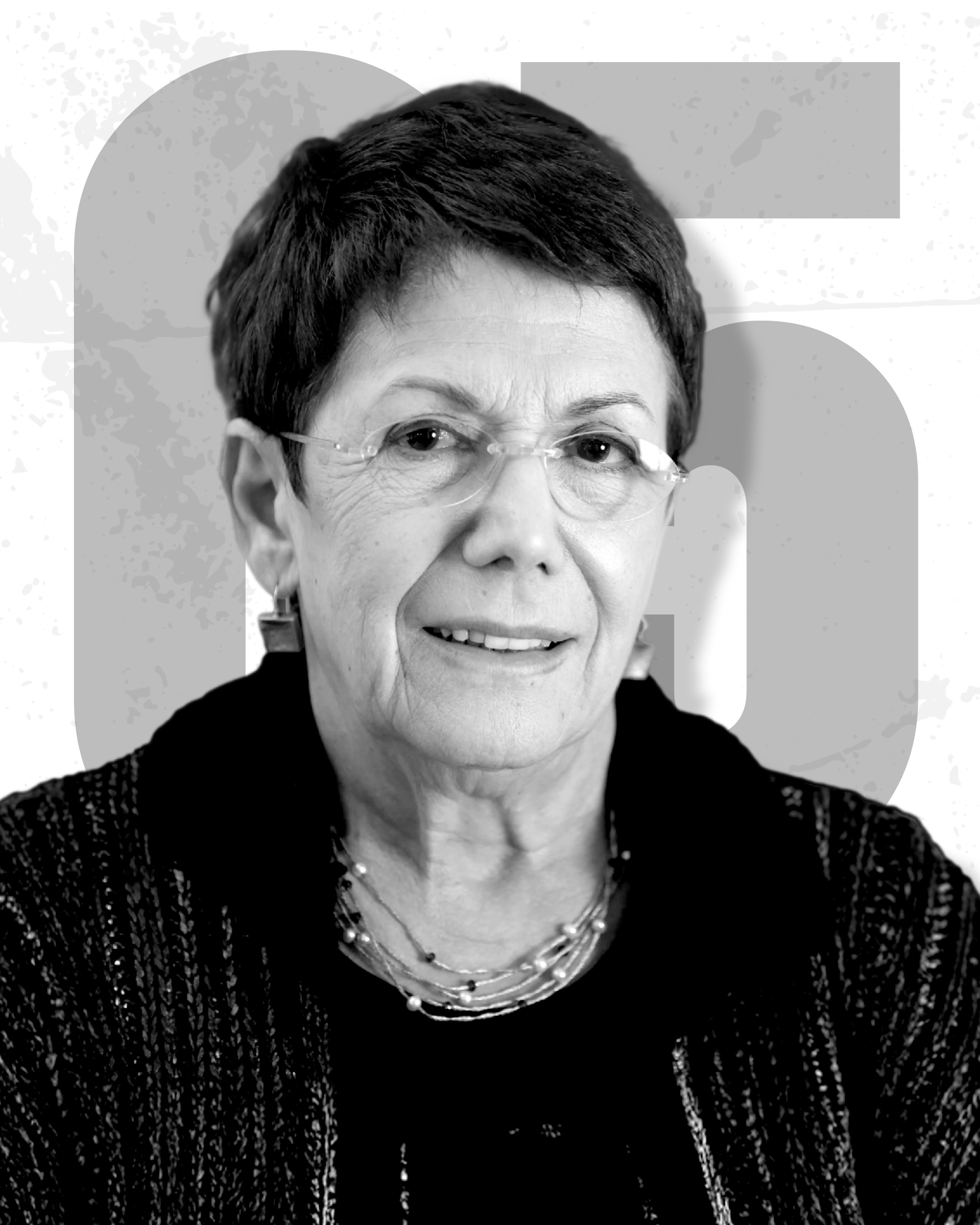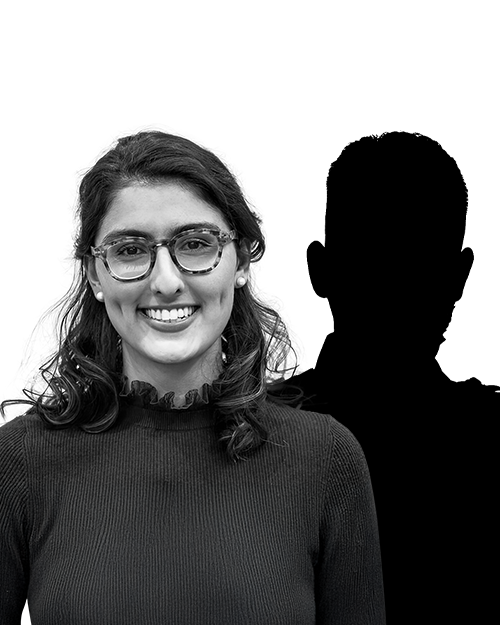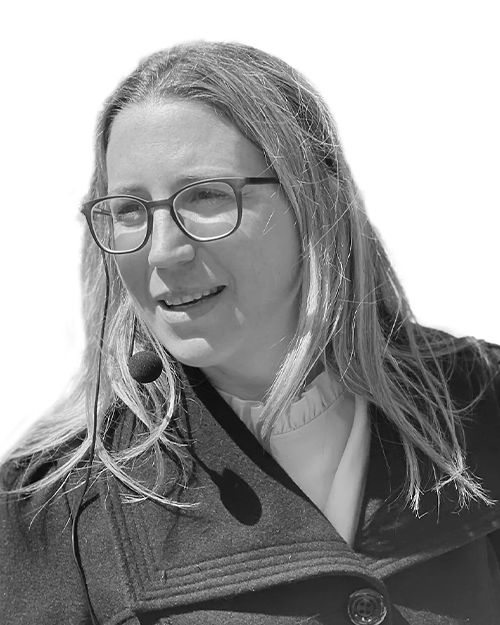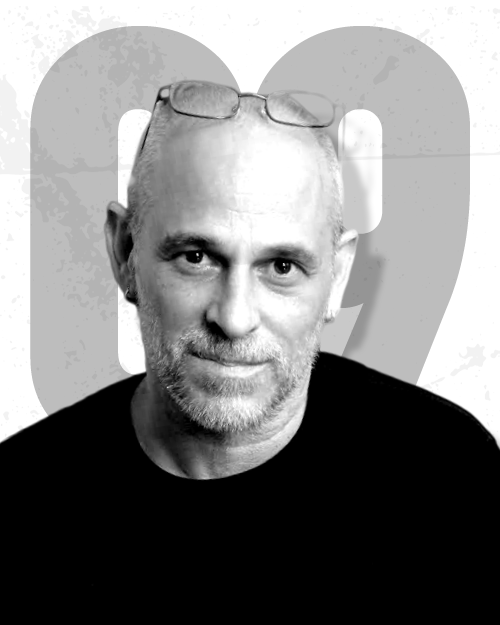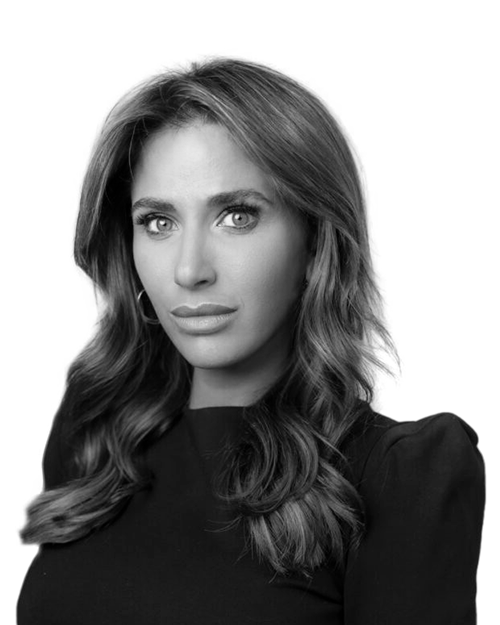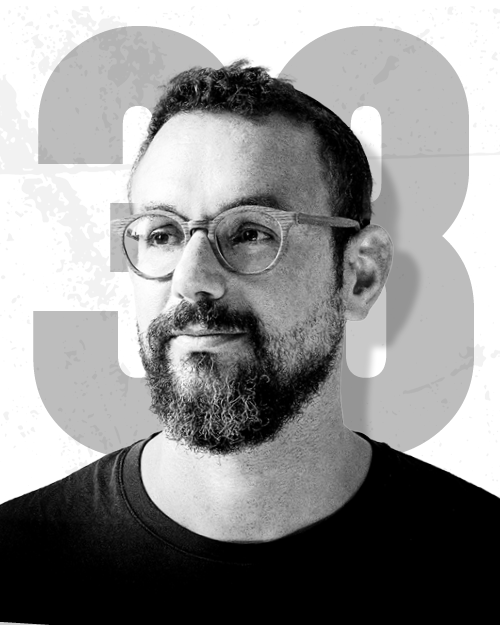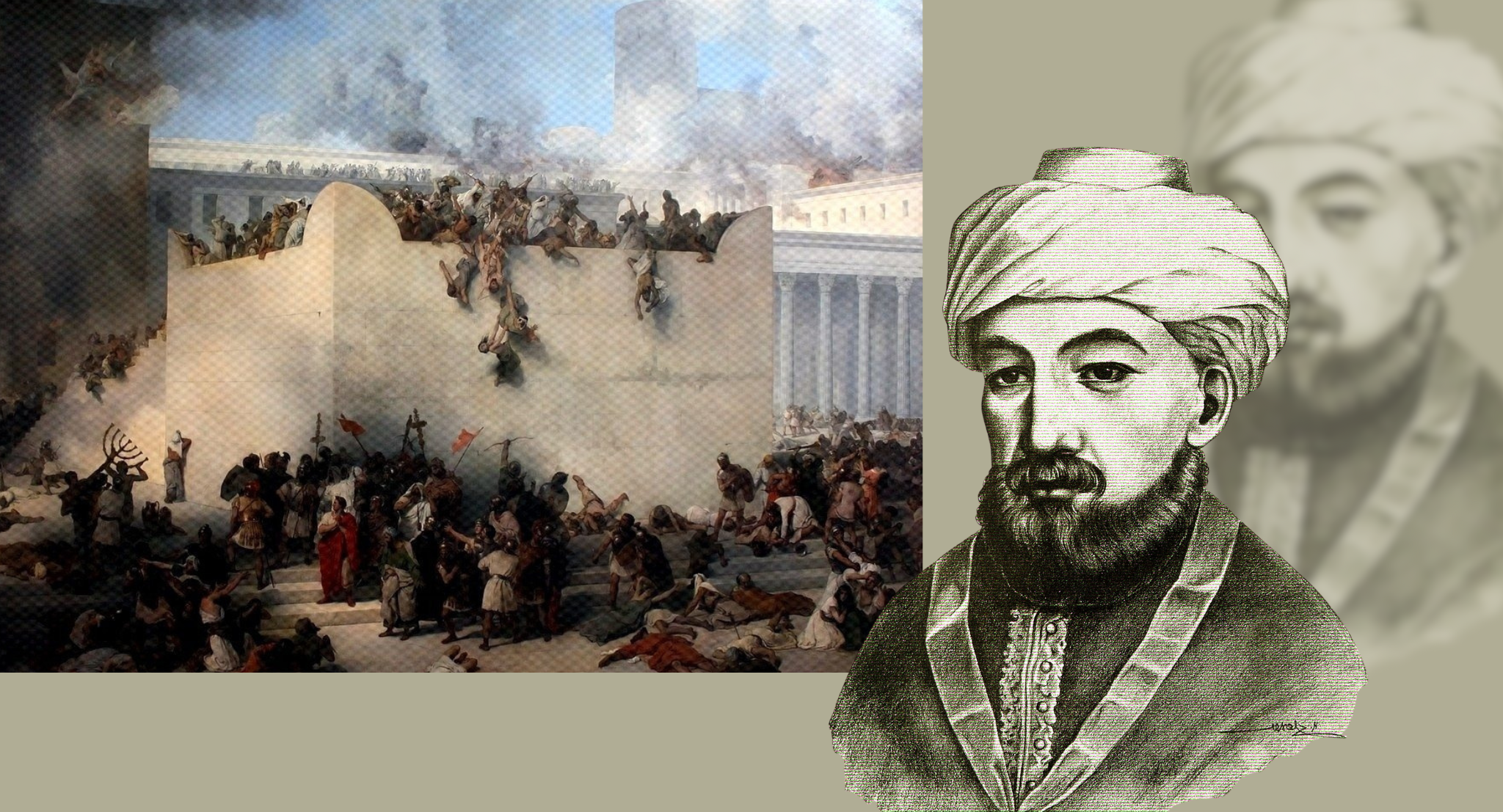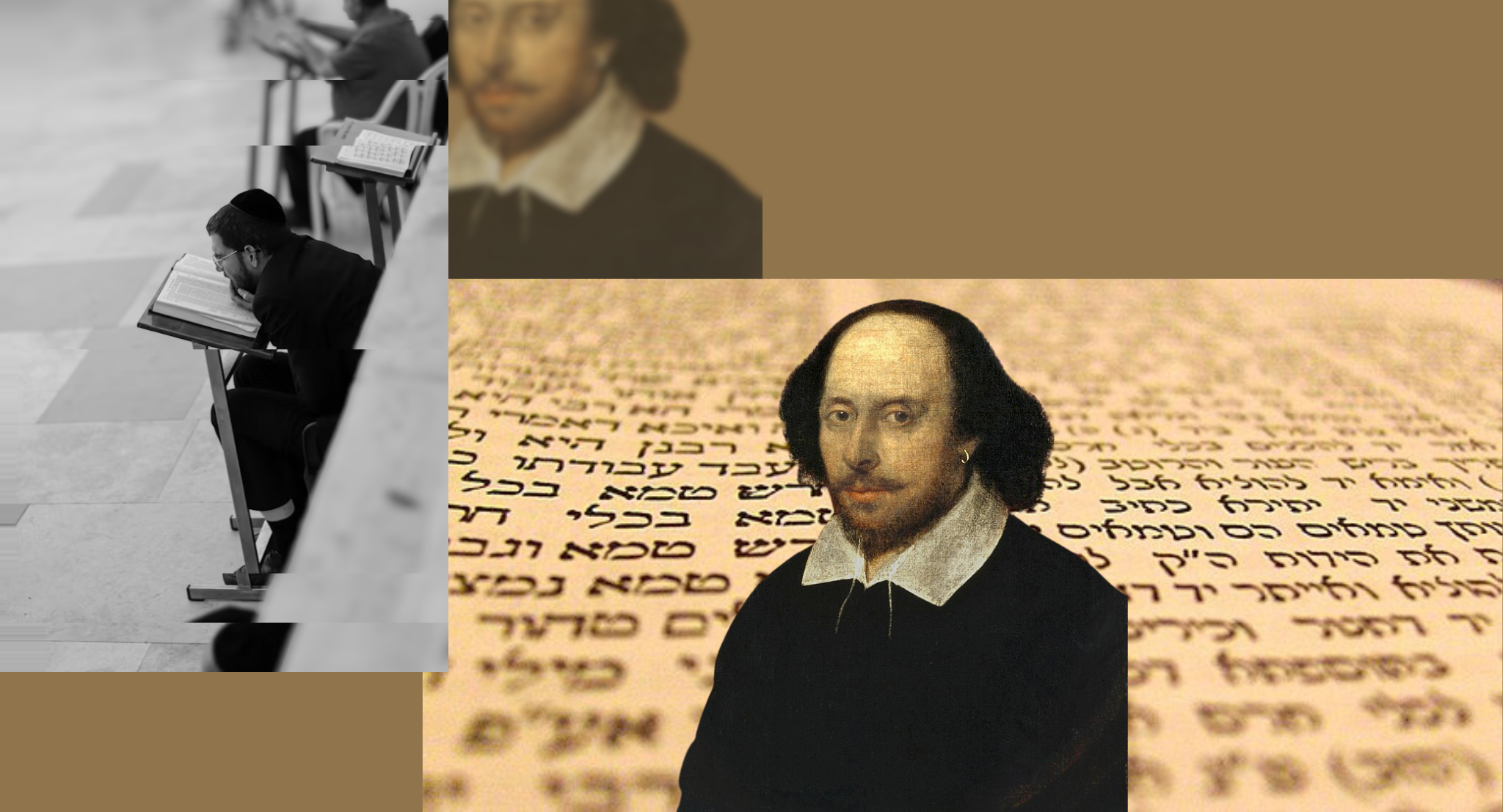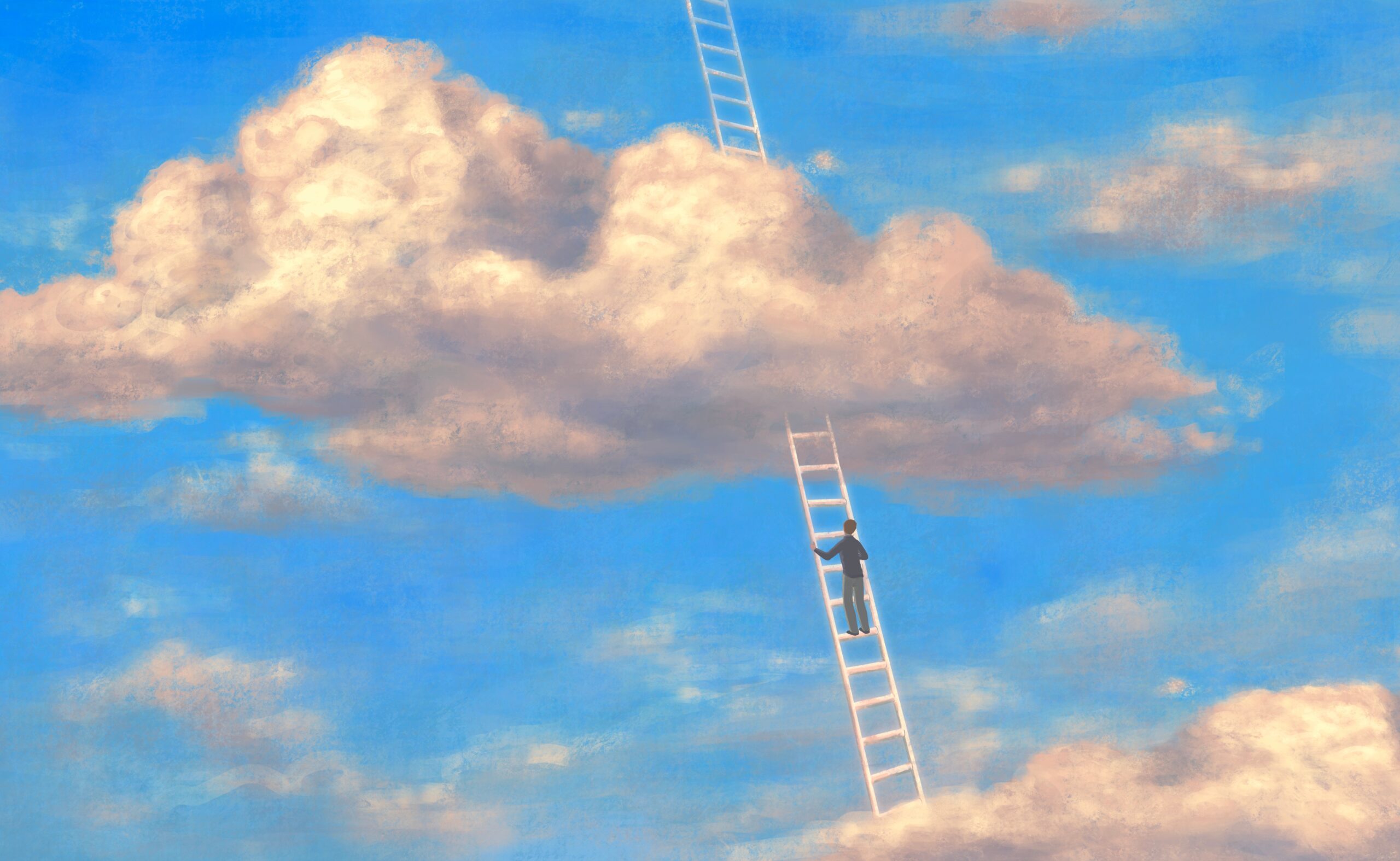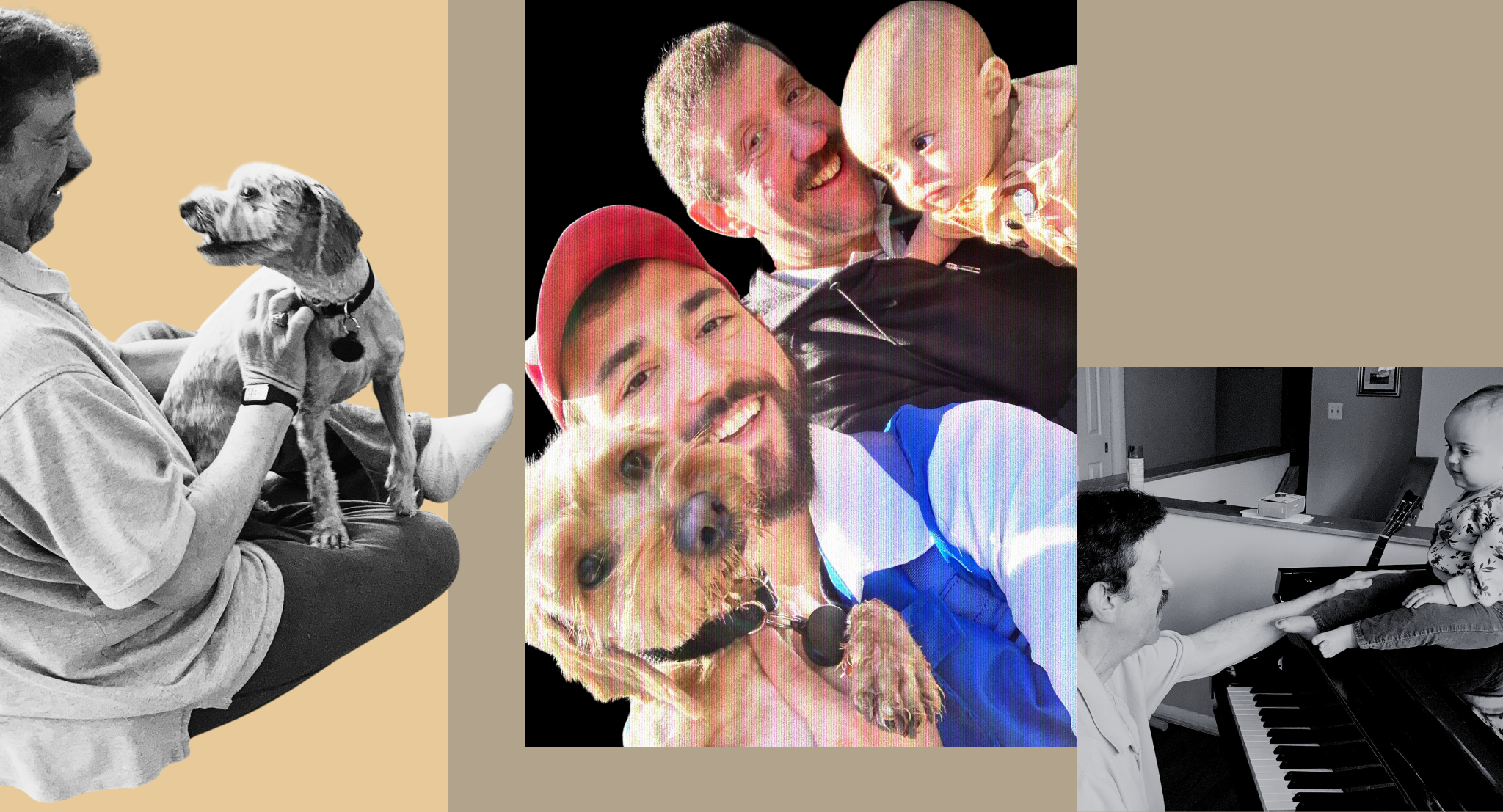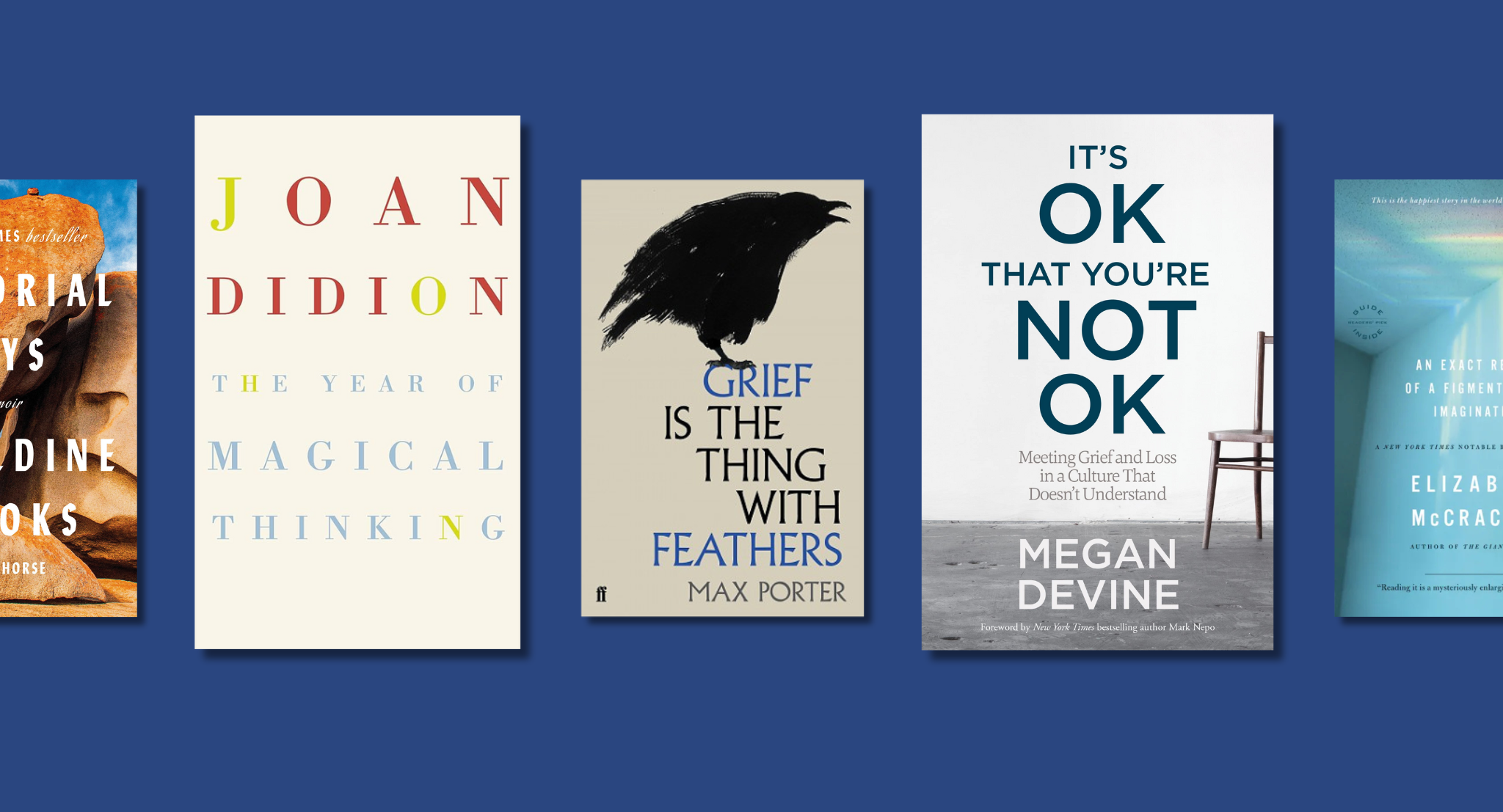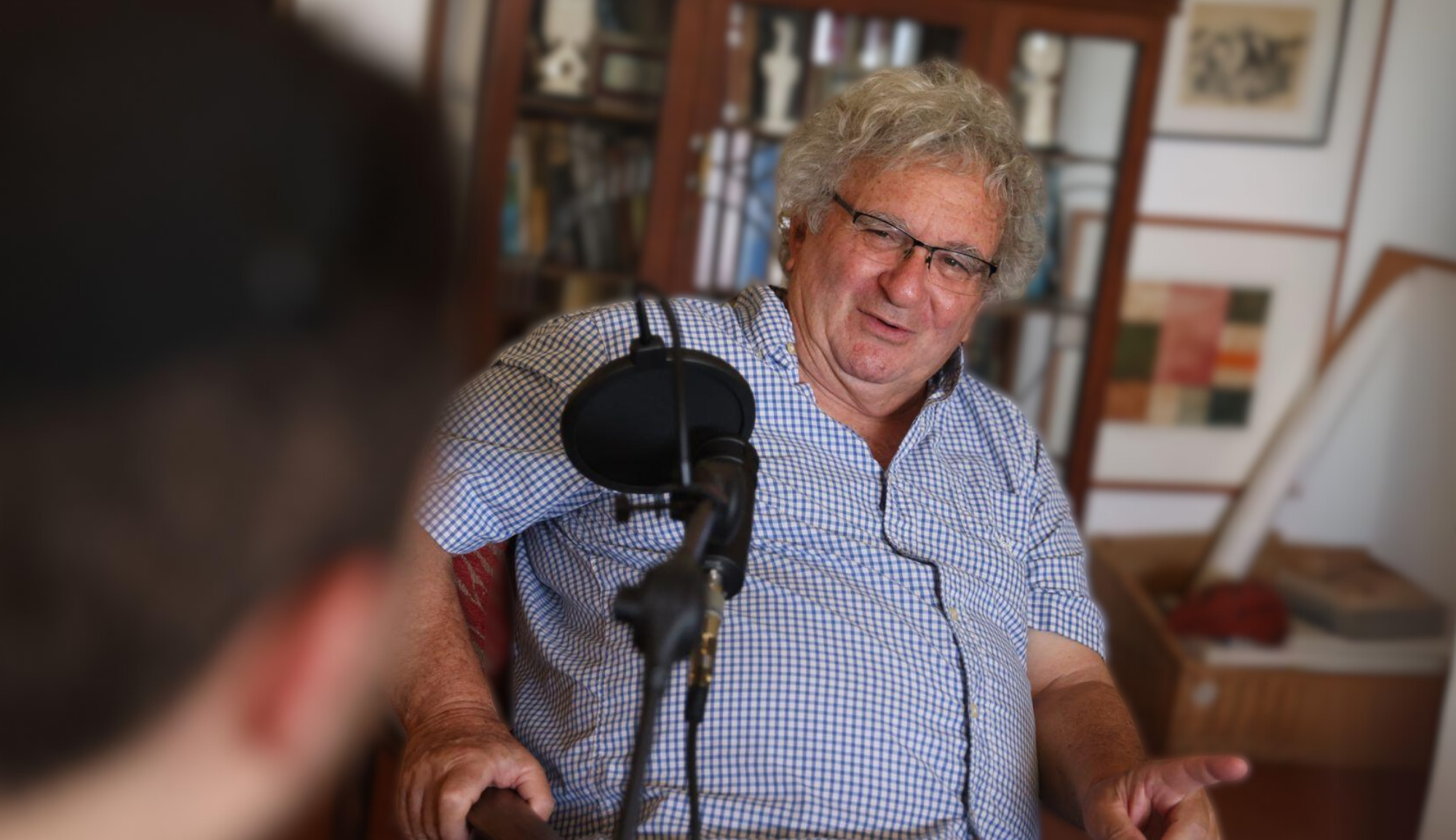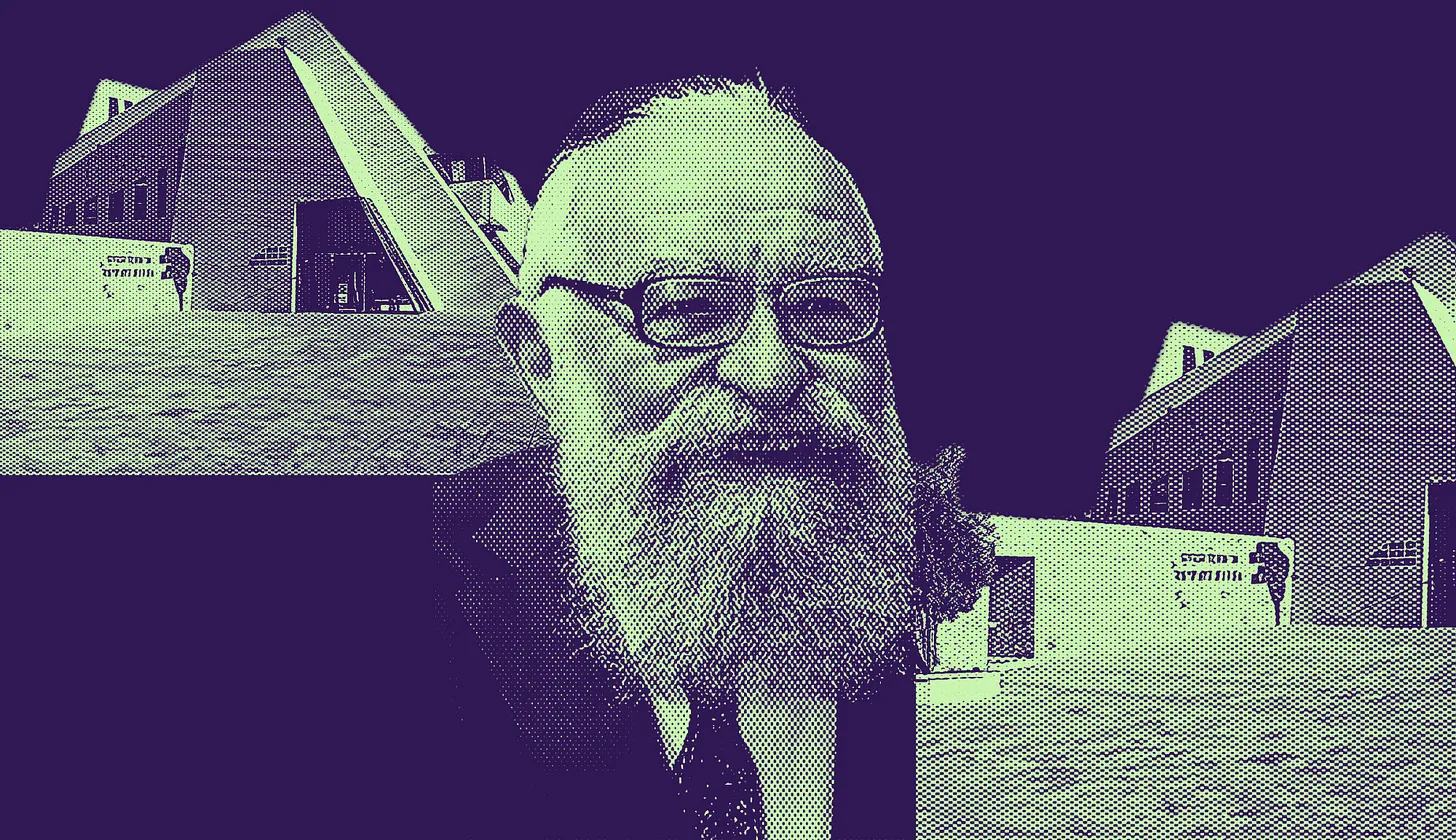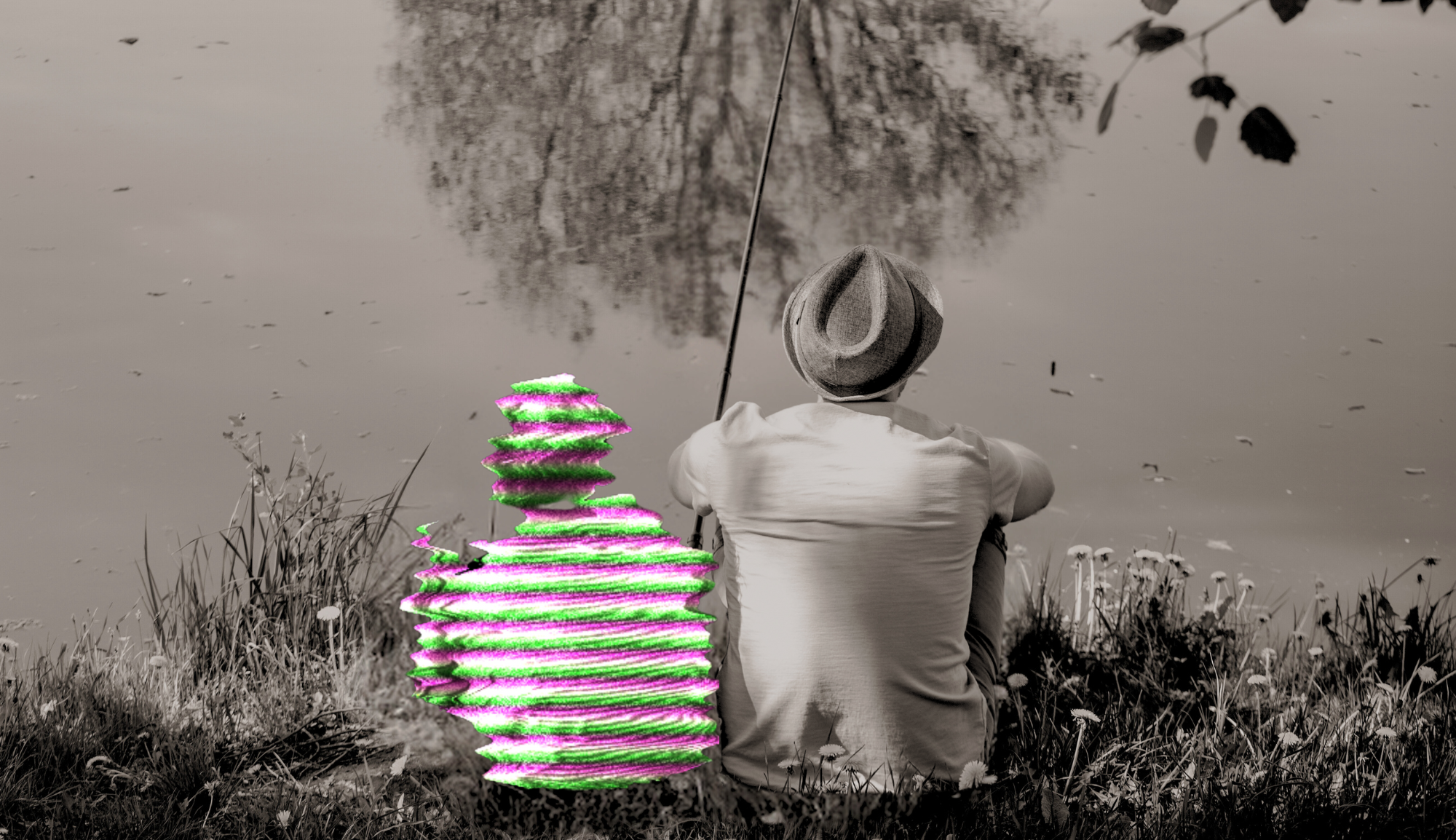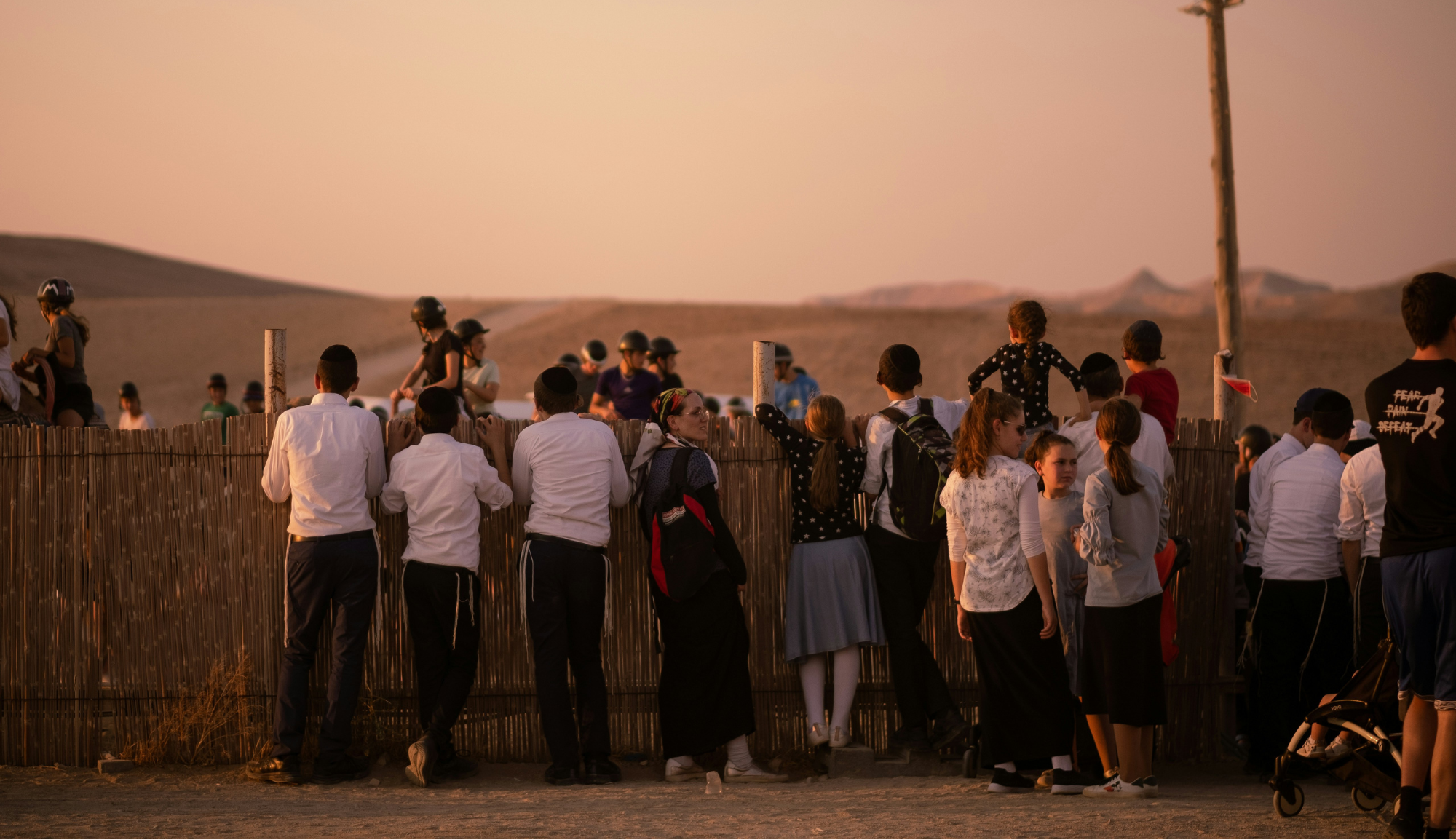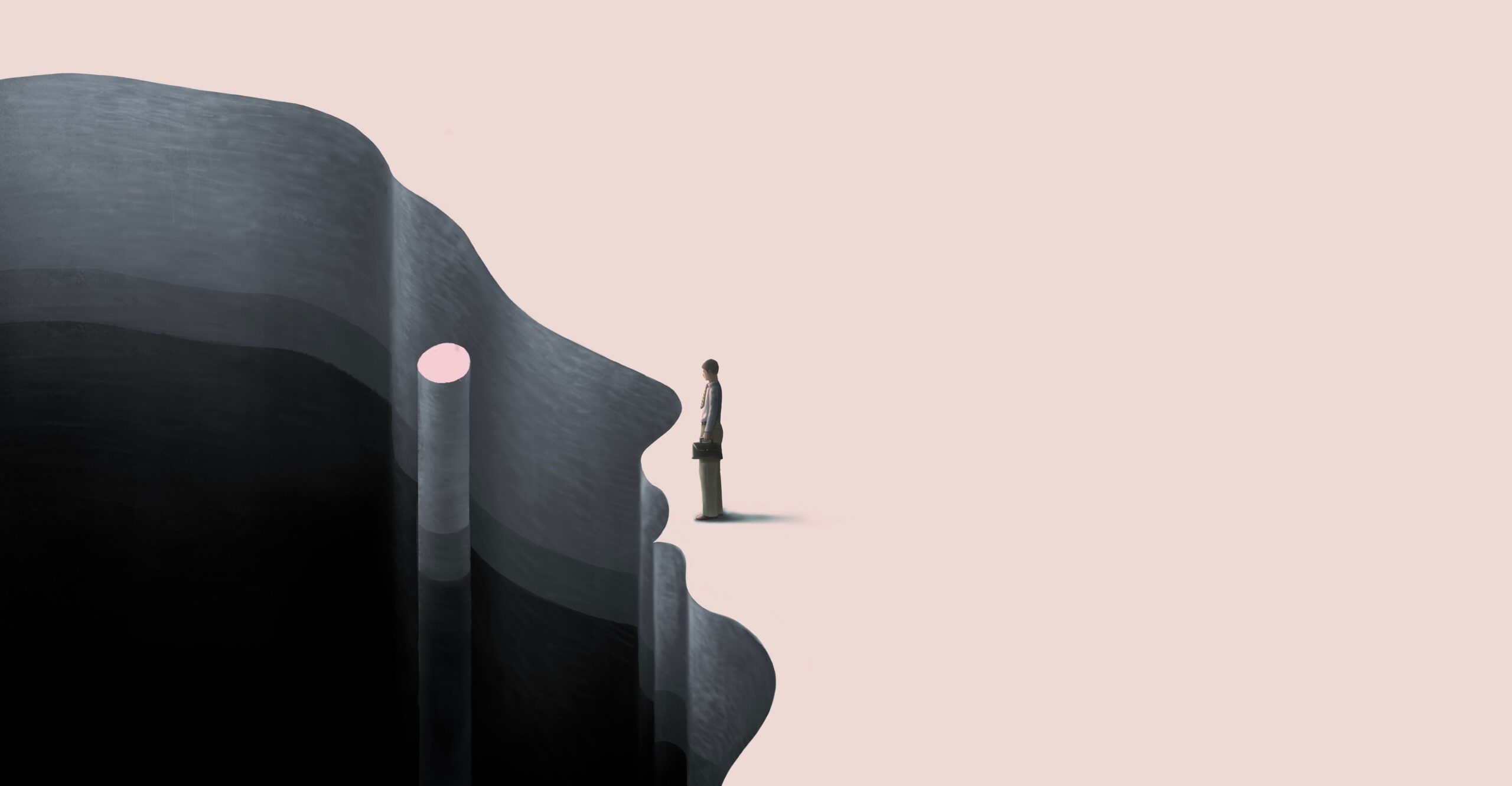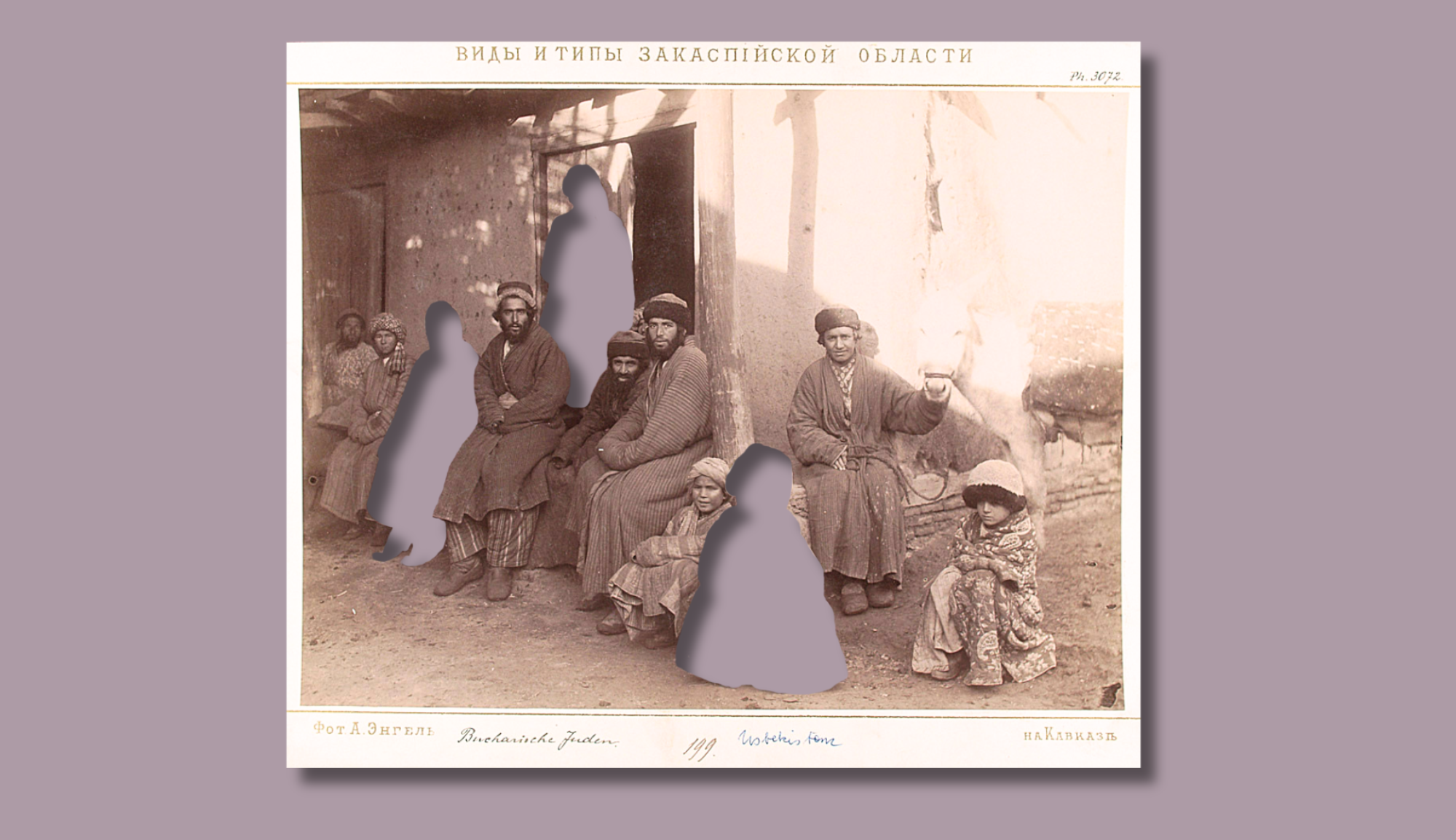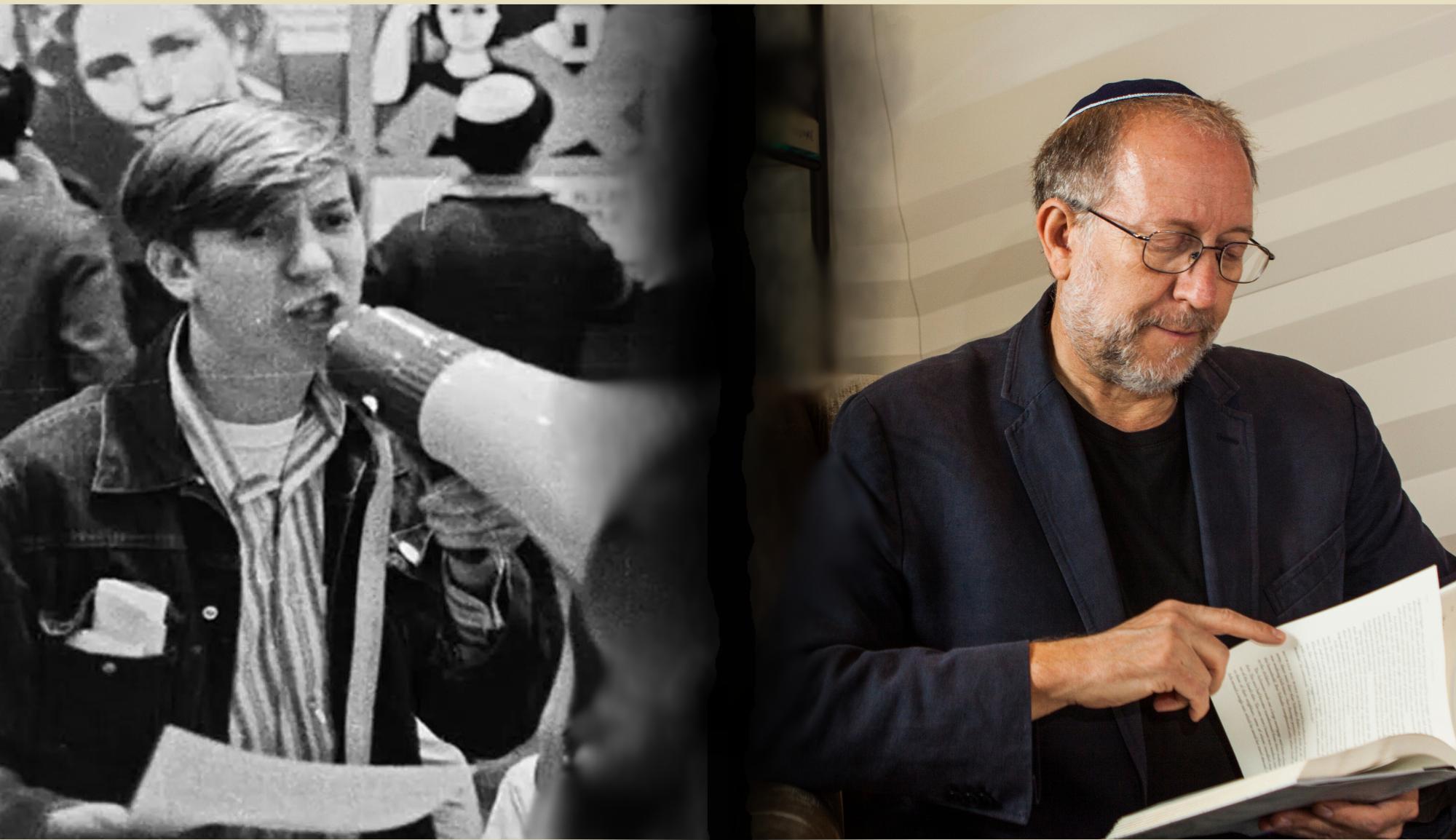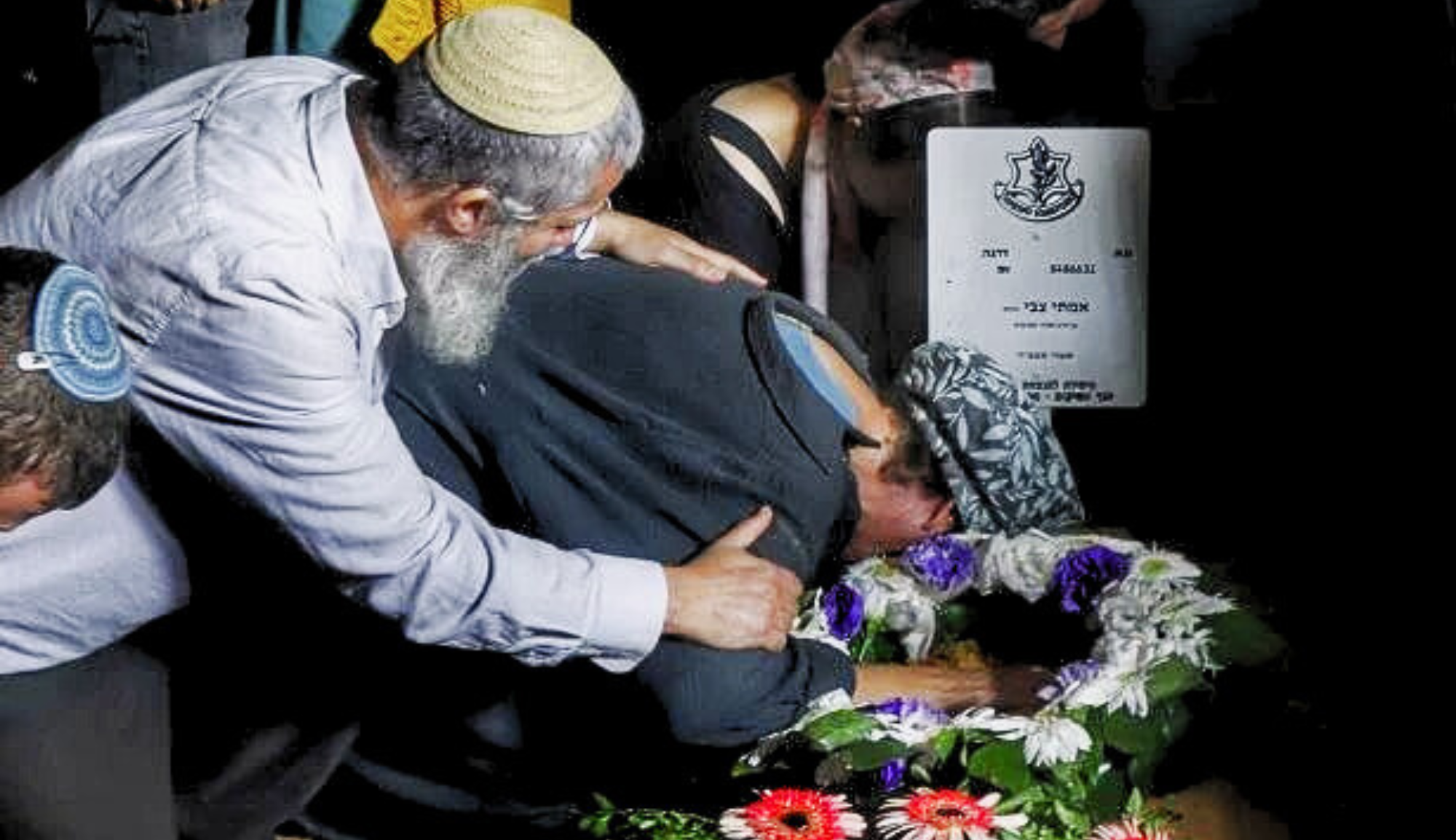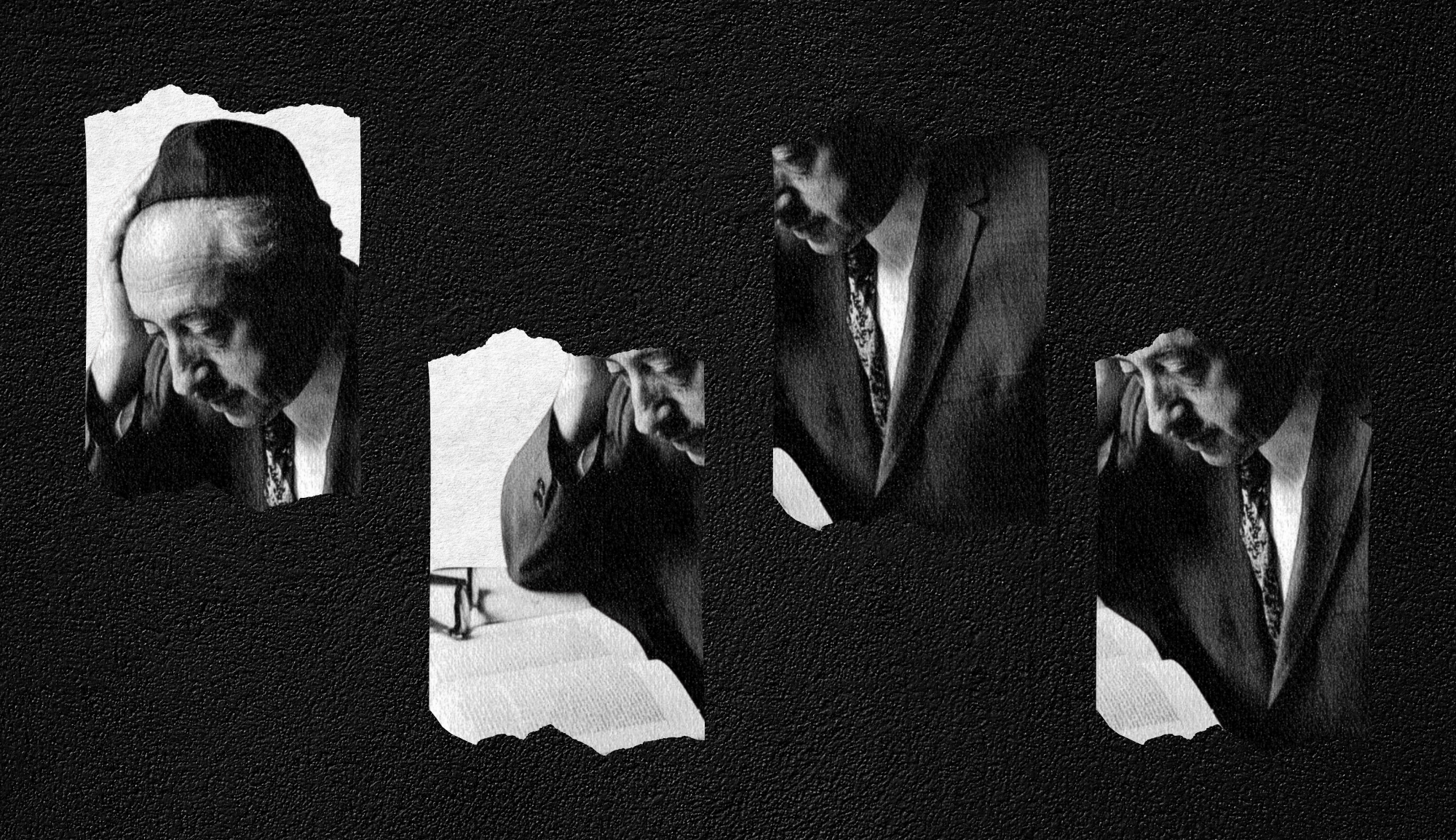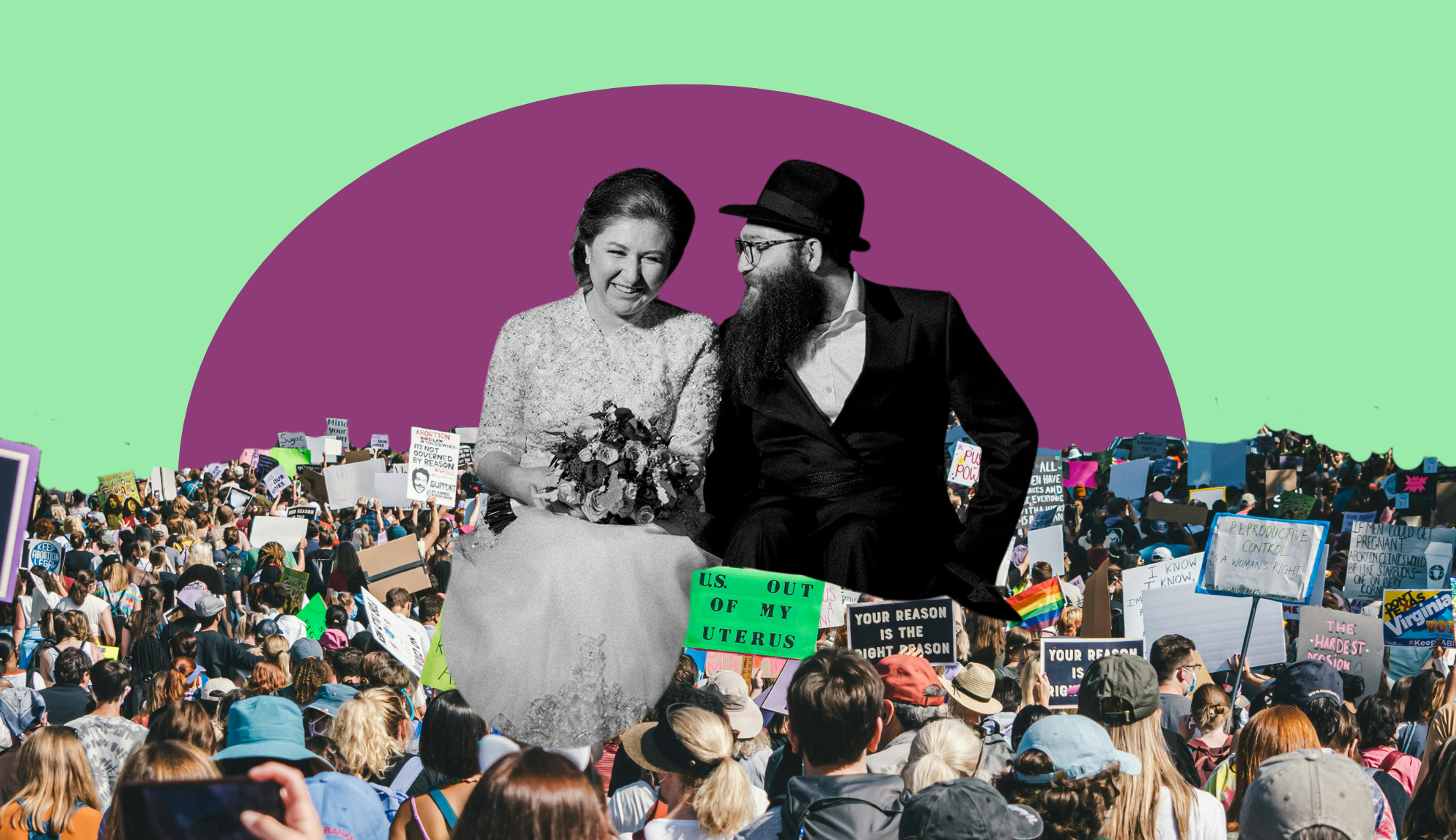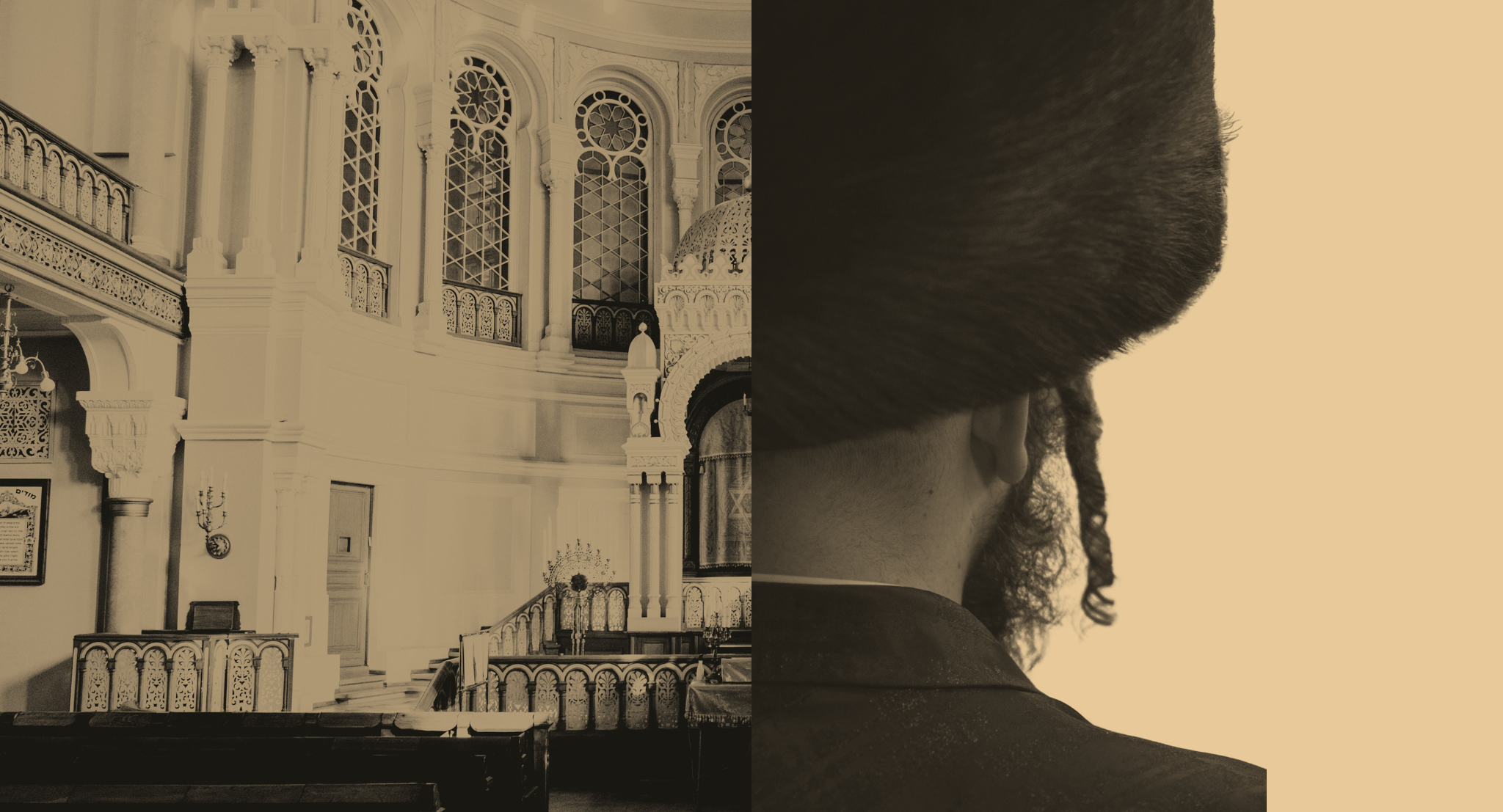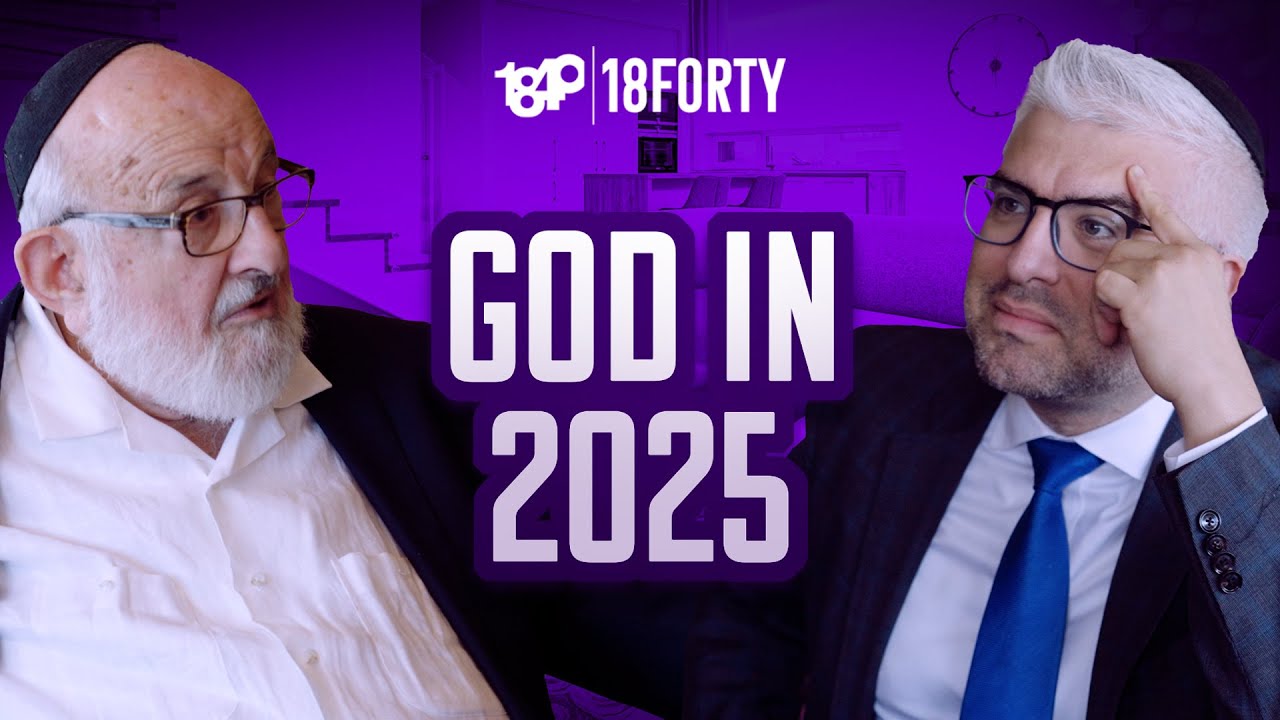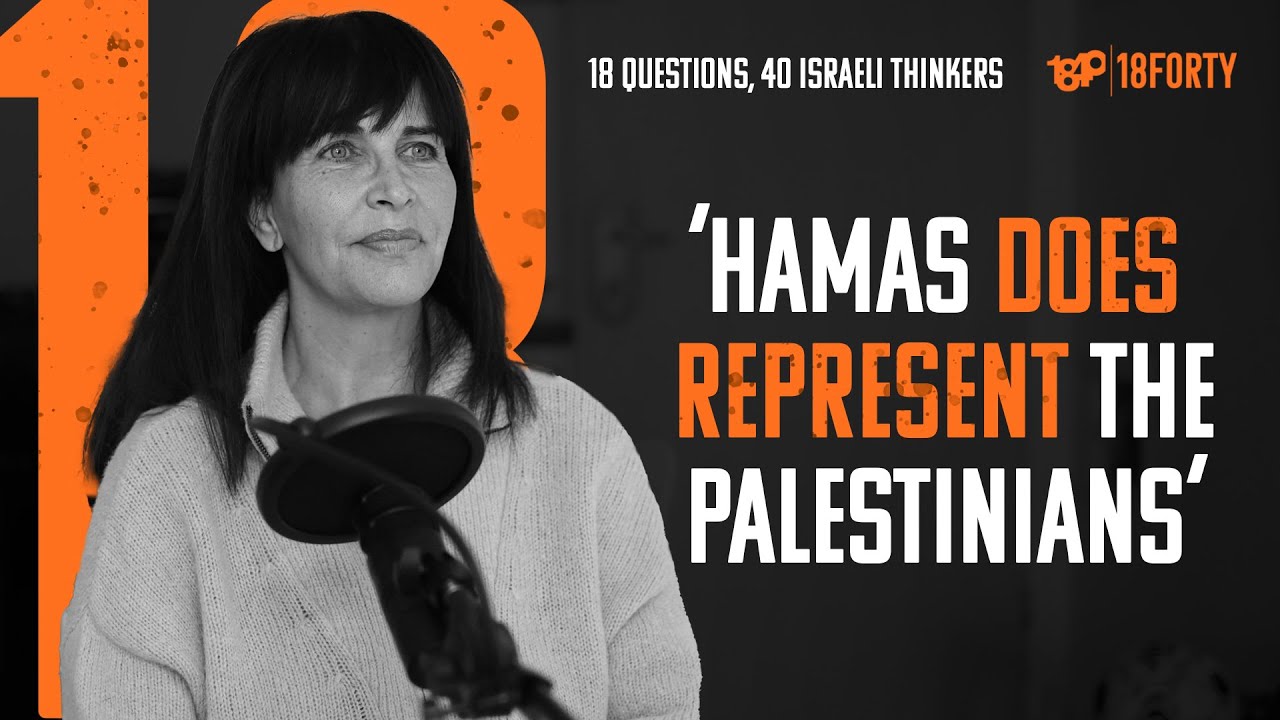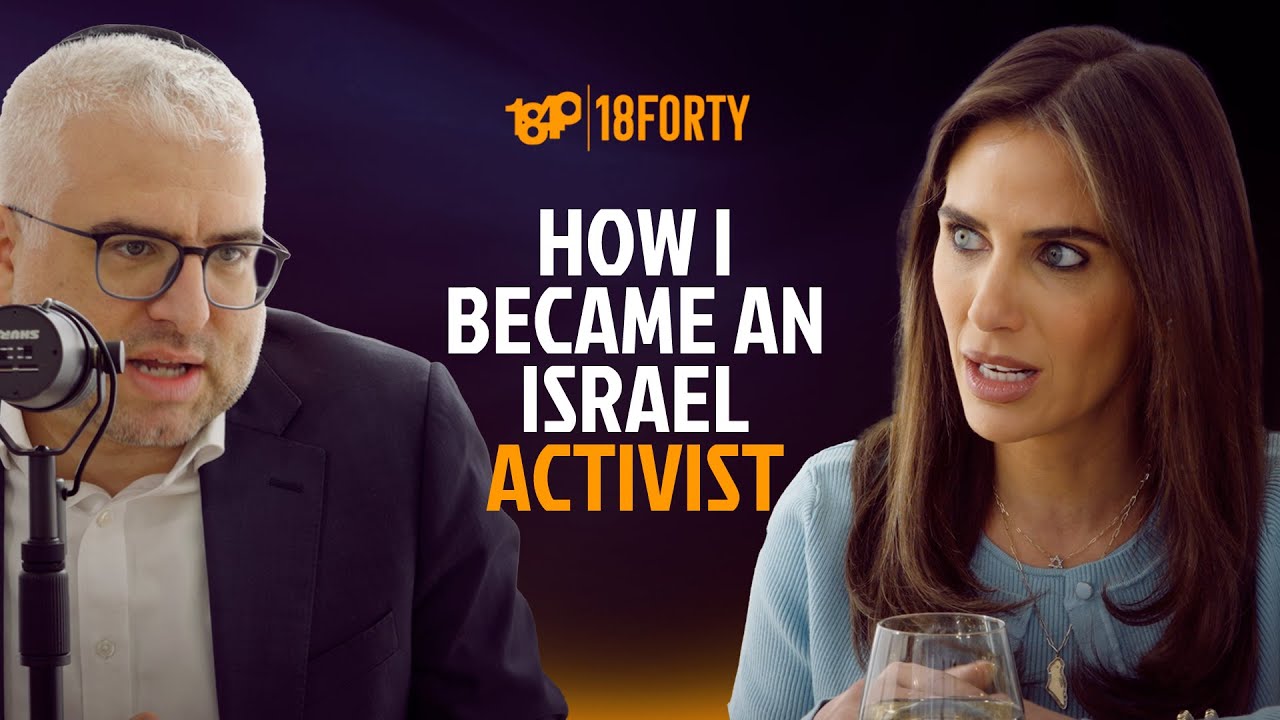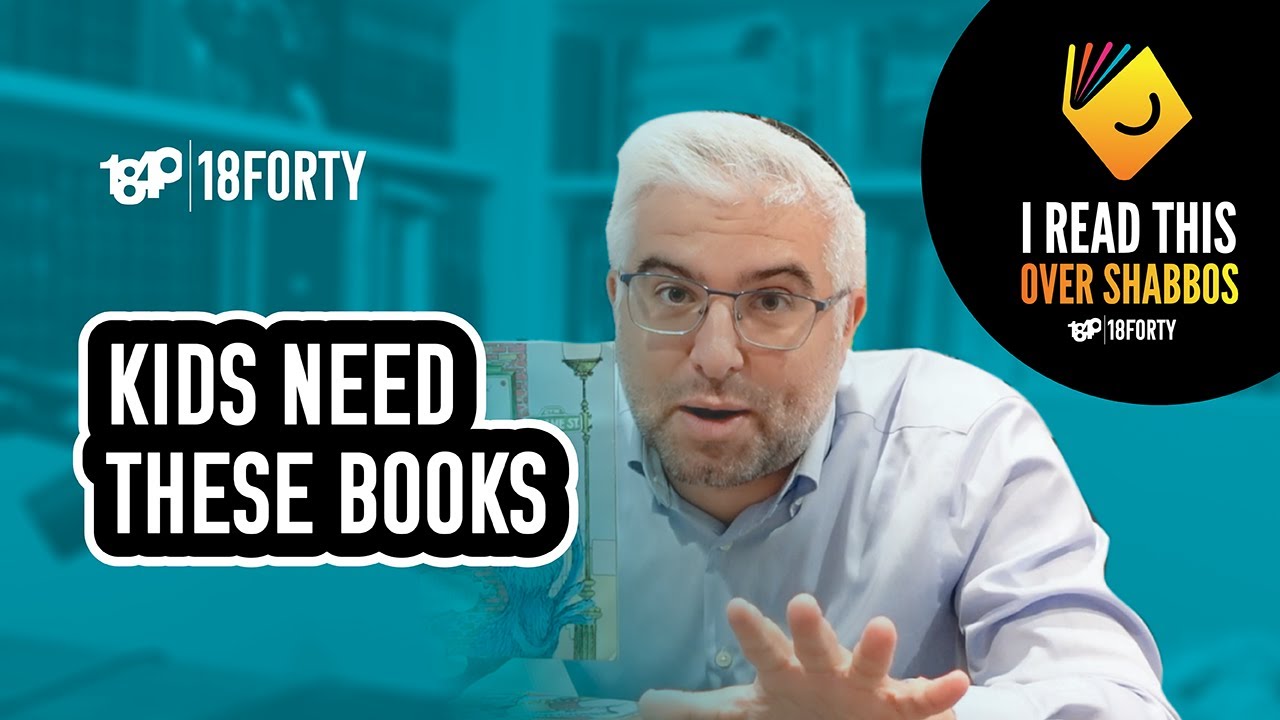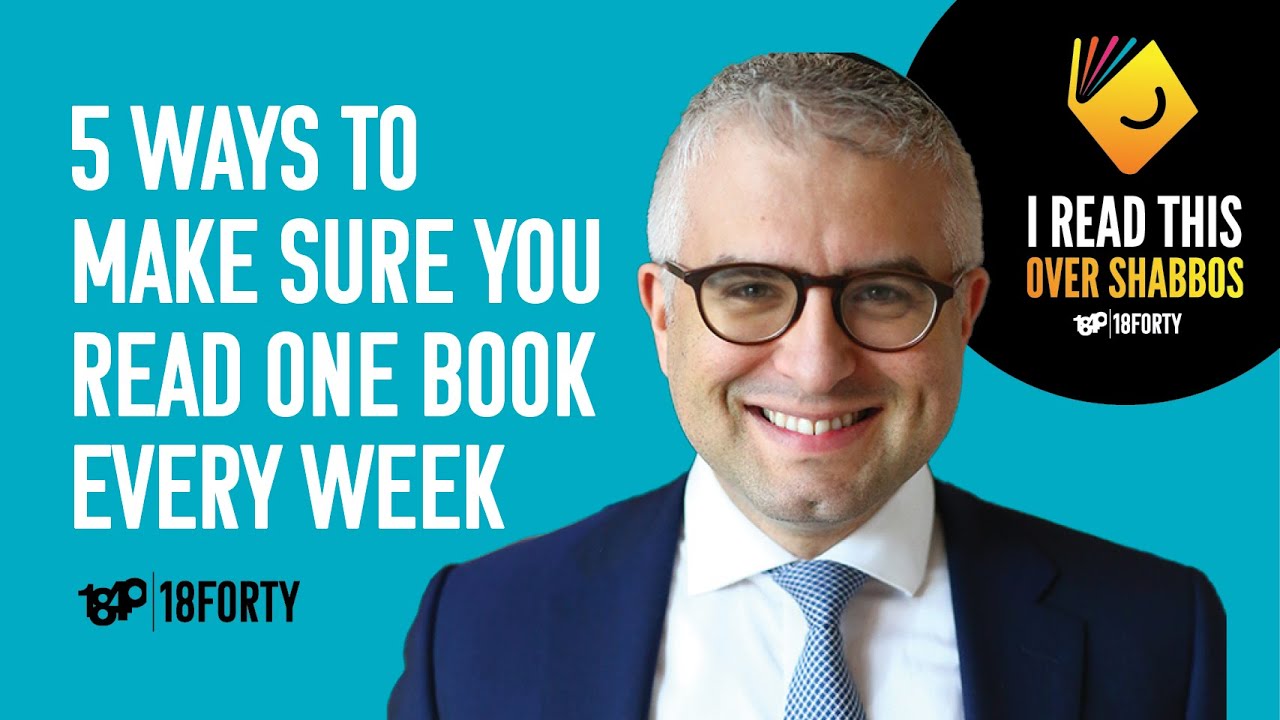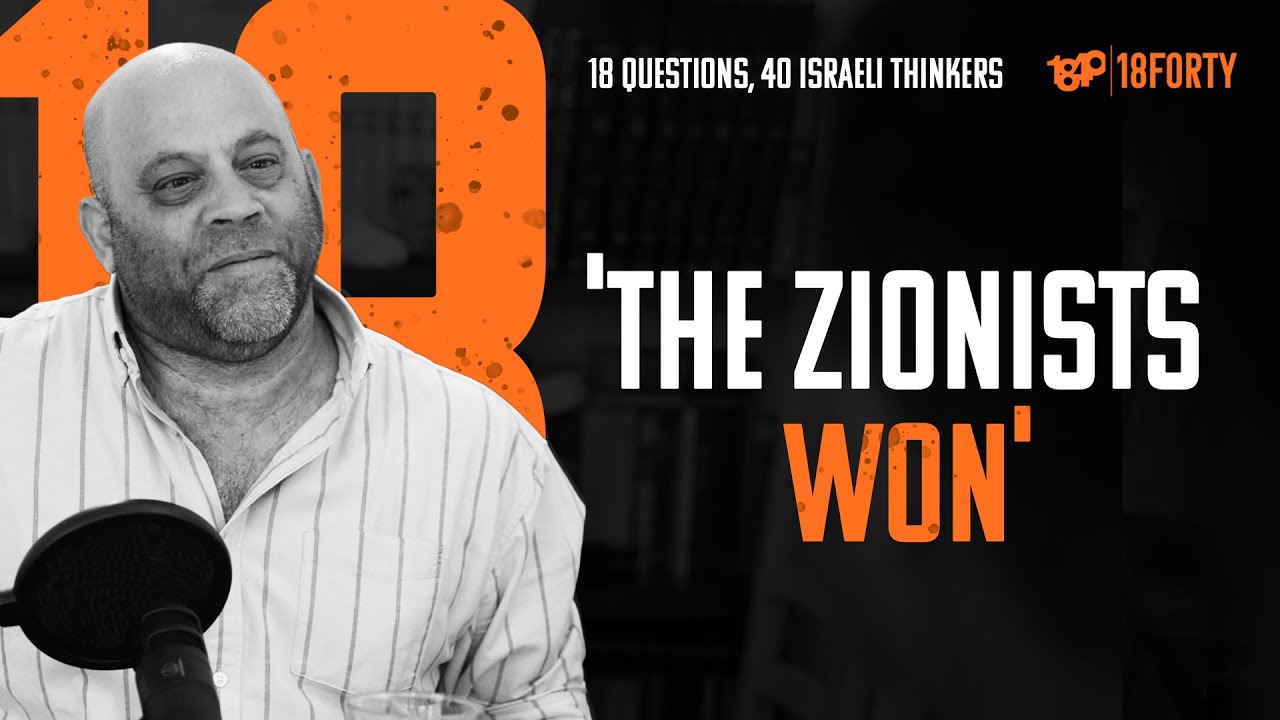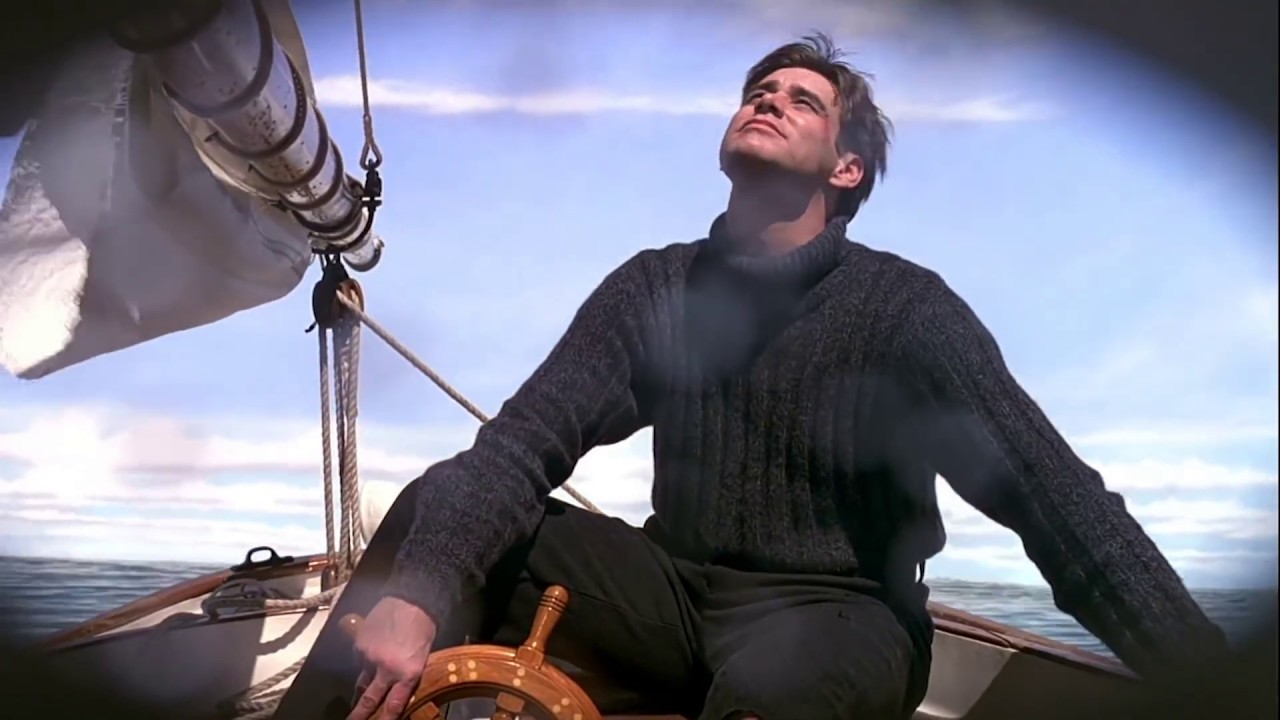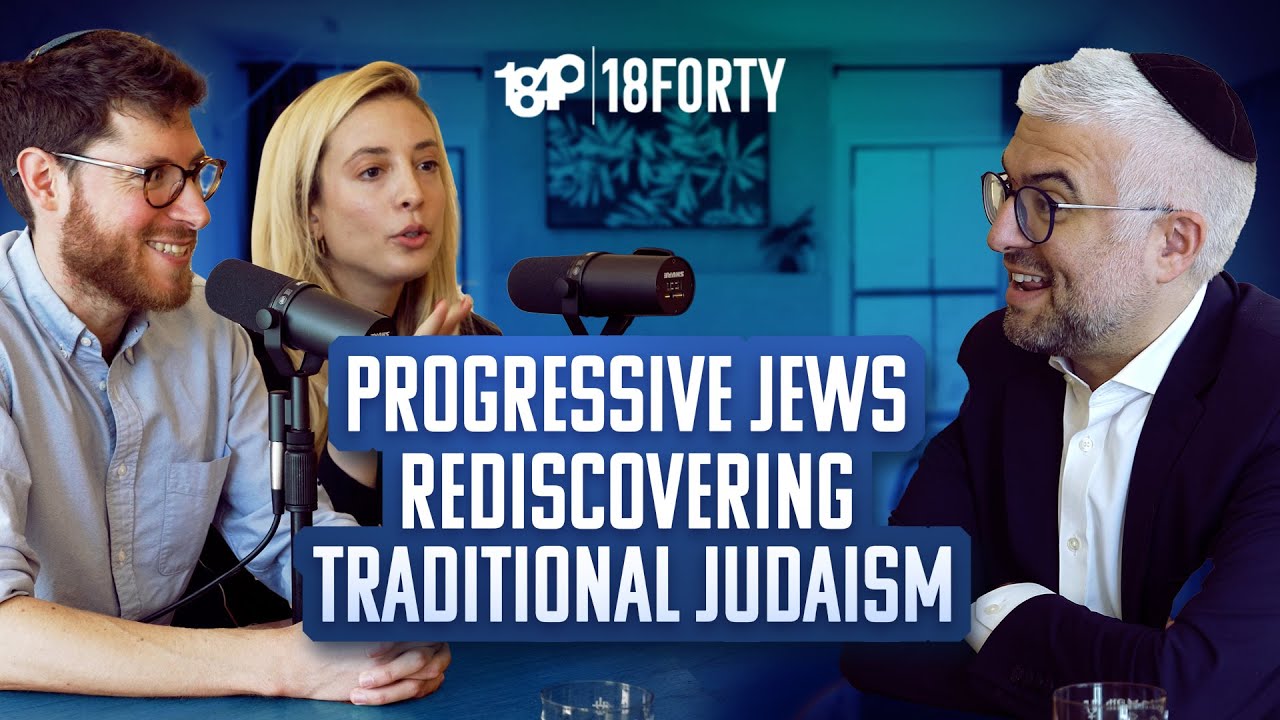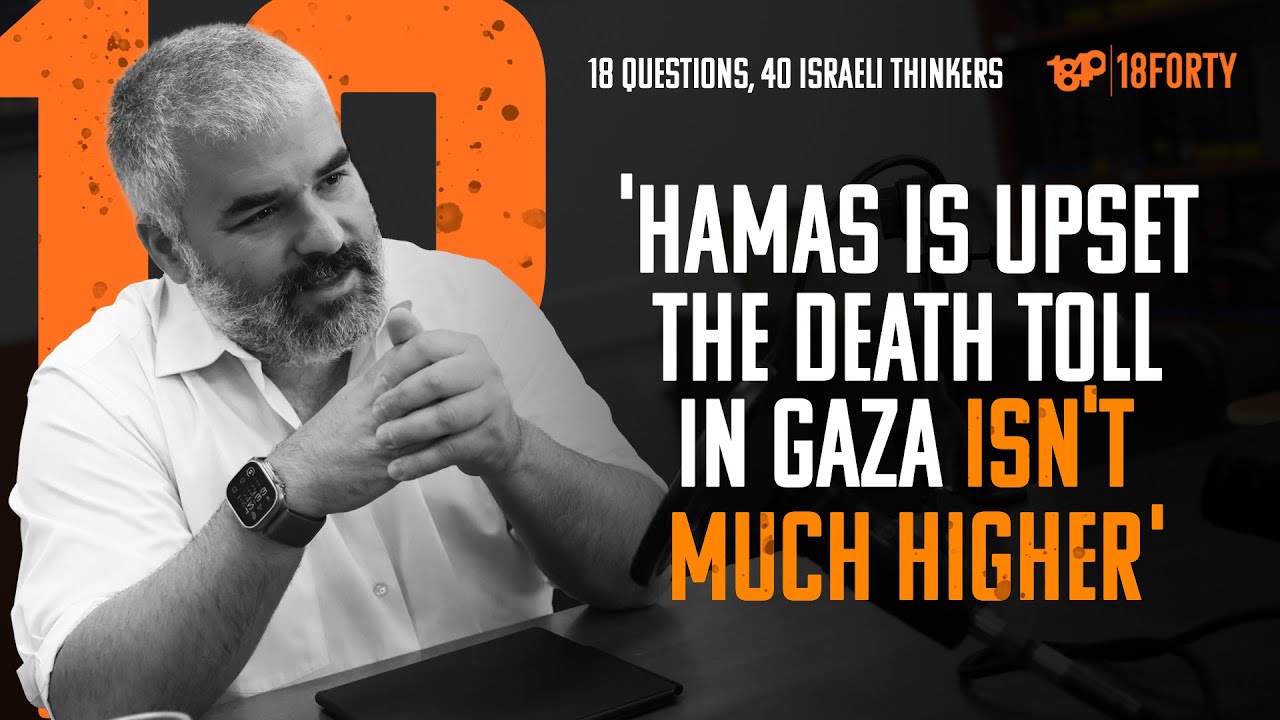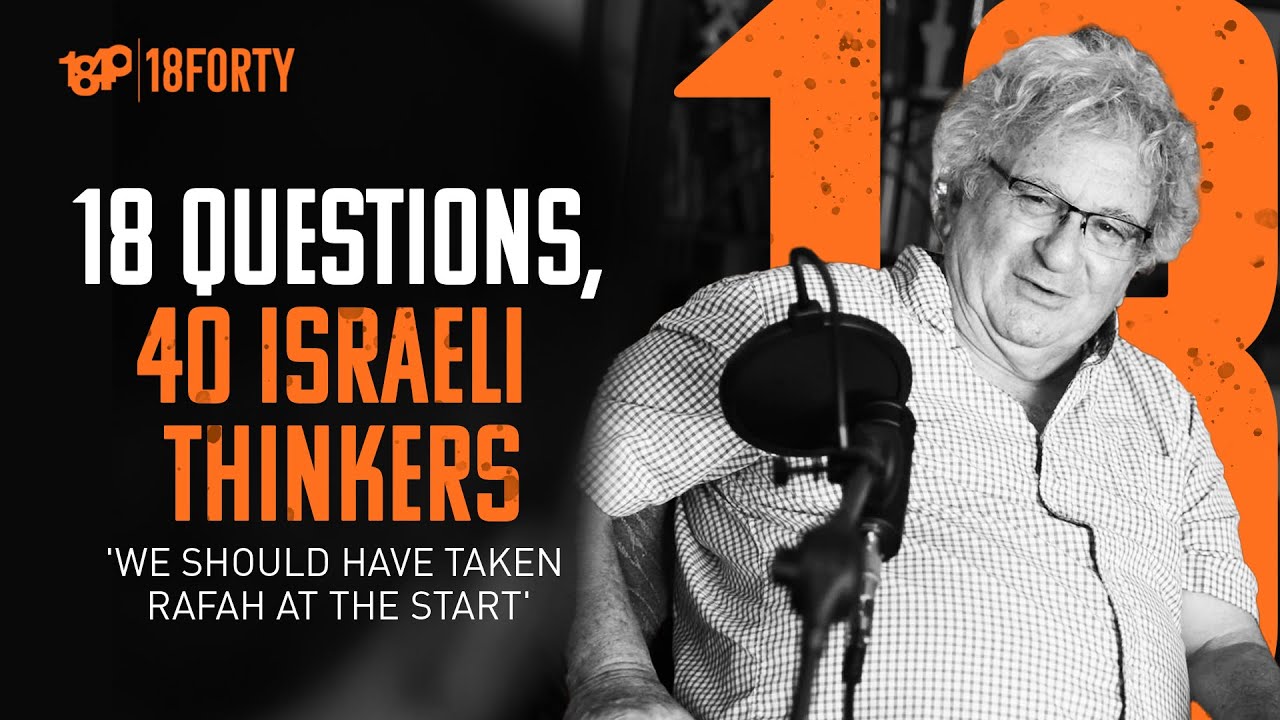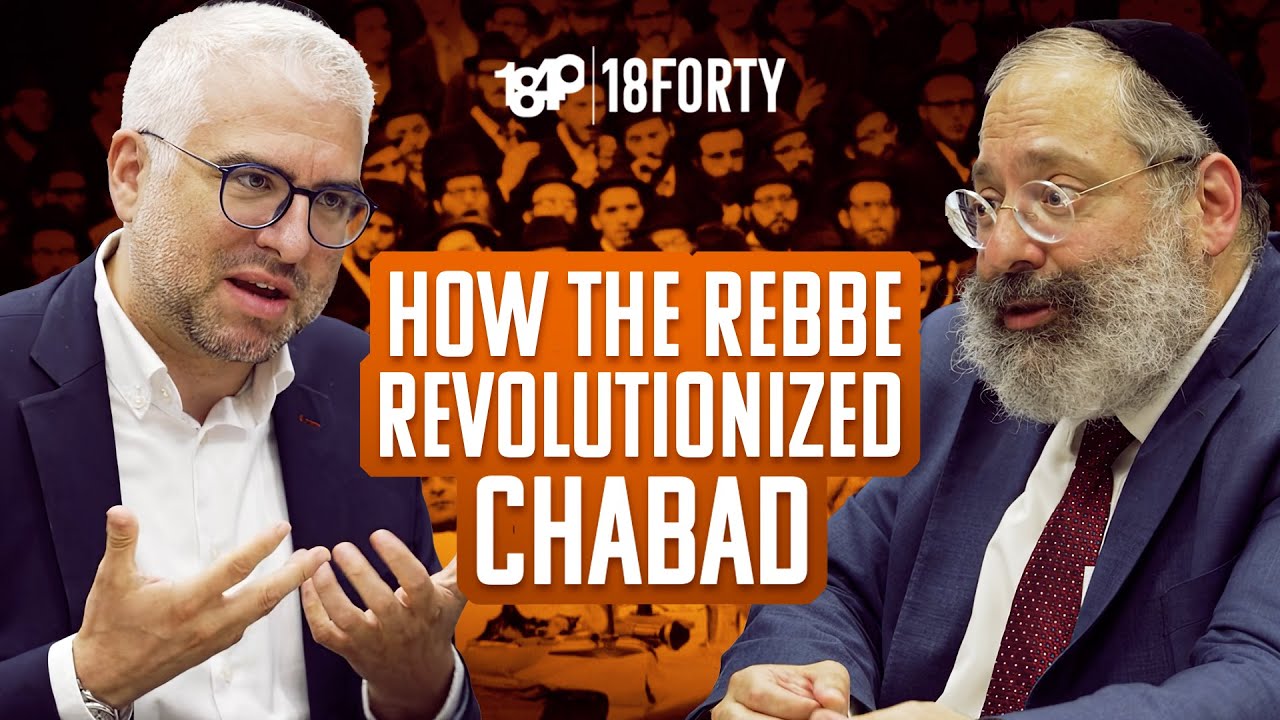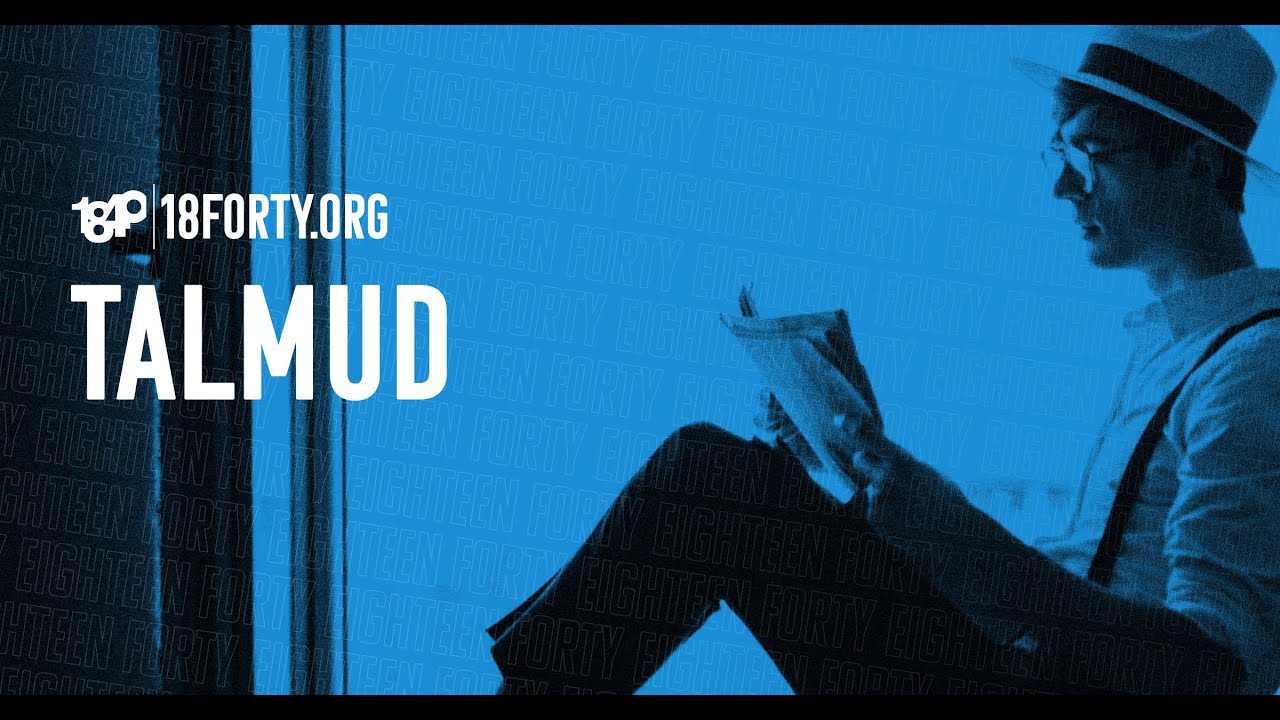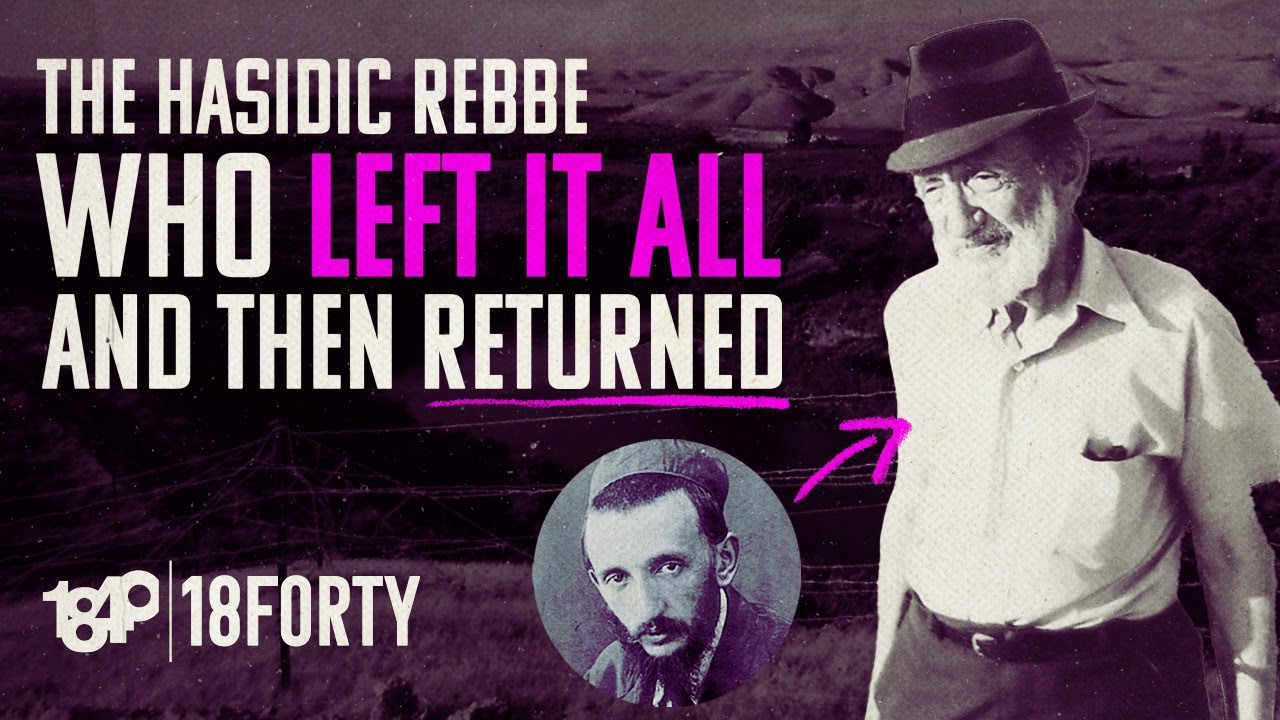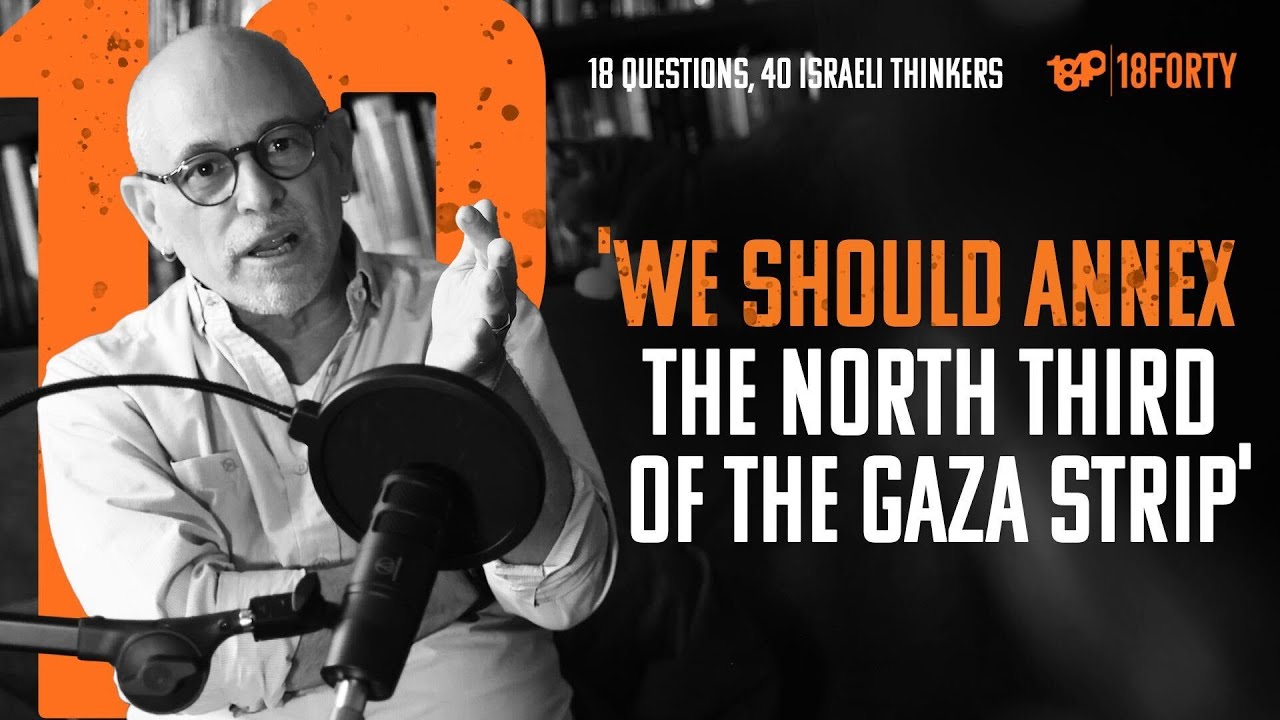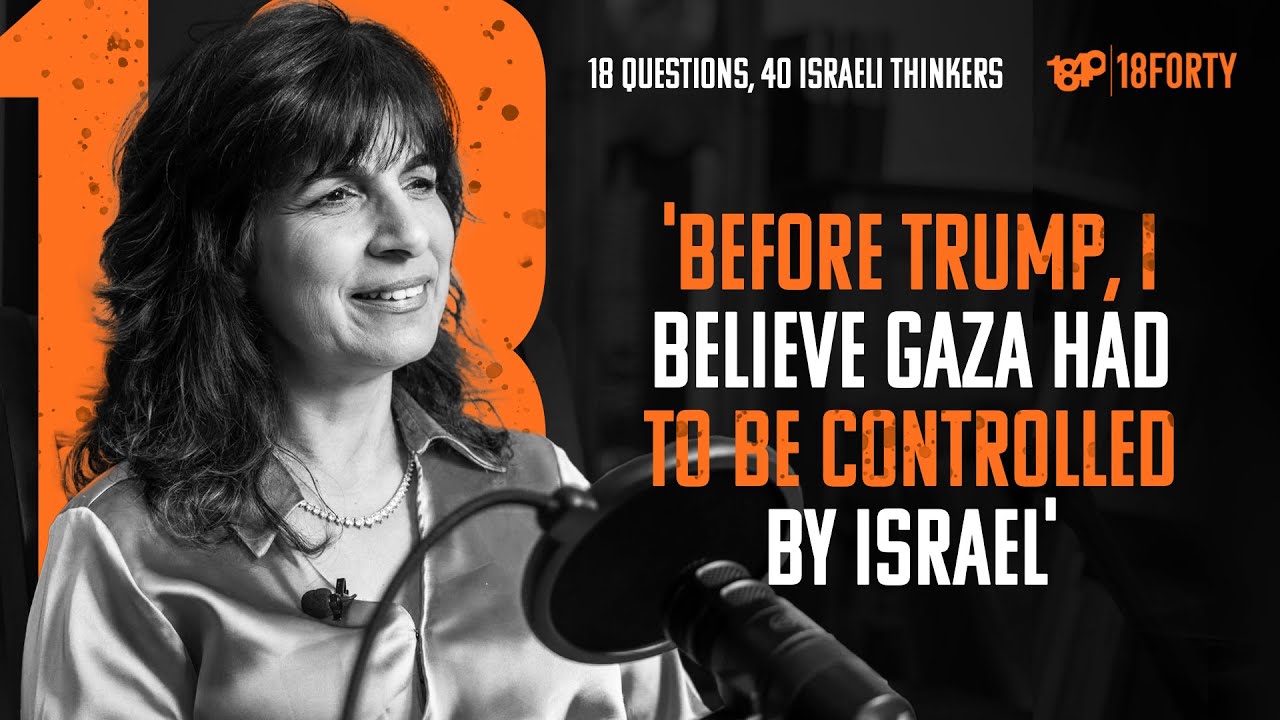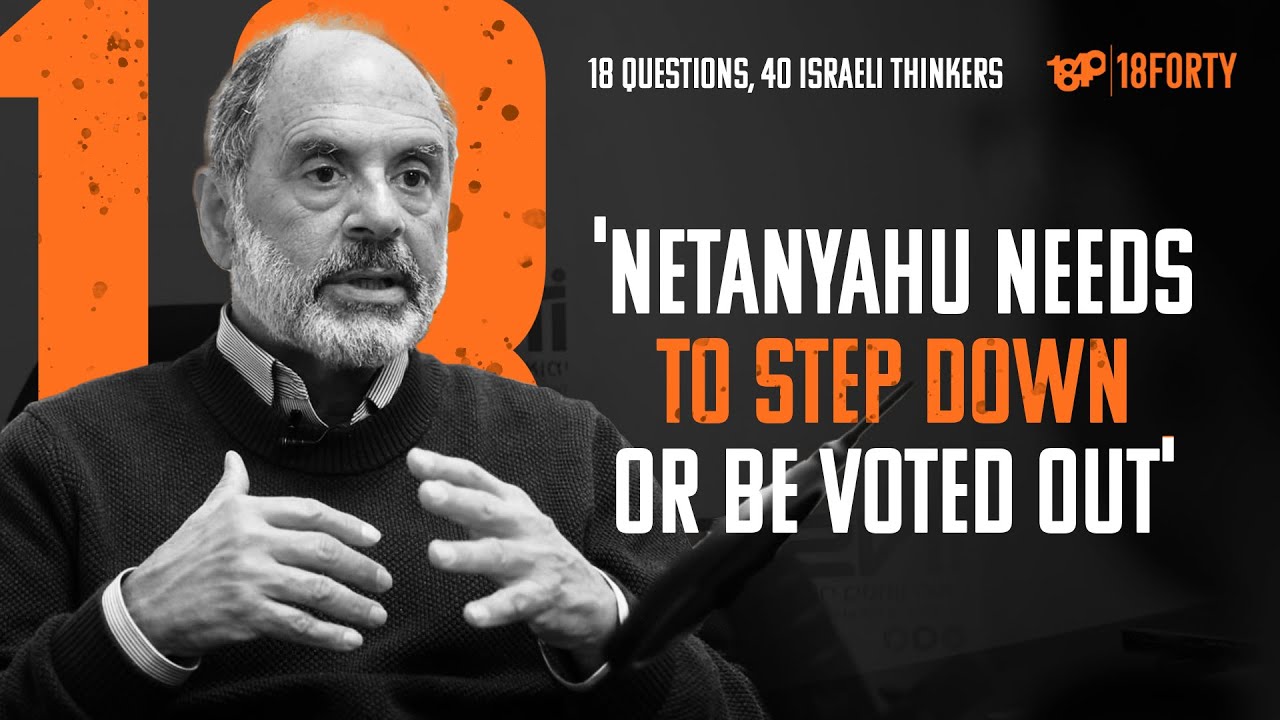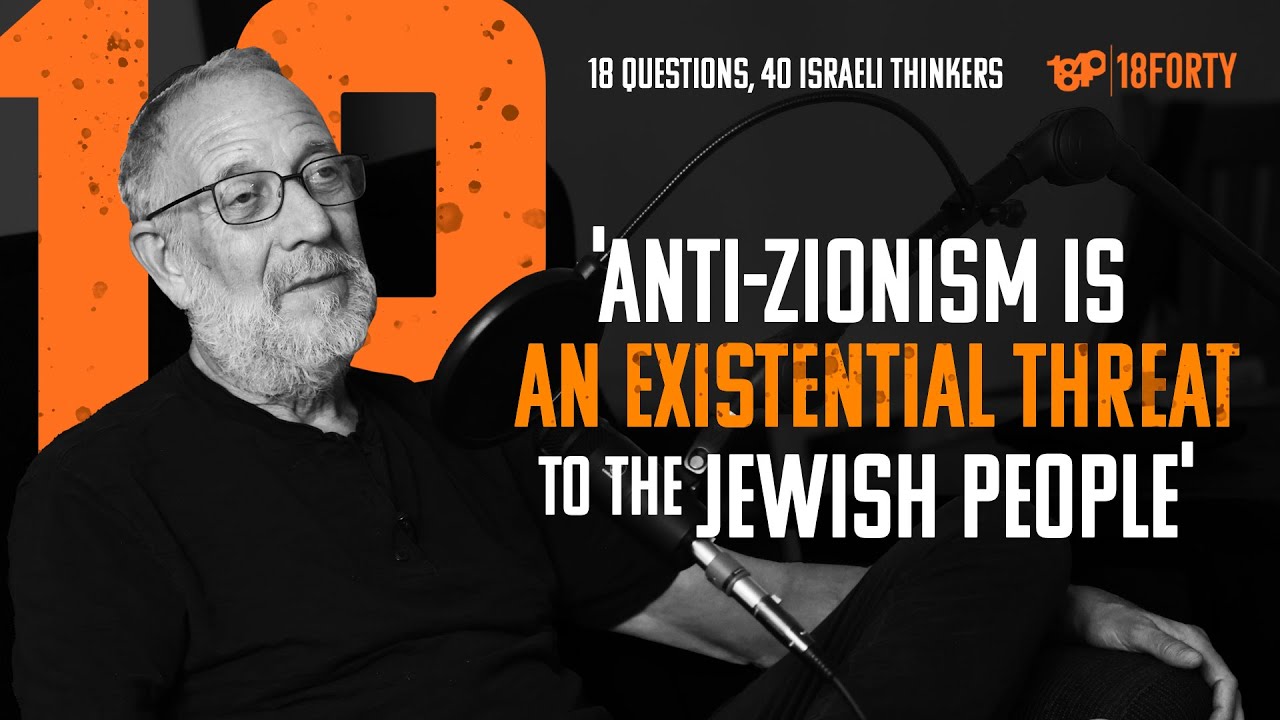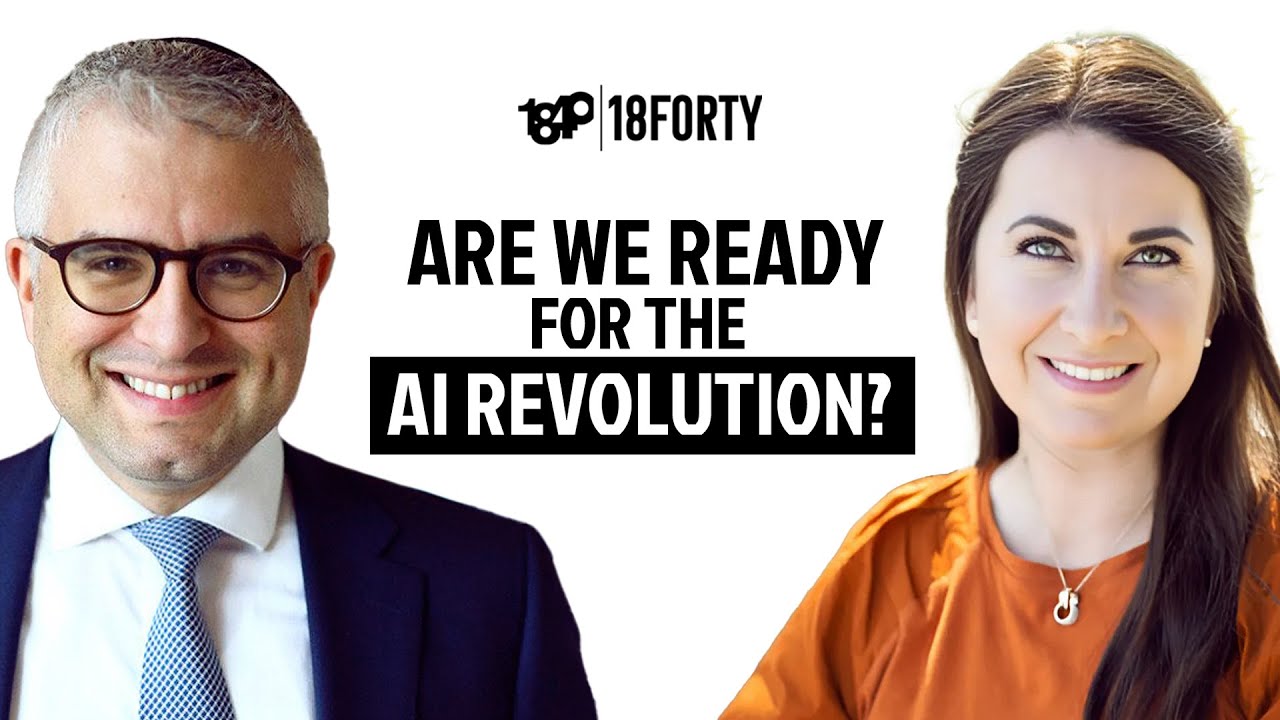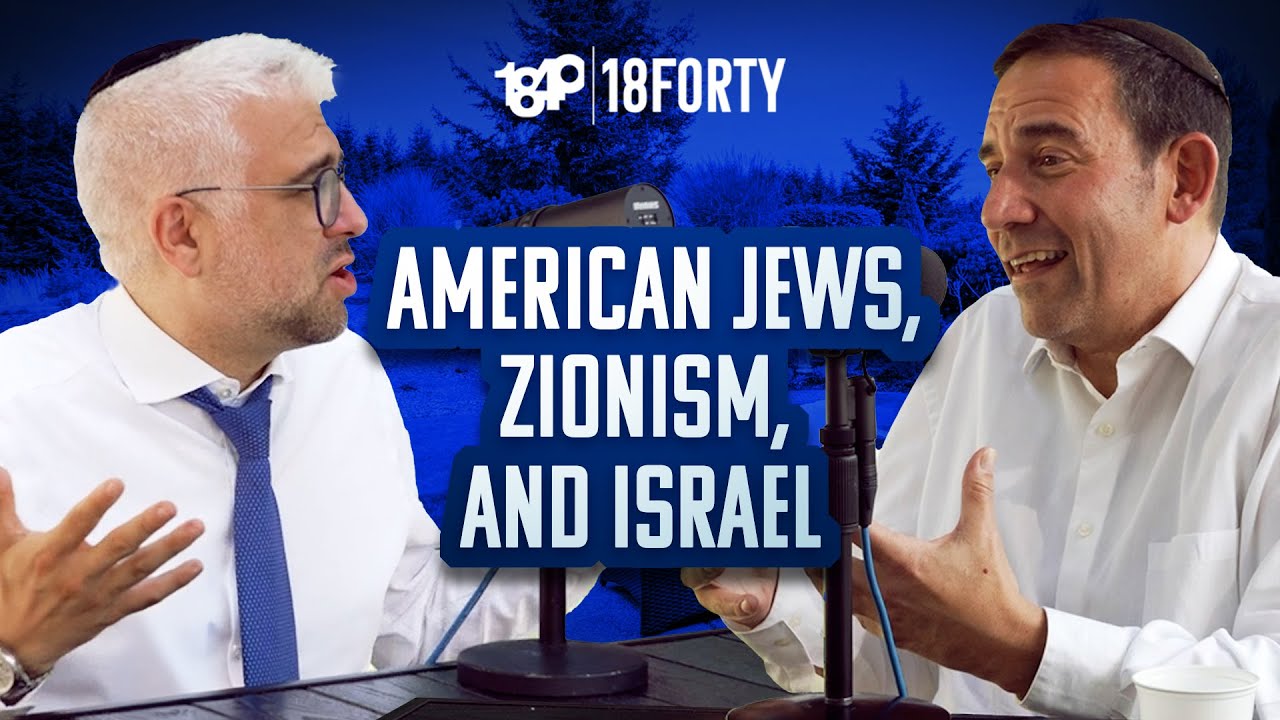Bruce Feiler: The Stories That Bind Us
In this episode of the 18Forty Podcast, we talk to author Bruce Feiler about family narratives.
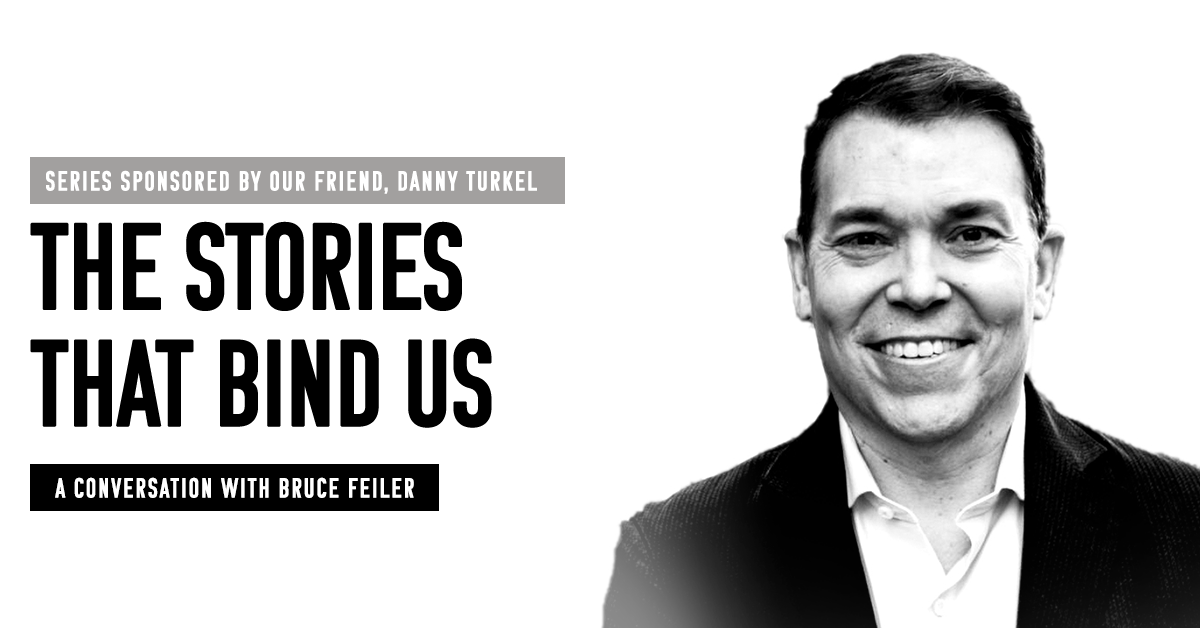
Summary
This series is sponsored by our friend, Danny Turkel.
In this episode of the 18Forty Podcast, we talk to author Bruce Feiler about family narratives.
Bruce has authored many books and articles, including longtime 18Forty favorite, “The Stories that Bind Us“, which argues that resilience in families is built by developing a strong family narrative.
- Does “The Stories that Bind Us” deliberately have a Pesach theme?
- What are the mistakes that people make in family dinner conversation?
- Are there differences in the ways that we cope with different types of life transitions?
Tune in to hear a conversation about Pesach and building family narratives.
Interview begins at 16:27.
Bruce is an American author of 15 books. Bruce’s book The Secrets of Happy Families: Improve Your Mornings, Rethink Family Dinner, Fight Smarter, Go Out and Play, and Much More is a moving exploration of the ways different families have built healthy homes. Bruce writes the “This Life” column in the New York Times and the PBS miniseries Walking the Bible and Sacred Journeys with Bruce Feiler. His powerful article “The Stories That Bind Us”, in which Bruce explores the non-linear narratives of families from many different walks of life, was an early inspiration for 18Forty’s series on Intergenerational Divergence. Bruce joins us to discuss the stories that families tell.
References:
Shel Ma’alah, Shel Matah: Seders Ideal and Real by Joanna Samuels
Believe In Your Own Seder by Rabbi Judah Mischel
Haggadah Encyclopedia Talmudic
The Stories that Bind Us by Bruce Feiler
Sin-a-gogue: Sin and Failure in Jewish Thought by David Bashevkin
Life Is in the Transitions: Mastering Change at Any Age by Bruce Feiler
Walking the Bible: A Journey by Land Through the Five Books of Moses by Bruce Feiler
The Do-You-Know Scale by Marshall Duke and Robyn Fivush
The Secrets of Happy Families by Bruce Feiler
Abraham: A Journey to the Heart of Three Faiths by Bruce Feiler
The Council of Dads by Bruce Feiler
The Storytelling Animal by Jonathan Gottschall
Transcript
David Bashevkin:
Hello and welcome to the 18Forty Podcast where each month we explore different topics balancing modern sensibilities with traditional sensitivities to give you new approaches to timeless Jewish ideas. I’m your host, David Bashevkin, and this month once again, we are exploring Intergenerational Divergence, the family stories that bind different generations together. This podcast is part of a larger exploration of those big juicy Jewish ideas, so be sure to check out 18forty.org where you could also find videos, articles and recommended readings.
And let me begin by thanking our series sponsor, Danny Turkel, my dearest friend. We so appreciate his support to help us continue putting out meaningful Jewish content. Thank you so much, Danny. It really means a lot. Whether you want to talk about it or not.
We are at that time of year where we begin thinking and preparing for Passover or Pesach. People are going to stores, they are buying their tinfoil. I know when I was growing up, we knew it was Pesach from two things. A. Everything was covered in tinfoil. B. We had an entire freezer stuffed was string cheese, string cheese top to bottom. We were never concerned that there would be what to eat on Pesach because essentially, if there was a total food shortage, we knew most of the world’s string cheese supply was present in our freezer growing up.
But one of the things that aside from the cleaning, one of the major features of getting ready for Pesach, of course, are those parenting classes where usually in the two weeks before Pesach, you have all of these Zoom classes, podcasts, and all of this kind of engagement parenting classes to help you how do you engage your teen at the Seder? How do you host the Seder? What do you do? And they’re really, really wonderful. They’re really, really important for people who are hosting the Seder for the first time. It can feel a little bit daunting for people who have children, maybe in teenage years for people who are guests at other people’s Seders. And they want to, I don’t know, make a great impression, seems smart, seem brilliant, whatever it is.
All of these classes, whether it is Divrei Torah, Torah thoughts on the Seder or what have become even more common these parenting classes, how do I engage my teen? How do I engage young children? You go into Judaica shops and they have finger puppets and masks and all these games that you can use at the Seder, none of which I used growing up. But all of which I’ll be honest, I’m kind of not a huge fan of, I’m not a huge fan of because if you’ve ever run a Seder, you know that the prep that you put into the Seder rarely translates into what the Seder itself actually is, or becomes.
I remember when I was young, and I spent a Seder at my sister’s house, and my sister’s prepped a tremendous amount of time for the Seder. And my brother in-law, I’m not going to say which one, but if you know my family, it’s one of three. My brother-in-law put in a tremendous amount of prep, and I admire his prep and I admire the prep that any family that I also prep a great deal for the Seder. And he prepped all of these really sophisticated ideas to kind of bring the story of the Jews leaving Egypt, Yetzias Mitzrayim as it is known, down to my niece, who at that time was probably four or five years old, and really allow her to explore and engage in the story.
I remember my niece who was kind of mischievous, had a tough time keeping attention. Anytime that my brother-in-law would kind of pause and say, “Well, who took the Jewish people out of Egypt?” And when she was supposed to chime in and say, God, HaShem, Moshe, you know, any of the right answers that you could expect from a four or five-year-old, she kept on inserting her playful dog who she was known as, at that time was known as Wu-Wu, which was a pink dog. So, “Who took the Jewish people out of Egypt?” She just kept on saying, “Wu-Wu took them out.” And I remember seeing my brother-in-law’s face, and it’s a face that I’ve made in the Seder, which is kind of like exasperation, like this is not going the way that we planned, this is not going the way that it seems.
I remember another Seder at a different one of my sisters, and they’ll kill me obviously, for sharing these stories, but they’re all true stories. I had a different Seder, a different one of my sisters. Again, we’re not saying which one, so you’ll have to guess all three. I don’t think they’ll fess up to it. And over the course of the Seder, it was one of these things where everybody came to the Seder with one of these, like, what my father playfully called tomes, these massive volumes of ideas and thoughts that their teacher gave them. And obviously, each child wants to say and read through everything that they prepared. And I think my brother-in-law, who’s actually incredibly gracious and really wants to make sure everybody’s a speaking role. I don’t know. He looked over one of the children and another child didn’t get to say and they wanted to say and he went on to the next part already, and he said, “We’ll go back.”
Whatever it was, one of my nieces began crying at the Seder, which led to the next of one of my nieces crying at the Seder. And by the end of the Seder, really all of my nieces and nephews at some point, maybe not my nephew at that point, I don’t remember all the details. I’m sorry. But at some point, nearly all of the participants at the Seder had walked out crying and just exasperated that we weren’t included the way that we wanted. And I think it’s a very common feeling that people go through the Seder experience. And they just feel like this is not going the way that we planned. Someone’s crying, someone’s upset, somebody feels overlooked. Somebody feels that they weren’t engaged in the right way. And there are really no parenting classes, no engagement points that can help you surmount this.
I think for myself, the only thing that has ever helped in any ways or two articles that nearly make the same point. There’s one really beautiful article that was published in The Forward that is called Shel Ma’alah, Shel Matah – Seders Ideal and Real that was published by Joanna Samuels. And she writes as follows, “The other challenge is the Seder itself. Let’s face it, any ritual for which everyone gets a speaking role is risky. I’m sure there are two or three families out there who spend hours having rich discussions who strike their own right balance of ritual and spontaneity, where there is not a bit of family tension about who is serving and clearing and where the evening ends and singing of the songs. That would constitute the Seder Shel Ma’alah.” Shel Ma’alah in Hebrew, as she explains, is the heavenly Seder. “But what most of us attend is the Seder Shel Matah, the decidedly earthly Seder.”
And this notion of a Seder Shel Ma’alah with all of our preps and we close our eyes and imagine us transmitting these traditions and stories and ideals to the next generation at this Seder table without any of the wine stains and the proverbial grape juice stains, I don’t even mean literally, but the ones that kind of mark the Seder experience. Whether it’s people crying or getting upset, or getting frustrated or feeling overlooked. And that’s the heavenly Seder that we have in our imagination, the one that we likely prepare for. But there’s another Seder, the earthly Seder, the earthly Seder with a five-year-old. Instead of saying God took us out of Egypt, says it was Wu-Wu. It was my stuffed animal, the earthly Seder, the Seder Shel Matah where people walk away from the Seder table in tears, frustrated.
And it’s a second article that was written by a previous guest that we’ve had on 18Forty, my dearest friend Rav Judah Mischel, who wrote an article originally, I believe, for Mishpacha Magazine. That first article by Joanna Samuels was published in The Forward. This article, I believe, he first published in MishpachaMagazine, and he tells a beautiful story where on Seder night he has a Rebbi, who he is extraordinarily close with named Rav Kluger, and he lives in the area in Beit Shemesh where he lives. And after his family finished the Seder, he still felt this overwhelming spirit, this overwhelming sense of Pesach and spirituality. He wasn’t done yet.
So, he walked out to try to find, maybe I could sit in and watch my Rebbi’s Seder, watch the Seder of the communal leader and see what he’s doing. And he knocked on his door and with a lot of warmth, he says, “Good Yom Tov, I’m so happy to see you.” And he sat down to kind of oversee the conversations and ideas that his Rebbi, Rav Kluger was sharing at his Seder. And he writes, “After some time, as I stood to take leave, my Rebbi took my hand, smiled and said, I’m so glad you’re here, but next year, please don’t come back. I bless you. And he said in Hebrew, Sh’Taamin BaSeder Shelcha, that you should believe in your own Seder. Believing in your own Seder is believing in the Seder Shel Matah, that earthly Seder with the grape juice stains, with Wu-Wu making appearances when he’s not supposed to, maybe with a little bit of crying, with a little bit of frustration, with a little bit of a fighting.
This, in my mind, is really what the Seder is all about. And so much of what the Pesach Seder is about, is learning Sh’Taamin BaSeder Shelcha, is learning to believe in your Seder. And part of believing in your Seder is learning to believe in the participants in the family around their Seder, around your Seder, with all of its difficulties, with all of the tension, with all of the different ideals of how fast we should go, how much we should sing, what should we say, when everybody has their speaking parts? To believe in that tension, to believe in the family that is around you in the Seder to me is what the Seder is, in fact all about. And I could of think of no guests who has taught me to believe not so much in the Seder, but in the participants in the Seder, which to me is what believing in the Seder is all about, believing in the family, believing in the people around your Seder.
And that is the incredible author, writer educator, Bruce Feiler. I was lucky enough and I’m not going to bore you with it, but I actually published a Haggadah of my own many years ago that you could still buy. I believe it was published by Menucha Publishers and you could buy it almost anywhere online. It’s called the NCSY Haggadah with the title, it’s called Just One: One Thought Provoking Idea On Each Section of the Passover Seder. And I’m very proud of the Haggadah. The main reason why I published it is I would get frustrated at Pesach Seders. A lot of times people come in with these Haggadahs and the commentary is so overwhelming.
And I’m going to say something that might be controversial, but I think sometimes the commentary on the bottom of the Haggadah, it’s not just overwhelming, it can be distracting. It pulls away your attention. Instead of focusing on the people around the table and the story that you’re supposed to share, you could turn you know, 30 pages just to get through Kiddush and there’s a thousand detailed questions about the laws of Kiddush, when you’re supposed to say it and all of these details, which are beautiful ideas. And trust me, I have one of these Seders by my side, and I use it, and I use it improperly. I’m distracted at the Seder. I’m at the bottom, I’m reading the commentaries. I have a Haggadah, two of which, one from Encyclopedia Talmudic that takes all of the Talmud origins of the Seder. It’s in Hebrew.
And another one that the publishing organization Mesivta Oz VeHadar put out, it’s, I don’t know, 600 pages. And I know that when I’m there at the bottom of the page, I’m not with the people. I’m not with the Seder. I’m reading my own commentaries, my own minutiae, which are very beautiful. And I don’t mean to dismiss the ideas, but I think in many ways it can be distracting of what the Seder is really supposed to be about, which is focusing on that intergenerational story, which is really the theme of everything that we’re talking about, of how families have perpetuated the grand story of the Jewish people dating all the way back to our redemption from Egypt and framing that grand story of Yetzias Mitzrayim, of our exit from Egypt and finding the values and ideas reverberating through the generations, even in our home, even in the people around the table.
And in this Haggadah that I published with NCSY, again, it’s called Just One: One Thought Provoking Idea, and each Seder, the Haggadah that we try to keep it so kind of stay on one page for each part of the Seder. And I’m very proud of the Haggadah. The introduction to the entire part of the Seder, known as Maggid, where we really tell over the story of the Seder. I began with an article that I licensed from the New York Times. It seems like a strange place to begin, but it’s an article that I have shared, that I’ve seen other Rabbis, friends share before Pesach when it came out on eight years ago, I think it came out in 2014.
But it is an article that I read every single year at the Pesach Seder because I find it so meaningful and it was written by our guest today, Bruce Feiler. That article is called The Stories That Bind Us. And as we discuss in our interview, essentially what this article is all about is how telling over family stories is really what builds resilience in children and what builds resilience and families. And this article moved me so much that it’s not just the introduction to the Haggadah that I published, it also happens to be the article that I used for the introduction to my book Sin-a-gogue: Sin and Failure in Jewish Thought. I have no idea why I’m plugging my books right now and I apologize. I mean, I don’t apologize that much, obviously, not enough not to plug them.
But at the heart of the article is this absolutely astounding research that we explore in our interview from Dr. Marshall Duke and Dr. Robyn Fivush of Emory University that explore that the way that you build resilience among children is you explain to them and explore with them what is the larger family narrative that they are a part of. And they explored different forms of narrative, which we obviously talk about in the interview. And the article concludes, and it’s so incredible. The bottom line if you want a happier family, create, refine and retell the story of your family’s positive moments and your ability to bounce back from the difficult ones. That act alone may increase the odds that your family will thrive for many generations to come.
And Bruce Feiler, and his story, and what drew him to these stories is simply fascinating, and frankly, jaw dropping. This is an article I’m not going to read the whole thing for you right now. And obviously, we explored it in the interview, but you could stop listening now, as I’m sure many of you already have, because my introductions are too long. As we know, there’s one recurring theme of this podcast Seder and that is, I talk too much. But I am begging you, I am imploring you, you could stop listening right now you could turn it off, go and read this article, The Stories That Bind Us by Bruce Feiler, published in the New York Times, right before Pesach, I believe in the year 2014, really such an incredible article.
And what’s so remarkable is this notion of what creates resilience and families is like the more you know about your family, the more resilient your personal family and your children will be. And the moment I read this, this is what we’re doing at the Seder, we tell stories of great triumph, of redemption. And we also include that and integrate that with times of difficulty, like the Talmud in Pesachim says the entire structure of the Seder is deliberately that we begin, we’re matchil b’gnus, with the difficulty of the Jewish people, the times of slavery, the times of suffering , and mesayem, and we end the Seder deliberately on a note of shevach, of praise of joyousness and optimism and the fact that we integrate these two perspectives is really the very soul of what Bruce Feiler writes about in this incredible article that I urge you to read.
If you’ve read it once already, read it again, The Stories That Bind Us. And I was so excited when he came out with his more recent book, not just an article, which is called Life is In the Transitions: Mastering Change at Any Age, which really all of his more recent work is about building family ties and learning how to tell your story. And this is a remarkable book that he created in the shadow of his father’s illness and attempted suicide. And the way that he found to really heal and bring healing to his father and his own family life was giving his father the tools to tell his story.
And I can think of no greater way to introduce the next segment of our series on Intergenerational Divergence, something that I hope that we’re able to come back to every year before Pesach exploring different family narratives and how they explore the differences within each of their family, and how they tell their own story because there’s no greater value that stands at the heart of our very earthly Seder, than learning to share our personal family narratives to build memories from generation to generation, not just of the ideals but of the Seder Shel Matah, that very earthly, sometimes alienating, sometimes difficult, sometimes painful, but to learn how to build memories, no matter what our Seder looks like, and to foster that belief in our Seder and the people around our Seder.
So, it is my absolute pleasure to introduce our conversation with Bruce Feiler to introduce the next segment of our series on Intergenerational Divergence. So I’m so excited to be speaking with author Bruce Feiler today. Am I pronouncing your last name correctly?
Bruce Feiler:
You are indeed. I was going to thank you for asking.
David Bashevkin:
So, I need to say up front, and I hope it’s okay. Is it okay if I call you Bruce?
Bruce Feiler:
Yes, you can call me whatever you want.
David Bashevkin:
Thank you so much.
Bruce Feiler:
At the end, if you’re still calling me that, and then we’ve not done our jobs.
David Bashevkin:
It’s a good sign. So, I am quite starstruck and I want to tell you why. I am an educator in Yeshiva University in the Modern Orthodox Community. And I have written a Haggadah called the NCSY Haggadah and I have also written a book called Sin-a-gogue, spelled S-I-N About Sin And Failure in Jewish Thought. And they have one thing in common and what they have in common is Bruce Feiler. When we published our Haggadah, we licensed from the New York Times, we went straight to their licensing department and we licensed the article that I wanted to begin talking about The Stories that Bind Us, which was an article that you wrote in March of 2013, that also features in the introduction to my book.
So, I feel like I’m talking to a co-author because everything that you’ve done has animated my own work. And this article is simply jaw dropping, where you talk about the importance of family narrative. I’m just going to begin with the bottom line, literally where you write, “The bottom line, if you want a happier family, create, refine, and retell the story of your family’s positive moments and your ability to bounce back from the difficult ones. That act alone may increase the odds that your family will thrive for many generations to come.”
So, I just wanted to begin, we’ll dive into what this article and so much of your work is about. When you published this article, it was two weeks before Pesach, Passover, was that imagery in the back of your mind because Passover, which is all about sharing our family story of our collective Jewish people hovers and this article went viral among Rabbis, I want you to know that.
Bruce Feiler:
And Mormons too, I should say. It was Rabbis and Mormons. That was like the big audience for that. It was like the second most quoted article for the entire year and because of Jews and Mormons, basically.
David Bashevkin:
You wrote thousands of Passover sermons throughout the world. I have no doubt in my mind. And I’m curious, like, right from the offset was Passover, you are Jewish. And I’m curious if Passover had a lingering theme in the background. And if so, was it deliberate that you did not mention it?
Bruce Feiler:
Okay. There are so many aspects of the real story of that story that are going to bring a smile to your face, and I hope will be quoted in your next book. So, let me just first of all, thank you for inviting me, for that kind introduction. But here’s the thing that you may not know about that is, that article actually began at a Shabbat dinner in my home state of Georgia. Okay, so with that tease, I’m actually going to pull the lens back and talk to you a little bit about how I came upon that conversation and that idea, and both what was in my mind a decade ago when I published it, and in fact, what’s in my mind today about that.
So, I grew up as you said, fifth generation Jew in Savannah, Georgia. My family has been a member of Mikveh Israel, which is the third oldest congregation in the country. As you know, my father was its president. My mother was its first female president, and it’s 275-year history. I was bar mitzvah’d there. I was married there. And then, I went off into the world and found that I learned about myself by leaving the South. I went to Yale. I left there, I went to Japan. I started writing letters home. When I got back home six months later, everyone said, I loved your letters. I was like, “Great. Have we met?” And my grandmother had liked Xeroxed them and passed them around and they went viral, not in a way that New York Times article but in like the 1980s sense, where people actually passed around Xerox.
David Bashevkin:
Bubby Viral.
Bruce Feiler:
Yes. No, that’s good.
David Bashevkin:
You always count on Bubby to go viral.
Bruce Feiler:
Oh, that is good. I’m going to quote you in my next book. So, and this set me down this world of writing. So, in my 20s, I wrote books about Japan and England and country music. I spent a year as a circus clown. In my 30s, I went back and forth to the Middle East writing books and making television about the Hebrew Bible. So, since we’re in this conversation, I’ll tell the story. I went to see an old friend who was in Jerusalem. And on my first day in the city, we went to the promenade that many people go to, and my friend pointed south and said, “There’s Har Choma down by Bethlehem,” which at the time was this controversial neighborhood. And there’s the rock pointing to that golden dome, where Abraham went to sacrifice Isaac.
And so, I was like, “Whoa, these are real places that you can touch and feel in this sort of crazy way I live my life.” I thought, “Well, here’s an idea. What if I travel along the route and read the stories along the way?” That led to Walking the Bible, which spent a year and a half on the bestseller list, TV series I made for PBS and a series of books where God was born, in which I retraced the kings and the prophets, a book about Abraham, a book about Moses and his influence on American history, a book on Adam and Eve,
David Bashevkin:
You are not shy when it comes to writing about religion. That’s not what scares you.
Bruce Feiler:
No. Of all the things, no. Not only am I not shy, I believe that one of the greatest myths that many people of my generation were told, and the most destructive idea, especially to Jews, was don’t talk about politics and religion in public. Because the extremists, those people who want to divide, I mean what were those planes going into the Twin Towers on 9-11, other than people saying, “My religion is better than your religion.” So, I absolutely believe not only am I comfortable talking about it is that we have to embrace the uncomfortability, whatever that word is, and talk about religion in public, especially those of us who are trying to build bridges and make connections, not only with people of different faiths, now I’m about to preach your preach. But people within our own faiths with whom we disagree.
And if we can’t talk to one another, how can we be expected to talk to as Jews? How could we be expected to talk to the 98% of Americans who don’t share our beliefs and the vast majority of the planet who are in the same position? So yes, I’m very comfortable and committed to finding a way to have these conversations in a way that are inclusive, but also accept difference and help bridge pain. But this, to kind of get back to the core story here. I think of now in the context of the conversation we’re about to have as a kind of linear story. I grew up. I figured out what I wanted to do early in my life. I did it for no money. I had some success. I got married, had children.
But then in my 40s, I was just beaten up by life. First, I got cancer, as you know, at 43, as a new dad of identical twin daughters, that was in a way, that was the year of the recession. My father at the time, he had Parkinson’s and got very depressed and tried to take his own life. So suddenly, I was just being bombarded by life. And I had spent 20 years essentially traveling around the world, and I couldn’t travel. I mean, for two years, I was on crutches, for a year after that I was on a cane. And so, I took this kind of crazy, Indiana Jones kind of anthropologist in the field and started, not always to the pleasure of people around me.
I started applying it to my family. Like, “What’s going on here? Why are we doing this? What’s happening in the fridge and what’s happening in the bedroom and what’s happening in the bathroom and what’s happening around the dining room table?” And somewhere in there, I decided that I wanted to write about family dinner because it’s a great iconic thing. You must have family dinner. I don’t believe that, by the way, which we can talk about later or not.
David Bashevkin:
I hope you’re right.
Bruce Feiler:
But what matters is not the dinner, it’s the conversation. And if you can do it at dinner, great. But there’s only 10 minutes of productive conversation in any meal time, the rest is taken up with, “Pass the ketchup. Take your elbows off the table.” So, if you can take that 10 minutes and do it at dinner, great. But if you’re busy or your kid’s at ball practice or at Hebrew school or whatever it might be, put the 10 minutes at breakfast, put it at dinner, just do the 10 minutes. That’s what matters.
And so, I called a woman named Laurie David who used to be married to Larry David. And she wrote a book about family dinner and she said, “You don’t want to talk to me. Trust me. You want to talk to Marshall Duke.” Marshall Duke is a professor at Emory. And so, I basically called Marshall and as he likes to joke now, I invited myself to dinner and he invited me to a Shabbat dinner.
David Bashevkin:
Marshall Duke is Jewish?!
Bruce Feiler:
Marshall Duke is Jewish. He is the parent of two biological children and one adopted child. He is a professor and has been a professor for 50 years. I just saw him recently at Emory University.
David Bashevkin:
He appears in both my Haggadah and my book.
Bruce Feiler:
Exactly. And he’s a great man.
David Bashevkin:
I didn’t know he was Jewish until this moment.
Bruce Feiler:
Exactly. I told you, you were going to like the backstory to that story. And so, he invites me. I did bring my brother. We go to the Shabbat dinner. And he tells me about this work he’s been doing. Marshall’s wife, Sarah, works with special needs children. And Sarah said that when the special needs children have a challenge in their life, she somehow figured out that the children who knew more about their family history were better able to navigate this. And she didn’t really know what to do with this observation. Well, Marshall is a psychologist. He and his colleague Robyn Fivush did a study in the summer of 2001, in which they found, they made a questionnaire that I have sent dubbed the Do You Know Test.
David Bashevkin:
Do You Know Test, 20 questions.
Bruce Feiler:
Correct. Where your grandparents were born? An aunt or an uncle who had an illness that they overcame. What was happening when your parents met each other? What was happening at the time of your birth? The children who knew more, who got the highest score, meaning they knew the most about their history, they were better able to navigate the ups and downs of their life. They compared with a rash of other studies, it was the number one predictor of a child’s emotional well-being.
David Bashevkin:
For people listening for the first time, I just want to jump in, and just how jarring and powerful that is, for anybody sitting around a Pesach Seder. For anybody who’s taking those 10 minutes, whether it’s at dinner, it’s at lunch. There is a correlation, this positive correlation, which for me animates. I’ve taken the test. I’ll be honest with you. I’ve had trouble finding the original 22 question test. I know the questions that you’ve asked, I’ve come up with my own, but somebody who grew up in a family that had all sorts of difficulties and successes, fights, illnesses, pain, suffering, joy. This correlation between your family knowledge, not just your present family, the generational knowledge of your family, and your resilience, and your well-being is one of the most powerful ideas I’ve ever heard in my life.
Bruce Feiler:
And I knew the second that he told me that it was the most powerful idea that I was certainly going to encounter when I was working on the book, I was then working on, The Secrets of Happy Families. And in fact, at that time, as you know, was writing a column in the New York Times about contemporary families. And even though that book was excerpted in multiple places, Parade Magazine, Wall Street Journal, I saved for my column, what I knew was going to be the most powerful idea, which became The Stories That Bind Us.
But let’s get to the question here now of why, why is that true? But before I say that, I want to say one more detail, which is that research was done in the summer, as I mentioned, 2001. What happened that fall, that was 9-11. So, they went back and they retested the same students and the children who scored highest were better able to navigate that collective trauma. So, we’re now having this conversation almost a decade later, pandemic, war, public health crisis, political upheaval.
David Bashevkin:
Recession.
Bruce Feiler:
Recession, 50 million people quitting a job. So, great turnover, great resignation in the workplace. And it’s relevant to what we’re doing today. But why? And what he said to me was, there are three types of family narratives. There’s an ascending narrative. That’s kind of a classic Jewish narrative. We came from nothing. We work hard, we have a lot. But there’s also a descending narrative. We had a lot, we lost it. That’s also a Jewish narrative, right? That’s the narrative of leaving Europe, right? Or being a refugee. We had a lot. There was a war, a recession, a pandemic. We lost it all. Or there’s an oscillating family narrative, right? Grandpa came here. He was the first of his family. He worked hard, became the vice president of a bank, his house burned down. His daughter was the first to go to college, and got a good job. She had breast cancer. And the children who understand that their family oscillates, they understand that their life oscillates.
And I mentioned earlier, the fact that Marshall has an adopted child, that interestingly has been the number one question I’ve gotten. And I’ve talked about this in hundreds of places. It doesn’t work for adopted children. I mean, the answer is yes. It’s not passed down through the blood. It’s actually just how you talk about family and how you talk about life. So, to your question, with that 10-minute diversion. It’s a podcast, we could go on. What is…
David Bashevkin:
The Pesach question.
Bruce Feiler:
The Pesach question. The answer is yes. I had spent the previous 10 years traipsing around the Middle East in the middle of war zones. And then went back after Abraham. You can visually see me, the listeners can’t, but you see over my shoulder is a picture of Abraham from my book on the cover of Time Magazine. What is more oscillating than the story in the Hebrew Bible? Abraham leaving his father’s house, going to a place he doesn’t even know. God doesn’t even tell him where he’s going. Abraham, Isaac, Jacob down they go, 438 years in slavery and then they crossed the Red Sea. And what did they do? They say we want to go back to what’s known and what’s comfortable. At least we had onions in Egypt. Here we’ve got nothing but sand. And manna had not come at that point.
Then they go. They have to stay in the desert. They have to expunge themselves. It doesn’t take, hello, it doesn’t take 40 years. It takes 20 days to go from Egypt to the Promised Land, trust me. I’ve been up and down that territory. They need to stay to expunge that attitude they get. And here’s the story that Jews don’t often remember, they get to the Promised Land, and then they lose it again, and they go into exile in Babylon. And then even when Babylon is free, some of them go back to Jerusalem, but some of them go further east into Persia. And the reason I’m saying all this is because if you look at that story, not only is it oscillating, but all of the growth happens in the periods of dislocation.
It happened when Abraham meets his family, it happens when they go into the desert and become a nation. Even when they go to Babylon, by the rivers of Babylon where they weep, but that’s where they created Shabbat, the candles, the challah. All of these things are periods of dislocation. Time and again in the story, the growth comes from the pain and the moments of dislocation.
David Bashevkin:
What always struck me, and I write this in my book, is that there are two Hebrew words for singing that are grouped together throughout Psalms. The Hebrew word Mizmor and the Hebrew word Shir. And those two words, Shir comes from the root word of shura, which means a straight line, something very sequential that unfolds step by step A to B to C to D. Mizmor comes from the root word of zimra, which is a grape vine. And grape vines, if you’ve ever been to a vineyard, they loop, they wind, they oscillate. And I think that grouping them together is that reminder that even in that oscillating narrative also needs to be sung. It’s not just that straight upwards trajectory of the ascending narrative. That’s the ideal. It’s the zimra that does it.
Bruce Feiler:
Well, I love that because of course, what does the music do? The music connects.
David Bashevkin:
Exactly.
Bruce Feiler:
The moments in the liturgy or the moments in our lives. But usually is what are we doing in that we’re contemplating? We are crying, we are reconstructing. It’s great. It’s not winding this. It’s sort of like a brick wall. I mean, there’s a line in Life is In the Transitions about this, the strength of the wall is not the bricks. It’s the mortar.
David Bashevkin:
Yes. Yes. So, I’m curious. You heard this story, this idea from Marshall Duke, which is like, it’s just eye popping. It’s so powerful. And I’m curious, did you grow up in the kind of family that, were you able to answer these questions? If you would have taken the test at that Shabbos meal? How would you have done? Did you know at that point where your grandparents grew up, an illness or something really terrible that happened to your family, the story of your birth?
Bruce Feiler:
Well, let me, the short answer is yes. But why? I would say first of all, because I grew up in Savannah, Georgia. So, when you grow up in a place that is defined by loss, when you grow up, for example, in the American South, loss is, it hangs in the air, and therefore you need to understand the source of that loss. So, I would say that’s one reason. The second reason is I grew up in Savannah, Georgia, which is a place of great beauty. Because ironically, when Sherman burned Atlanta at the end of Gone With the Wind, it is depicted and marched to the sea. He got to Savannah, and the Savannahians, don’t like to tell this story, but they fled across the river, and therefore they put up no opposition. And so, he didn’t burn Savannah. And as a result, 80% of the buildings that were standing in 1700 are still, 1800 are still standing, and the historic preservation movement began.
So, I was surrounded by oldness, but also, because Judaism reinforces it. I mean, if you think about it, in the context of a family, there’s a term I love that comes out of the study of family dinners. I mentioned family dinner earlier, let’s lean into that a little bit. Nothing has been more studied than family dinner, like tens of thousands of them have been taped and every you know, and, and but have been counted and tallied. And everybody knows exactly, I mean, scholars know exactly what happens. And one thing that happened is you and I are brothers. Let’s assume that we are already brothers. We have this shared interest. You and I are brothers, and then you start telling a story, I start telling a story. “Oh, yeah, we went to the park today.” And then you interrupt me. “No, no, that’s not what happened. You did this and I did that.” That sibling rivalry, that’s jockeying for airtime.
But there’s this forgotten academic term for this that I love, which is co-narration. It’s teaching us to the value of telling a story together. What happens in a Jewish institution, because we tell by definition, by fiat, by law, by custom, the same stories every year. And in order for it to work, we have to tell them somewhat differently, okay? And let’s remember about Jewish stories. On the one hand, they’re the greatest stories ever told, right? We still tell them. They have defined the world for generation after generation. People with different beliefs, people with no beliefs. But a lot of them are, let’s just put it this way, incomplete.
If you turn the story of Abraham, his near sacrifice of Isaac. What was the weather like? Where were they going? What do you mean that there was a ram? Who put that ram? But it’s in fact those lacunae, which is the technical term for it, but those gaps in the story, allow us to co-narrate the story and allow us to retell it and bring it to life every year. We are not just told at Pesach to read the story. We are told to re-live the story. That is a massive difference. We are told to treat the stranger well, because we were strangers once on the land with no hope. So, we are invited to be co-narrators, which is what helps that story survive.
David Bashevkin:
It reminds me of the scholarship that I don’t know if you came across. I remember seeing it in a footnote of Yosef Hayim Yerushalmi who’s-
Bruce Feiler:
Yeah, that’s in my Moses book, actually. That was in my Abraham book.
David Bashevkin:
Oh, that’s in your Moses book. Okay. So, I admitted to you before we started that, that I haven’t been through all of them, though I’m pretty good at the ones that I’ve read. And that distinction of the Jews kind of shaping memory, not being such great historians, but always preserving that memory. So, I’m curious, I have a few pet peeves and I do a lot of…
Bruce Feiler:
Poke at me. Poke at me.
David Bashevkin:
No, I do a lot of youth programming. I am terrible at small talk.
Bruce Feiler:
Me too.
David Bashevkin:
I hate, I don’t love icebreakers. And I’m always looking for ways and openings for people to tell their stories. And so much of what you talk about in The Stories That Bind Us and shifting a little bit and we’ll talk more about this in a moment of life in transition is this notion of the life story interview.
Bruce Feiler:
Yes.
David Bashevkin:
And I’m curious, when you meet somebody for the first time, a lot of times people they ask you, “So what do you do? Which to me is a conversation stopper. It’s name dropping, a fancy investment firm, it’s saying what your job title is, it doesn’t open it up. But on the other hand, the questions you have, you can’t meet somebody and say, “Do you know an illness or something really terrible that happened in your family?” As much as I would want to, what are the mistakes that you see people make in terms of their questioning when they’re at a dinner table? They’re trying to evoke conversation from their children or the mistakes that people make in small talk, the questions that open up relationship, build memory, and the questions that stop them.
Bruce Feiler:
Okay. Wow. Let me work my way toward answering that question by picking up the narrative that we’ve been talking about here. So, I’ve written those Bible books. I wrote this book The Council of Dads about my cancer memoir, when I invited friends to be in a council of dads. I wrote this book called The Secrets of Happy Families that came out in the spring of 2013. The Stories That Bind Us was an excerpt in the New York Times, much more, of course, about Marshall Duke. And that research appears in that book.
Six months later was when my dad went on this suicide spree that I mentioned earlier, where he tried to take his life six times in 12 weeks. We were throwing everything at that problem. We were throwing medicine, we were throwing psychological help, we were trying to deal with a family business and who was going to run this. But I’m the story guy and the meaning guy as you’ve been hearing and as you know. And so, I had just had this experience with The Stories That Bind Us. And when I heard from people all over the planet, not just Jews and Mormons, but others, too, that there was this research about the power of stories.
And turns out, there’s an entire field called Narrative Gerontology about using storytelling among older people. There’s a field called the Narrative Adolescents where adolescents begin to tell their story. Narrative Medicine, about how people use storytelling to get through various illnesses, and this was in my mind. So, I started this experience with my father where I sent him a question on a Monday morning, tell me about the toys you played with as a child, in his case during World War Two. And he answered that question, and it sort of brought him back to life, and so I sent another. Tell me about the house you grew up in, and I kept doing this, and it went on for what became eight years until my father completed a 65,000-word memoir, one question, one story at a time. And in fact, if you go to brucefeiler.com and you click on my link, I have a program where I will do that for your parents or grandparents.
David Bashevkin:
And you have a list of them in the back of your book.
Bruce Feiler:
Correct. I have a list of these questions in the back of Life is In the Transitions. And what happened was, I didn’t know how to tell this story for a long time. And when I did, it turns out, everybody has a story in which they are uncomfortable. And I think, this is going to get me, that they don’t know how to tell. And so, I sit out on this journey. I collected what became hundreds of life stories of Americans in all 50 states. I did hundreds of them, 1,000 hours of conversations, 6,000 pages of transcripts, that became the basis for my book, Life is In the Transitions. As you say, we can talk about that going forward.
And so, I have had a lot of conversations. And I would say just a couple of things to answer your question. I agree with you that what do you do is a conversation, kind of killer, not a conversation, what kind of bringer to life? Or whatever the opposite would be. Having said that, I do believe that starting with a trust building or kind of a safe question is a good idea. But it should be and could be a question, that still is a real question. Tell me something you learned recently. Tell me something that you’ve written. Tell me about something that you’ve changed your mind about recently.
We play a game in my family, with my children. We started when they were probably 10, they are now, will be 17 in a month of when we’re taping this conversation, we play a Shabbat game called The Noticing Game, which is quite simply tell us something you noticed about the world around you this week. And it’s meant to be, we normally we talk about their lives. We sometimes talk about politics. We have kind of patterns, ruts, maybe that we’re in conversation. This is meant to break that right? That’s kind of a purpose of a Shabbat experience in general, however you celebrate, it’s a breach in time, right? You’re supposed to do something different. You are leaving the normal and back to the essence of it is a transition, if you will.
And so, it’s really meant to be something about the environment. So, it’s often, it’s getting wider or it’s getting darker or I saw buds on the trees, as I just saw last weekend, or the Halloween decorations are going up, or people are walking a little bit faster, or new store is opening up. But it’s a noticing game that’s sort of meant to kind of practice, habituate this idea of being observant, which is incredibly important to me, and it just struck me as an important parenting tool.
You and I can meet each other at a party and I could say, “Tell me something. What’s happening in your world?” I often say to somebody, usually when I’m out speaking and in different groups, “Tell me the biggest news story that in your world that I know nothing about?”
David Bashevkin:
That’s a good question. I like that a lot.
Bruce Feiler:
Because if you, I was just in Wichita five days ago, and I asked that question. The guy was a constructor. He’s in construction. He was saying he couldn’t hire anybody to build buildings. So, everybody has an answer. And suddenly, I’ve learned something about a world that I don’t know anything about and that makes me happy. And it’s a real conversation. But I do want to just finally say before, we move on, and that is, what I do think is, I have been surprised. Let me put it this way. I speak a lot about families and traditions. And I always tell the story of The Stories That Bind Us because everyone finds it interesting. And people think that they do it and they’re not true. People say, “Oh, I do that around my family. Oh, of course, we tell stories.” And I’d like to suggest that that’s not true. Because we live in a moment today where we like to sugarcoat things. We don’t want to talk about pain.
And I learned, you know what? I’m going to click, you might hear me clicking on my computer, apologies to anybody listening at home. But I recently learned this word that describes this thing. My habit because I’m going to write a piece in my newsletter coming up, plug for my newsletter.
David Bashevkin:
Yes, plug that newsletter.
Bruce Feiler:
Yeah, I do it twice a week, Mondays and Thursdays. I write a newsletter about all of these themes. It’s Bruce Feiler, that’s F-E-I-L-E-R. brucefeiler.bulletin, B-U-L-L-E-T-I-N. brucefeiler.bulletin.com. The term I learned recently is hypnadjic- No, no, that’s not it. That’s a different term.
David Bashevkin:
I’m so curious what document you’re pulling there. Are you googling?
Bruce Feiler:
No, I’m pulling up an email where I’m going to have some notes about this.
David Bashevkin:
Oh, you have that.
Bruce Feiler:
That’s a different thing. Right now, what I’m interested in is the following. When I was a parent, we Purelled, we washed hands. Now, it’s masking. We did all these things to protect our children. Purell was the big thing. There is an idea in the world that putting too much hand sanitizer on your hand prevents your children from learning how to cope with the germs around them. That’s what we do with our children. We sugarcoat our stories. We don’t tell the pain. We don’t tell the difficulty. We don’t tell the truth, because we don’t want them to know that we suffered. And that’s the problem and the instinct that we have to overcome.
David Bashevkin:
I’ll tell you briefly and I’ll give you time because I’m actually really curious what that word is because I love learning new words. Do you think you could find it? I’m not putting any pressure on you. I’ll tell you the stories that I grew up with. I’ve mentioned this once before, but when I have that I mentioned that my great-grandparents got into a big family fight with one another. And my grandfather ended up getting into a big fight with his siblings. And I think the story that was most jarring, and my uncle actually wrote his master’s thesis on this for when he was in a social work school. The story of my great-aunt did take her own life and her children ended up moving in with my great-grandfather, along with their mutual parents.
So, he was living with his in laws, the children of his deceased sister, and they’re all living together in this apartment and he had a great deal of guilt. And he would walk around, kind of kvetching in Yiddish saying, “Oh, I’m an Ani. I’m an Evyon. I’m an Urman. And my father and mother very deliberately did tell me, and I think they were unique in this kind of this very raw, intense, vulnerable stories, because I think I grew up with this understanding that if we don’t understand the larger picture of our families, we’re not going to be able to have that strength and resilience that you write so eloquently about. Did we find that word? No pressure.
Bruce Feiler:
I did not. I did not find the word. To follow along the newsletter, I’ll write about it there. It’s on my queue to write about, so I have it someplace in my notes.
David Bashevkin:
Okay, zero words. If it pops in, I know, forgetting a word is one of the hidden pains of this world. And no problem about that. So, allow me to transition to your book on Transitions, which you’ve already mentioned. Again, it’s called Life is In the Transitions: Mastering Change at Any Age. And as you said, in your own story, like to me, I wouldn’t even call it a sequel. It’s like the continuation of the story and ideas that you begin in The Stories That Bind Us that are now fleshed out in the power of stories. And you have this really profound way in which you frame this chart, so to speak, in the different types of transitions that people go through. And it’s a matrix of voluntary, involuntary, personal and collective.
We have voluntary transitions, which we’re seeing right now, the great resignation. People saying, “I want out. I want out of here.” In contrast to the involuntary Great Recession where you lose your job. We have personal choices that we make, a decision to get married. And of course, something collective that we’ve all been through, like a pandemic. And I’m curious if in these different types of matrices. There are four matrices. There’s voluntary personal, voluntary, collective, involuntary personal, involuntary collective, and there’s probably a spectrum in both ways. Are there differences in the way that we cope with different types of life transitions? Are there different strategies that are tailored depending on the abruptness what you call a life quake that we confront? Or kind of, regardless of whether it’s voluntary, involuntary personal, collective, we need the same strategies?
Bruce Feiler:
I haven’t given you many long answers in this conversation. I will now give you a short one. No.
David Bashevkin:
No.
Bruce Feiler:
No, I will not give you the long answer that explains that short answer. I would say that this was one of the biggest surprises to me. So, let me go back. So, I did these hundreds of interviews. I then got a team of 12 people. We spent a year coding these interviews, looking for a pattern that could help all of us in times of change. I wasn’t looking for transitions, I wasn’t looking for voluntary, involuntary. I wasn’t looking for life quakes. I never heard that term. I just was like, I did these conversations and I keep hearing the same thing. Let me see if I can tease out a pattern.
I would say I learned three big things, just to set the stage. Number one, the linear life is dead. So, the idea that we’re going to have one job, one relationship, one spirituality, one sexuality, one source of happiness from adolescence to assisted living, that’s dead. And that may be surprising to the young people that listen to this podcast. But those of us who are, 40 plus, we were raised with this expectation that those were going to be the same. We are haunted by the ghost of linearity. And by the way, one idea, I will say, that strikes me as being very relevant to your work is that there is a gap between kind of the 40 plus people and their 40 minus children. Because the second idea of the big ideas is the linear life is dead. The nonlinear life involves many more twists and turns, many more of these transitions. So, a lot of parents that are older with sort of millennial or Gen Z children, they look at their children and they say, “Well, whoa, whoa.”
David Bashevkin:
“What’s going on?”
Bruce Feiler:
“You’re having a baby and you’re not married? You’re quitting your job and you don’t know what’s going to come next? You’re moving to a new town and you don’t know what you’re going to do when you’re going to get there? You’ve stopped doing X, Y and Z religious practice, but you haven’t replaced it?” What is happening? I call this the transition gap. Because the younger people are more used to this nonlinearity. It’s more, they know that people change their religious views, change their political views, change their sexual orientation, change their professional lives, move more often over and over again. So that’s an interesting dimension.
And then the last one is that transitions are a skill that we can and must master. So, as you said, my data show that we go through three dozen disruptors as I call them, that’s one every 12 to 18 months in our lives. Some of them could be as small as a fender bender or as big as losing a loved one. And most of these we get through, but one in 10 of those, three to five times in our lives, we go through what I call a life quake, a massive burst of change. And if the life quake puts us on our heels, it’s the life transition, that puts us on our toes to go through it. So, I set out to analyze. As you say, what are these life events? And so, I did voluntary and involuntary.
The example I like to give is an involuntary life transition is your spouse cheats on you. A voluntary transition is you cheat on your spouse, right? That’s a voluntary life break. I mean, I shouldn’t say like transition, but you get the point. And that was sort of even like 57, I think 43 involuntary. And I looked at this as somebody in my 50s. And I was like, “Whoa, 43% of life quakes are voluntary.” We are embracing the nonlinear life. I had a bunch of millennials on my team who were coding and they’re like, “Whoa, 57% are involuntary. You mean, all my plans are going to go awry? I can’t control the life around me.” But then, I did personal and collective, and it was 95. Ninety-five of them were personal. And so, the smallest category was collective involuntary. So, a collected involuntary life quake would the biggest one would be like war, recession.
David Bashevkin:
The pandemic, it’s so remarkable that we just…
Bruce Feiler:
Well, here we go. This is the point I got, 9-11 was a big one. And then, and I thought, at that time I was doing this, I’ve wasted this whole analysis. We’ve done this whole analysis and it’s proved nothing interesting. Because it’s so dominant to personal. Boom. My book comes out in the middle of pandemic. It’s the first collective involuntary life quake that the entire planet has gone through for the first time in a century. And sure enough, the actual coping mechanisms are exactly the same. There are three phases. People can find it more in the book, but the long goodbye, the messy middle, the new beginning. In the beginning, what did we have? We had a crisis of the long goodbye, “Oh, I’m just going to wait inside for a few weeks, mitigate, go back to normal.” We were never going back to normal. But people expected, that’s a crisis of the long goodbye. Now here we are.
David Bashevkin:
And I just want to jump in. To our listeners, you have this typology of three ways in which we transition. The long goodbye, that’s where you mourn the old. The messy middle, in which you shed the habits and create new ones. And the new beginning, where you kind of unveil that for ourselves. So, continue, I’m sorry to interrupt.
Bruce Feiler:
Yeah, I’m sorry. I’m just doing this fast because I know we’re running out of time. But now here we are, when you and I are taping this in the spring of 2021, we are coming to the end of Omicron, at least if not to the end of the pandemic. And now what is going on in the culture right now? A complete crisis of the new beginning. People, do I take my mask off when I’m so used to this? I’m uncomfortable. Do I stay in my job? Do I leave my job? How is my life going to be changed? How is this? We’ve gone through, maybe two years of Zoom Seders. What is this going to be? What from the pandemic do we want to keep?
Actually, I’m writing a piece now for my aforementioned newsletter on the benefits of the pandemic. And someone just posted on my Facebook page, there are no benefits of the pandemic. That’s not true. There actually were amidst all of the pain and the loss. Six million people, they announced this morning, died from the pandemic. That number will be achingly uncomfortable to Jews of any generation. But we now don’t know how to restart our lives and how we want to be different. The pandemic was awful on friendships. Do we want to resume those old friendships or go make new ones? It’s a crisis of the new beginning, it fits the model perfectly. So, the answer to your question is no. I thought going in that the skills you needed to navigate a financial transition versus a personal one versus an illness, versus a war would be different. It was the same toolkit for all of those challenges.
David Bashevkin:
I know we’re really running out of time, but I guess I’m thinking the following question. You’re not only an author and a speaker, you’re also a parent. And I’m curious, these ideas about transmitting your story, is there anything that you’ve tried in your own home, in your own life, and it did not work in your own home?
Bruce Feiler:
That’s not a short question. Yes, of course. I’m sorry. Finish your question before. I answer.
David Bashevkin:
I’m curious if that had you reframe or rethink your theories or your work or there’s another reason why it’s normal that some of this isn’t going to apply to every specific person?
Bruce Feiler:
All fails or most of it fails. But the point is, what I’ve learned about high functioning families is that they adapt all the time and they also talk a lot. So, they adapt and they talk. So, the talking is about the values. And the values that we tried to run here is, yes, this failed. We have a family meeting in my family every Sunday afternoon in which we talk about what’s going well and we talk about what is not going well, and how we can do better. And we try new things, not forever, but for a week, because most of them don’t work and we need to modify. So, the number one value is that things go wrong. And the only thing to do when things go wrong is to stick together as a family.
I mean, we just went through a big blow up in my family this very weekend. And it was on this issue of family. And it was my saying, you may not need the family when things are going well, but things aren’t always going to go well. And when things go wrong, many of your friends are likely to flee and your family is the one who’s going to be there. It’s easy in an odd way to be with your family when things go wrong. It’s actually harder to be with your family when things go right, and so, let’s practice that.
David Bashevkin:
That is so, so true. I’m going to about to go to our rapid-fire questions. I’m going to insert one question. And this is, do you know, we’re two Jews sitting around, we spoke about the do you know scale. I need to play a 10-second game of Jewish geography. One of our listeners and one of my dearest friends, Dr. Daniel Lowe is from Savannah, Georgia. Does that last name ring a bell to you?
Bruce Feiler:
That last name does not ring a bell to me.
David Bashevkin:
Okay. So, we’re going to go right into our rapid-fire questions.
Bruce Feiler:
Here we go.
David Bashevkin:
I did that for Dan. My first question is, we’ve mentioned all of your books, and they’re absolutely phenomenal. If you could look and recommend the book, aside from your own that really opened up your eyes to storytelling within families, what book would you recommend?
Bruce Feiler:
The Storytelling Animal.
David Bashevkin:
Beautiful. Do you remember who the author is?
Bruce Feiler:
Jonathan Gottschall. Yeah.
David Bashevkin:
Beautiful. If somebody gave you a great deal of money and allowed you to take a sabbatical with no responsibilities whatsoever to go back to school and get a PhD, what do you think the title and topic of your dissertation would be?
Bruce Feiler:
How to ask a question?
David Bashevkin:
I absolutely love it and you happen to be one of the great masters at it. Finally, my last question, I’m always curious about people’s sleep schedules. What time do you go to sleep at night? And what time do you wake up in the morning?
Bruce Feiler:
Oh, this is a great question that you just asked, because it allows me to explain that very strange word I mentioned in passing earlier, hypnagogic state. So, the answer is, we have a noisy house, it will not surprise you. And I do like some quiet. So, I stay up very late. I probably go to bed at midnight. I usually sleep for a chunk of time, let’s call it six, six and a half hours. Then I get up with the children in the morning. And then I often go back to sleep and then get up and go to work.
And the reason that’s related to hypnagogic state is hypnagogic state is a period of time when you were sort of half asleep and half awake. And what you do in that time is you work out all sorts of problems, and you are more creative. So, I actually like getting up and going back, getting up and going back because it allows me to keep my defenses down and try to get into the place where I can be most creative and grapple with the kind of larger questions that I’m trying to answer.
David Bashevkin:
I absolutely love that. And I am nearly certain that the next time, because I have a very similar sleep schedule, and I have no doubt that the next time my wife comes and sees me taking that nap, I’m going to say, “Excuse me, honey, I’m in the middle of my hypnagogic state. I need a couple of more minutes.” It sounds much more sophisticated. Bruce, I cannot thank you enough for your time, for your inspiration that began way before this conversation for what you’ve done helping people share their stories and you sharing yours with us today. Thank you so much for your time.
Bruce Feiler:
My pleasure. I’m easy to find folks, Bruce Feiler in all social medias and things like that. Let’s keep in touch and I hope we get to meet in person someday soon.
David Bashevkin:
I think it’s clear that I am not a huge believer in these very detailed Divrei Torah at the Seder that you give over, I like kind of the simplicity of allowing people to tell their stories. The only piece of advice I ever give at the Seder is to repeat yourself. I think that we put too much emphasis on sharing a new idea at every single Seder. And I think what really fosters and builds memory for people at their Seder is the fact that we repeat the same ideas. And I know in the Seder that I grew up with, my parents repeated the same idea at every single Seder.
One was about the dipping of the karpas and its connection to the cloak of Yosef, of Joseph, and you could explore that on your own. I’m not telling you to repeat that idea. Just actually one and then repeating the other is something quite beautiful. And a patient of my father has asked him to pray on his behalf. And there was a specific point in the Seder when we read the words of VaNitzak, that the Jewish people cried out to God for redemption from Egypt. He asked to say a prayer. This patient was asking for himself and on behalf of all the people who are struggling. I never heard that I idea before, maybe it’s brought in the earlier works. But it’s something that we pause and do at every one of our Seders.
But I think one thing that emerges specifically from our conversation from the article is using the Seder, not just to tell the collective story of the Jewish people, but to find the time to tell your personal family narrative. And I think it’s really something so amazing to spend time with the Seder and talk about Seder’spath, the Seder that you grew up with. It’s something quite beautiful. It’s something that I try to spend some time on. And I think at the heart of Bruce Feiler’s work is learning which questions can prompt your story.
So, one thing that I want to do to kind of close our conversation is actually share with you all 20 questions from the Do You Know Scale that was developed by Dr. Marshall Duke and Dr. Robyn Fivush. These are the questions that they asked. And depending on how high your score was, it was correlated to the amount of resilience among children. The more children know about their family story, the more they’re able to confront the difficulties in their own life because they don’t feel like they’re cast adrift by themselves having never confronted any difficulty or pain. But they know even from a young age growing up that the difficulties of life were something that were confronted by their larger collective family narrative arc.
So, here are the 20 questions that he asked that were correlated. The more that children knew the Do You Know Scale, and the more children knew about their family, the more equipped they were to confront and have resilience when life throws difficulties at you. So here are the questions. There are 20 questions.
Number one, do you know how your parents met? I believe I do. I’m not sure. Number two, do you know where your mother grew up? Absolutely. Number three, do you know where your father grew up? Absolutely. I know the exact house. I could probably drive there on my own. I know the address by heart. Number four, do you know where some of your grandparents grew up? I am pretty good. I think I’m four out of four, maybe three out of four. Do you know where some of your grandparents met? I don’t know where my grandparents met, though, that is something I’d like to find the answer to. Number six, do you know where your parents were married? I believe so. Yes, I do.
Seven, do you know what went on when you were being born? Yes, I believe so. But I think there are more stories about my younger brother because my grandfather, I believe, went to the hospital the same time my mother was in the hospital for an ulcer. There are more stories around his birthday and mine. Number eight, do you know the source of your name? Absolutely. I’m so proud of that I’m named after my father’s two grandfather’s Dovid and Elyakim, David Bashevkin and Elyakim Segal. Number nine, do you know some things about what happened when your brothers or sisters were being born? Absolutely. I just mentioned one. Number 10, do you know which person in your family you look most like? Yeah, for sure. Number 11, do you know which person the family you act most like? Absolutely, I do.
Number 12, do you know some of the illnesses and injuries? I’m sorry, I’m answering these as you go along. But you could play along with me. Do you know some of the illnesses and injuries that your parents experienced when they were younger? Absolutely. I do, not just my parents, but also my grandparents and also my great- grandparents. Do you know some of the lessons that your parents learned from good or bad experiences? I believe so. Absolutely. Do you know some things that happened to your mom or dad when they were in school? I know much more about my father than my mother. But yes, I know both. Do you know the national background of your family such as English, Germans, Russian? Absolutely.
Do you know some of the jobs that your parents had when they were young? Absolutely. My father was always very proud and will tell stories that he worked as an orderly that really influenced much of his medical career. I don’t know as much about my mother’s job. I know plenty about my mother. Yes, absolutely. Number 17, do you know some awards that your parents received when they were young? Yeah, I think the short answer is, not many. The Bashevkin tradition. Do you know the names of the schools that your mom went to? No, I don’t know the ones that my mother went to, but I know the colleges she went to.
Number 19, do you know the names of the schools that your father went to? Yes. And there was a time that I could probably even sing the song for my father’s alma mater. Drury. Mother On The Hill. That was the name of the school my father went to, called Drury High School, in North Adams, Massachusetts. And finally number 20, do you know about a relative whose face froze in a grumpy position because he or she did not smile enough? That is really funny. I know something similar. My namesake Elyakim Bashevkin used to walk around and kind of always be frozen the position and mumble, “I’m an Ani. I’m an Evyon. I’m broke. I’m poor. He was always, he was a very nervous man and he would actually walk around saying I’m so nervous. I’m very, very nervous.
But I think these 20 questions are absolutely lovely and we’ll hopefully put a link to these 20 questions online. And once again, I want to tell our listeners, if you want to learn more about telling your story and I think it’s so appropriate to read over Pesach. And again, the book is called Life In the Transitions. This is in addition to his article, The Stories That Bind Us: Life is In the Transitions Mastering Change at Any Age, which talks about transitions in life. In the very end of the book, it has an incredible guide called the Life Story Interview, which are actually prompts and questions to help people as he did with his own father, to help people tell their own story which serves as the backbone to the book. Learning to tell your own story, and more importantly at the Pesach Seder, learning what story, your personal story, that larger story that your personal story is a part of.
So, thank you so much for listening. This episode, like so many of our episodes was edited by our friend Denah Emerson, and thank you once again to our series sponsor, my friend, Danny Turkel. It wouldn’t be a Jewish podcast without a little bit of Jewish guilt. So, if you enjoyed this episode, or any episode, please subscribe, rate, and review. Tell your friends about it. You can also donate at 18forty.org/donate That’s 1-8-F-O-R-T-Y.org/donate. It really helps us reach new listeners and continue putting out great content. You can also leave us a voicemail with feedback, questions that we may play on a future episode. That number is 917-720-5629. Once again, that’s 917-720-5629.
If you’d like to learn more about this topic or some of the other great ones we’ve covered in the past, be sure to check out 18forty.org. That’s the number 1-8 followed by the word forty, F-O-R-T-Y, 18forty.org, where you could also find videos, articles, weekly emails and recommended readings. Be sure to sign up. Thank you so much for listening and stay curious, my friends.
Recommended Podcasts
podcast
Hadas Hershkovitz: On Loss: A Husband, Father, Soldier
In this episode of the 18Forty Podcast, we speak with Hadas Hershkovitz, whose husband, Yossi, was killed while serving on reserve duty in Gaza in 2023—about the Jewish People’s loss of this beloved spouse, father, high-school principal, and soldier.
podcast
Haviv Rettig Gur: ‘Hamas is upset the death toll in Gaza isn’t higher’
Haviv answers 18 questions on Israel.
podcast
Elissa Felder & Sonia Hoffman: How the Jewish Burial Society Cares for the Dead
Elissa Felder and Sonia Hoffman serve on a chevra kadisha and teach us about confronting death.
podcast
How Different Jewish Communities Date
On this episode of 18Forty, we explore the world of Jewish dating.
podcast
Red Flags: A Conversation with Shalom Task Force Featuring Esther Williams and Shana Frydman
We have a deeply moving conversation on the topic of red flags in relationships.
podcast
Einat Wilf: ‘Jews Are Never Allowed To Win, and Arabs Are Never Allowed to Lose’
The true enemy in Israel’s current war, Einat Wilf says, is what she calls “Palestinianism.”
podcast
The Dardik Family: A Child Moves Away From Zionism
In this episode of the 18Forty Podcast, we talk to Judah, Naomi, and Aharon Akiva Dardik—an olim family whose son went to military jail for refusing to follow to IDF orders and has since become a ceasefire activist at Columbia University—about sticking together as a family despite their fundamental differences.
podcast
Aliza and Ephraim Bulow: When A Spouse Loses Faith
In this episode of the 18Forty Podcast, we talk to Aliza and Ephraim Bulow, a married couple whose religious paths diverged over the course of their shared life.
podcast
Shlomo Brody & Beth Popp: Demystifying Death and the End of Life
In this episode of the 18Forty Podcast, we talk to Rabbi Shlomo Brody and Dr. Beth Popp.
podcast
‘Everything About Her Was Worth It’: The Life of Yakira Leeba Schwartz A”H
In this episode of the 18Forty Podcast, we talk to Yisroel Besser, who authored many rabbinic biographies and brought David Bashevkin to Mishpacha magazine, about sharing Jewish stories.
podcast
Menachem Penner & Gedalia Robinson: A Child’s Orientation
In this episode of the 18Forty Podcast, we talk to Rabbi Menachem Penner—dean of RIETS at Yeshiva University—and his son Gedalia—a musician, cantor-in-training, and member of the LGBTQ community—about their experience in reconciling their family’s religious tradition with Gedalia’s sexual orientation.
podcast
Benny Morris: ‘We should have taken Rafah at the start’
Leading Israeli historian Benny Morris answers 18 questions on Israel, including Gaza, Palestinian-Israeli peace prospects, morality, and so much more.
podcast
Rabbi Meir Triebitz: How Should We Approach the Science of the Torah?
In this episode of the 18Forty Podcast, we sit down with Rabbi Meir Triebitz – Rosh Yeshiva, PhD, and expert on matters of science and the Torah – to discuss what kind of science we can learn from the Torah.
podcast
Anshel Pfeffer: ‘The idea that you’ll obliterate Hamas is as realistic as wanting to obliterate Chabad’
Prime Minister Benjamin Netanyahu did not surprise Anshel Pfeffer over the last 17 months of war—and that’s the most disappointing part.
podcast
Why 1840?
In this episode of the 18Forty Podcast, we sit down for a special podcast with our host, David Bashevkin, to discuss the podcast’s namesake, the year 1840.
podcast
Larry and Tzipora Rothwachs: Here Without You — A Child’s Eating Disorder
In this episode of the 18Forty Podcast, we talk to Rabbi Larry Rothwachs and his daughter Tzipora about the relationship of a father and daughter through distance while battling an eating disorder.
podcast
Anita Shapira: ‘You cannot wipe out Hamas’
Leading Israel historian Anita Shapira answers 18 questions on Israel, including destroying Hamas, the crisis up North, and Israel’s future.
podcast
Talia Khan: A Jewish Israel Activist and Her Muslim Father
In this episode of the 18Forty Podcast, we talk to Talia Khan—a Jewish MIT graduate student and Israel activist—and her father, an Afghan Muslim immigrant, about their close father-daughter relationship despite their ideological disagreements.
podcast
Frieda Vizel: How the World Misunderstands Hasidic Jewry
In this episode of the 18Forty Podcast, we talk to Frieda Vizel—a formerly Satmar Jew who makes educational content about Hasidic life—about her work presenting Hasidic Williamsburg to the outside world, and vice-versa.
podcast
Gadi Taub: ‘We should annex the north third of the Gaza Strip’
Gadi answers 18 questions on Israel, including judicial reform, Gaza’s future, and the Palestinian Authority.
podcast
Lizzy Savetsky: Becoming a Jewish Influencer and Israel Advocate
In this episode of the 18Forty Podcast, we talk to Lizzy Savetsky, who went from a career in singing and fashion to being a Jewish activist and influencer, about her work advocating for Israel online.
podcast
Mikhael Manekin: ‘This is a land of two peoples, and I don’t view that as a problem’
Wishing Arabs would disappear from Israel, Mikhael Manekin says, is a dangerous fantasy.
podcast
Yishai Fleisher: ‘Israel is not meant to be equal for all — it’s a nation-state’
Israel should prioritize its Jewish citizens, Yishai Fleisher says, because that’s what a nation-state does.
Recommended Articles
Essays
This Week in Jewish History: The Nine Days and the Ninth of Av
Tisha B’Av, explains Maimonides, is a reminder that our collective fate rests on our choices.
Essays
I Like to Learn Talmud the Way I Learn Shakespeare
If Shakespeare’s words could move me, why didn’t Abaye’s?
Essays
3 Arguments for God’s Existence
Perhaps the most fundamental question any religious believer can ask is: “Does God exist?” It’s time we find good answers.
Essays
Fighting for My Father’s Life Was a Victory in its Own Way
After losing my father to Stage IV pancreatic cancer, I choose to hold onto the memories of his life.
Essays
Books 18Forty Recommends You Read About Loss
They cover maternal grief, surreal mourning, preserving faith, and more.
Essays
Benny Morris Has Thoughts on Israel, the War, and Our Future
We interviewed this leading Israeli historian on the critical questions on Israel today—and he had what to say.
Essays
Why Reading Is Not Enough for Judaism
In my journey to embrace my Judaism, I realized that we need the mimetic Jewish tradition, too.
Essays
A Letter to Children Estranged From Their Parents
Children cannot truly avoid the consequences of estrangement. Their parents’ shadow will always follow.
Essays
‘The Crisis of Experience’: What Singlehood Means in a Married Community
I spent months interviewing single, Jewish adults. The way we think about—and treat—singlehood in the Jewish community needs to change. Here’s how.
Essays
3 Questions To Ask Yourself Whenever You Hear a Dvar Torah
Not every Jewish educational institution that I was in supported such questions, and in fact, many did not invite questions such as…
Essays
(What) Do Jews Believe About the Afterlife?
Christianity’s focus on the afterlife historically discouraged Jews from discussing it—but Jews very much believe in it.
Essays
Do You Need a Rabbi, or a Therapist?
As someone who worked as both clinician and rabbi, I’ve learned to ask three central questions to find an answer.
Essays
Between Modern Orthodoxy and Religious Zionism: At Home as an Immigrant
My family made aliyah over a decade ago. Navigating our lives as American immigrants in Israel is a day-to-day balance.
Essays
Do We Know Why God Allows Evil and Suffering?
What are Jews to say when facing “atheism’s killer argument”?
Essays
The Erasure of Sephardic Jewry
Half of Jewish law and history stem from Sephardic Jewry. It’s time we properly teach that.
Essays
From Hawk to Dove: The Path(s) of Yossi Klein Halevi
With the hindsight of more than 20 years, Halevi’s path from hawk to dove is easily discernible. But was it at every…
Essays
Judith Herman Is Giving Voice to Survivors
Dr. Judith Herman has spent her career helping those who are going through trauma, and has provided far-reaching insight into the field.
Essays
‘Are Your Brothers To Go to War While You Stay Here?’: On Haredim Drafting to the IDF
A Hezbollah missile killed Rabbi Dr. Tamir Granot’s son, Amitai Tzvi, on Oct. 15. Here, he pleas for Haredim to enlist into…
Essays
The Hardal Community Explained: Torah, Am Yisrael, and Redemption
Religious Zionism is a spectrum—and I would place my Hardal community on the right of that spectrum.
Essays
A Brief History of Jewish Mysticism
To talk about the history of Jewish mysticism is in many ways to talk about the history of the mystical community.
Essays
Rabbi Eliezer Berkovits’ Complicated Portrait of Faith
Meet a traditional rabbi in an untraditional time, willing to deal with faith in all its beauty—and hardships.
Essays
How and Why I Became a Hasidic Feminist
The Lubavitcher Rebbe’s brand of feminism resolved the paradoxes of Western feminism that confounded me since I was young.
Essays
When Losing Faith Means Losing Yourself
Elisha ben Abuyah thought he lost himself forever. Was that true?
Recommended Videos
videos
Mysticism
In a disenchanted world, we can turn to mysticism to find enchantment, to remember that there is something more under the surface…
videos
18Forty: Exploring Big Questions (An Introduction)
18Forty is a new media company that helps users find meaning in their lives through the exploration of Jewish thought and ideas.…
videos
Talmud
There is circularity that underlies nearly all of rabbinic law. Open up the first page of Talmud and it already assumes that…
videos
The Hasidic Rebbe Who Left it All — And Then Returned
Why did this Hasidic Rebbe move from Poland to Israel, only to change his name, leave religion, and disappear to Los Angeles?
videos
Did Judaism Evolve? | Origins of Judaism
Has Judaism changed through history? While many of us know that Judaism has changed over time, our conversations around these changes are…
videos
Jonathan Rosenblum Answers 18 Questions on the Haredi Draft, Netanyahu, and a Religious State
Talking about the “Haredi community” is a misnomer, Jonathan Rosenblum says, and simplifies its diversity of thought and perspectives. A Yale-trained lawyer…
